|

|
|
AGENDA
Ordinary Council meeting
Monday, 8 April 2024
|
|
I hereby give notice that an Ordinary meeting of
Council will be held on:
|
|
Date:
|
Monday, 8 April 2024
|
|
Time:
|
9.30am
|
|
Location:
|
Bay of Plenty Regional Council Chambers
Regional House
1 Elizabeth Street
Tauranga
|
|
Please note that this
meeting will be livestreamed and the recording will be publicly available on
Tauranga City Council's website: www.tauranga.govt.nz.
|
|
Marty Grenfell
Chief Executive
|
Membership
|
Chairperson
|
Commission
Chair Anne Tolley
|
|
Members
|
|
|
Quorum
|
Half of the members
physically present, where the number of members (including vacancies) is even;
and a majority of the members physically present, where the number of
members (including vacancies) is odd.
|
|
Meeting frequency
|
As required
|
Role
·
To ensure the effective and efficient governance
of the City.
·
To enable leadership of the City including
advocacy and facilitation on behalf of the community.
Scope
·
Oversee the work of all committees and
subcommittees.
·
Exercise all non-delegable and non-delegated
functions and powers of the Council.
·
The powers Council is legally prohibited from
delegating include:
○
Power to make a rate.
○
Power to make a bylaw.
○
Power to borrow money, or purchase or dispose of
assets, other than in accordance with the long-term plan.
○
Power to adopt a long-term plan, annual plan, or
annual report
○
Power to appoint a chief executive.
○
Power to adopt policies required to be adopted
and consulted on under the Local Government Act 2002 in association with the
long-term plan or developed for the purpose of the local governance statement.
○
All final decisions required to be made by
resolution of the territorial authority/Council pursuant to relevant
legislation (for example: the approval of the City Plan or City Plan changes as
per section 34A Resource Management Act 1991).
·
Council has chosen not to delegate the
following:
○
Power to compulsorily acquire land under the
Public Works Act 1981.
·
Make those decisions which are required by
legislation to be made by resolution of the local authority.
·
Authorise all expenditure not delegated to
officers, Committees or other subordinate decision-making bodies of Council.
·
Make appointments of members to the CCO Boards
of Directors/Trustees and representatives of Council to external organisations.
·
Consider any matters referred from any of the
Standing or Special Committees, Joint Committees, Chief Executive or General
Managers.
Procedural matters
·
Delegation of Council powers to Council’s
committees and other subordinate decision-making bodies.
·
Adoption of Standing Orders.
·
Receipt of Joint Committee minutes.
·
Approval of Special Orders.
·
Employment of Chief Executive.
·
Other Delegations of Council’s powers,
duties and responsibilities.
Regulatory matters
Administration, monitoring and
enforcement of all regulatory matters that have not otherwise been delegated or
that are referred to Council for determination (by a committee, subordinate
decision-making body, Chief Executive or relevant General Manager).
|
Ordinary
Council meeting Agenda
|
8
April 2024
|
7 Confirmation
of minutes
7.1 Minutes
of the Council meeting held on 18 March 2024
File
Number: A15751985
Author: Anahera
Dinsdale, Acting Team Leader: Governance Services
Authoriser: Anahera
Dinsdale, Acting Team Leader: Governance Services
|
Recommendations
That the Minutes of the
Council meeting held on 18 March 2024 be confirmed as a true and correct
record.
|
Attachments
1. Minutes
of the Council meeting held on 18 March 2024
|
 Ordinary Council meeting minutes Ordinary Council meeting minutes
|
18 March 2024
|
|

|
|
MINUTES
Ordinary Council meeting
Monday, 18 March 2024
|
Order of Business
1 Opening karakia. 3
2 Apologies. 3
3 Public forum.. 3
3.1 Aaron
Collier and Dwayne Roper, Zariba
Holdings and Classic Group, Tauranga - Speaking to the City Centre
Public Transport Facilities. 3
3.2 Simon
Clark - Colliers, Tauranga - Speaking to the City Centre Public Transport
Facilities. 5
4 Acceptance of
late items. 6
5 Confidential
business to be transferred into the open. 6
6 Change to the
order of business. 6
7 Confirmation of
minutes. 6
7.1 Minutes
of the Council meeting held on 26 February 2024. 6
8 Declaration of
conflicts of interest 6
9 Deputations,
presentations, petitions. 6
Nil
10 Recommendations from other
committees. 6
10.1 Wastewater
Management Review Committee. 6
10.2 Strategy,
Finance and Risk Committee recommendation 19 February 2024 - approval of
unbudgeted loan funded operating expenditure for Kennan Road Business Case and
Wairoa Bridge Cycleway contribution to safety works. 7
11 Business. 8
11.1 City
Centre Public Transport Facilities. 8
11.2 2024-2034
Long-term Plan - Other topics. 10
11.3 Transportation
Projects Waka Kotahi Funding Considerations. 11
11.4 Transport
Resolutions Report No.50. 13
11.5 Revocation
of Speed Limit Bylaw (2009) 13
11.6 Parking
Management Plan Update. 13
11.7 Waiari
Kaitiaki Advisory Group Representatives. 14
11.8 Update
to 2024/25 Development Contribution Charges. 15
11.9 Executive
Report 15
12 Discussion of late items. 18
13 Public excluded session. 18
13.1 Public
Excluded Minutes of the Council meeting held on 26 February 2024. 18
13.2 Spaces
and Places - Construction Project Partner Procurement Strategy. 19
13.3 Direct
appoint Rolco to a programme of concrete pavement works. 19
14 Closing karakia. 19
MINUTES
OF Tauranga City Council
Ordinary Council meeting
HELD
AT THE Bay of Plenty Regional Council
Chambers,
Regional House, 1 Elizabeth Street, Tauranga
ON
Monday, 18 March 2024 AT 9.30am
PRESENT: Commission
Chair Anne Tolley (Chairperson), Commissioner Shadrach Rolleston, Commissioner
Stephen Selwood, Commissioner Bill Wasley
IN ATTENDANCE: Marty
Grenfell (Chief Executive), Nic Johansson (Head of Transport), Christine Jones
(General Manager: Strategy, Growth & Governance), Alastair McNeill (General
Manager: Corporate Services), Sarah Omundsen (General Manager: Regulatory and Compliance),
Gareth Wallis (General Manager: City Development & Partnerships), Alison
Law (Acting General Manager: Community Services),Shawn Geard (City Centre
Transport Advisor), Tom McEntyre (Principal Investment Advisor: Transport),
Josh Logan (Team Leader: Corporate Planning), Kelvin Hill (Manager: Water
Infrastructure Outcomes); Reece Wilkinson (Parking Strategy Manager), Ben
Corbett (Team Leader: Growth Funding), Anahera Dinsdale (Acting Team Leader: Governance
Services), Caroline Irvin (Governance Advisor), Aimee Aranas (Governance
Advisor), Janie Storey (Governance Advisor)
1 Opening
karakia
Commissioner Shadrach Rolleston opened the meeting with a
karakia.
2 Apologies
Nil
3 Public
forum
|
3.1 Aaron
Collier and Dwayne Roper, Zariba
Holdings and Classic Group, Tauranga - Speaking to the City Centre Public Transport
Facilities
|
|
External Aaron
Collier, Classic Group
Dwayne Roper, Zariba Holdings
Key points
·
Mr Collier noted that he had been involved
with the CBD including what was going on in and around the city core and had
been a planner in the review processes.
·
Zariba and the Classic Group jointly
owned 134-142 Durham Street, for which both parties planned a redevelopment
on the site, giving them a significant interest in the CBD.
·
They were long term developers with a
strong interest in what was going on and were disappointed that they had
heard about the bus stops third hand. Also disappointing was that as
land owners they had not been consulted.
·
A key consideration of the proposed
development was making sure that these had good active frontages and an interaction
with public spaces.
·
They had first heard about the super
stop third hand, and had then initiated consultation with Council staff,
which was disappointing. A street meeting and subsequent engagement had
been held with staff.
·
The group were opposed to a super
stop as there were a number of social, economic, urban design and traffic
issues that they considered had not been taken into account.
·
Information had been requested on the
technical assessments being put forward to provide to their urban designers
and transport teams to have a look, but they were still waiting for
this. Despite those requests there had been very limited information
provided.
·
As land owners they were not included
in any initial consultation with groups and they felt that they should have
been included.
·
Mr Collier suggested two
solutions. One was to leave the bus stop where it was in option 2 of
the report or consider option 1(a) but pepper pot the spots and make them
smaller like those throughout the civic core.
·
This would still provide connectivity
and linkages and reduce their concerns around social issues with a large
super stop being located outside an active frontage such as that planned with
their new building.
·
This would also provide the benefit
of putting stops around the university or carparking buildings to provide links
between east and west. There was not much of a link adjacent to the
proposed site apart from a small alleyway and service lane to Grey Street.
·
The group were supportive of bus stops,
but request that the super stop proposal be given more thought and planning.
·
It was suggested that a conceptual plan
be run past the Council’s Urban Design Panel and landholders.
In response to questions
·
The group had owned one property for
15 years and the other for 5 years.
·
In response to a query as to whether
the owners were aware of the road strengthening at a cost of $10.5M to take
buses a few years ago, Mr Roper advised that they just thought it was part of
the upgrade and only knew it was for bus stops at the recent on-street
meeting.
·
In answer to a question as to their
involvement with the length of time the works took and the cost, Mr Roper
advised that there had been issues with the site over the 12 month work
period, and did not have a sewage connection after the works were
completed. However, they were unaware that a super bus stop was being
planned in the street.
·
Commissioner Tolley advised that
there would be a 90m bus stop on each side to allow for 3 buses which would
also take away 18 carparks. Council would be concerned if the areas
that had been strengthened were to be dug up again and queried whether the
land owners would be willing to pay for the gardens to be dug up and re-laid
as bus stops. Mr Roper advised it was staff, not them that had proposed
option 1(a) to spread the stops along Durham Street and noted that they would
be contributing to the Council in the form of development contributions.
·
Mr Collier noted that the $3.5M quoted
in the report was a big cost to replace some gardens and concrete, with staff
indicating that the costings were loose and high end estimates. More
accurate costings needed to be obtained.
·
In response to a query as to whether
there was a design solution possible to create something in keeping with the
proposed development and a compromise solution that would work for both
parties, Mr Collier said that he had seen little in terms of design and conceptual
plans. He likened it to a developer applying for a consent where he would
need to provide a lot of information to do anything, and asked why the
Commissioners did not have the same amount of information when making a
decision. They were always happy to work collaboratively with the Council,
to ensure that there were no social impacts on the activities adjacent to it
and the possible future hotel site. Engagement would be welcome, but
rather than having everything in one area of 90 metres, having stops broken
up in smaller stops would be their preference.
·
There was already one stop adjacent
to the site and it was working well.
Discussion points raised
·
Commissioners noted that they too
were disappointed that early informative discussions were not held with land
owners
|
|
3.2 Simon
Clark - Colliers, Tauranga - Speaking to the City Centre Public Transport
Facilities
|
|
External Simon
Clark, Colliers
Key points
·
Mr Clark noted that he had an interest in 153-159 Durham
Street, which had a bus stop located across the road.
·
They were currently in the advanced stage of designing a 5
story office building with retail on the ground floor of their site and had
done the Geotech investigations. They were in the costing and preliminary
design stage at present. The ground floor would also include a central
foyer and shared amenity spaces for the office tenants.
·
Mr Clark was disappointed that he had not been properly
consulted, and Council seemed to be in a rush to get everything done and Mr
Clark had not been given time to provide feedback.
·
The current plan for compressed stops gave no regard for the
street scape. While he had no problem with bus stops on Durham Street,
he did have a problem if the bus stops were to be compressed as his
development needed to integrate its foyers, parking, entrances and retail
frontage. Half of the ground floor would be offices or public amenity
for the tenants, but putting three stops on each side would cause clashes
with people entering the building as the planned bus stop would be at his
front of door. Council had to look at an expanded area on Durham Street
as Colliers were spending $25M on a building in that location.
·
This part of Durham Street was unique in the CBD, it had good
geotech ground conditions and putting bus stops in front of some of the best
and easily developed land did not make sense. There were geotech
conditions in other areas that developers were unable to make viable, but
this was a medium rise area that was prime location for picking up the older
style buildings that were ready for redevelopment.
·
Council were putting stumbling blocks in front of the
developers as there were not many areas that an office building could be
built. In building they also wanted to get the integration correct with
the streetscaping as that would also help to make it work.
·
Mr Clark asked that the Council looked at condensing the bus
stops as his development would not be viable if tenants were concerned with
safety and having people directly in front of the building. No matter
what was said, there were still serious safety concerns.
·
No one had it right, and the best solutions was to broaden it
over a wider area with more bus stops to dissipate the congregation.
That was what he was looking for.
Discussion points raised
·
Commissioner Tolley noted that Wellington CBD managed similar
stops in their city centre.
·
Understood that geotechnically this was a good area of the city
to build in.
·
Commissioners struggle with the practicality of huge buses in a
small CBD that were mostly empty and were struggling to find the room for
what the Bay of Plenty Regional Council had indicated that they required. A
temporary stop had been created in Durham Street North while staff were
working through the issues to find somewhere more suitable for the buses to stop.
·
It was requested that staff work with the developers and to
share design concepts so they could determine if there was a way the area
could be shared and provide the design concepts to the Urban Design Team in
an attempt to find a solution.
·
While there had been some very serious social issues with bus
stops in the past, these had been in areas where the surrounding environment
allowed people to congregate there. This was not the case in Durham
Street, where instances were rare, with more everyday people using the
seating now. The anti-social behaviour perception would change over
time, especially as more people used public transport.
·
Commissioners thanked the developers for attending the meeting
and noted that they shared their disappointment that they were not involved
earlier in the process.
·
There had been a lot of money spent by the ratepayers on Durham
Street and Commissioners had been very clear with staff all the way through
that Council would not dig up any roading and street scaping that had been
put down in the last five years.
|
4 Acceptance
of late items
Nil
5 Confidential
business to be transferred into the open
Nil
6 Change
to the order of business
Nil
7 Confirmation
of minutes
8 Declaration
of conflicts of interest
Nil
9 Deputations,
presentations, petitions
Nil
10 Recommendations
from other committees
|
10.1 Wastewater Management
Review Committee
|
|
Staff Christine
Jones, General Manager: Strategy, Growth & Governance
Coral Hair, Manager: Democracy & Governance Services
Discussion points raised
·
Commissioners acknowledged the work of the tangata whenua
representatives and the assistance from Council staff with the Wastewater
Management Review Committee Program Business Case.
·
There had been a pause at the end of 2023 to allow time for
each of the parties to work through the issues. The Committee were now in
agreement with the proposed wording in the Program Business Case.
·
There was still a lot of work to do within the space, and this
would enable them to move forward.
·
The outcome would set a platform for business cases into the
future on how to plan and provide for wastewater in the city as it sets
objectives and clarity to the incoming Council in a way that affects mana
whenua.
|
|
Resolution CO5/24/2
Moved: Commissioner
Bill Wasley
Seconded: Commissioner Shadrach Rolleston
That the Council:
(a) Receives the report
"Recommendation from Wastewater Management Review Committee 6 March
2024".
(b) Accepts the recommendation of
the Wastewater Management Review Committee of 6 March 2024 and
(i) endorses the outputs of
the Wastewater Programme Business Case as set out in Attachment 1.
(ii) continues the
Programme Business Case process; and;
(iii) approves
the subsequent stages of the Programme Business Case commences, starting with
the long list option identification in March 2024, including engagement.
Carried
|
11 Business
|
11.1 City Centre Public
Transport Facilities
|
|
Staff Nic
Johansson, Head of Transport
Shawn Geard, City Centre Transport Advisor
Tom McEntyre, Infrastructure Funding Specialist
Presentation attached
Key points
·
Maps with bus stops exclusive and inclusive of Durham Street
were shown.
·
The report included feedback from the land owners following a
recent meeting with them.
·
Staff were going through the business case process with NZTA
and the Council project process as it related to the city centre public
transport infrastructure to find a working compromise with the Bay of Plenty
Regional Council which also encourages and promotes the essential
developments and investments in the CBD.
·
All options required compromise and with new information to
hand from the developers, the recommendation was to adapt in order that the
best compromise decision could be found for the greatest good and the longest
term for the betterment of the city as a whole.
·
The current interim stop at Durham Street North did not allow
for public transport growth and was not considered a suitable location.
·
Durham Street South had significant development opportunities
as noted by the submitters in the public forum. Their alternative
option had potential to minimise the impact on vital city centre development
and would be given further consideration and investigation.
In response to questions
·
In response to a comment that the process of developing a
business case with NZTA was happening in isolation from land owners and users
on the street or whether it was a Council process, it was noted that the NZTA
business case methodology lent itself to finding technical solutions early in
the process. It was described as three lenses where a technical
solution may be good for an engineering, planning or data modelling
perspective, but have completely different outcomes for the community or may
not be feasible at a political level with NZTA or the Minister depending on
the size and scale. There were times that there was an awkward juggling
act to find the ultimate compromise for the three parties and the greater
good for longer term.
·
In relation to the suitability of having stops at Durham Street
North and spreading the stops to the north and the south of the street, it
was noted that it was too far from a bus interchange perspective due to the
intersections and had less shelter from bad weather.
·
In response to a comment that if the stop was near the Spring
Street corner it would just be a matter of crossing the road to change buses,
it was noted that commuters would have a veranda the entire length and then
the perceived separation of having to cross the road for that one stop not
three.
·
In relation to a query as to what was occurring in Dive
Crescent being what was needed now or when the new super service comes
through when Stage 1 was at least two years away and may not be used for the
next 5-6 years, it was noted that yes it would still make public transport
more attractive now. If this information had been available when doing
the Durham Street upgrade they may have landed on something more along the
proposed lines. Staff wanted to be able to provide certainty to
everyone and have locations agreed to and to develop around rather than
having additional developments, builds and streetscape occurring than in
three years’ time, trying to shoehorn them into a location as that would
not work.
·
In relation to a question as to whether there would only be one
stop of either side of Dive Crescent, it was noted that a time frame was left
off the recommendation for that area based on the proviso that nothing more
would not be done until there was an established need.
·
Commissioner Tolley noted that the Bay of Plenty Regional
Council technical staff should be included in discussions as they were the
ones pushing these stops and were a partner with Council having to fund
infrastructure. There had been a lot of discussions at the Tauranga
Public Transport Joint Committee about the effect on the city and had been
told that Council were not going to design the city around bus
stops.
·
In relation to a query as to whether there had been any
conversations with the university and owners of 116 and 122 Durham Street
about the impact on them, it was noted that this was raised in the recent
land holder engagement session, but they had not had the opportunity to
discuss it with them as yet.
·
This was also why the cost element was loose at present with
sufficient funding being provided for architectural elements in Durham Street
would cost in the vicinity of $10M. If Council were to go for this
option, the next step would be the wider stakeholder engagement. The
stops had been moved as far away from the University and Mercury
Energy’s open frontages as possible.
·
The entire length of road had been reinforced and in the
southern area the current bays were reinforced. In the more spread out system,
it would mean installing concrete bays where the planting and stormwater
treatment were located. The Durham Street North pavement was failing
and had sunk significantly and if that was to be used for much longer as an
interim location it would need a new city centre type shelter installed as
the current one was in need of an upgrade.
·
Commissioners noted it was important to understand the volume
of people using the area as a bus transfer and if it was a small number of
transfers the need for that may have been overstated. There was also a
need to understand how far was reasonable for someone to walk from one stop
to another, especially for those people disadvantaged in their travelling
ability. It was noted that currently the bus service was used by people
travelling into the city centre and now there was a desire to allow people to
travel more widely across the city in future on a public transport network,
the demand for which was desired to increase over time. There was no data as
to how much this happened at present.
·
In response to a question as to what was needed now and whether
Durham Street North could be designated for future development if and when a
through system and interchange developed, it was noted that an alternative in
a Durham Street location was needed to get buses off Grey Street.
·
The next element at the very least if Durham Street North was
kept in operation, would be a significant upgrade and work through with the
Bay of Plenty Regional Council on that future. Durham Street South would
need the current two stops, split into two individual stops and 1-2 stops on
the south side that did not currently exist.
·
If Council dealt with the stops around Willow, Harrington and
Hamilton Streets and Dive Crescent and deferred consideration of the Durham
and Elizabeth Streets stops, pending engagement with the property owners
around the location and the design being practical to give some certainty to
the stops and what was occurring in the northern part of the city centre. It
was noted that this was possible and a practical and pragmatic solution to
give certainty to move to those areas into the future and allowed staff to
consider the most optimal solutions for the whole of Durham Street and
recognise the development opportunities.
·
It was noted that NZTA/Waka Kotahi had been involved with each
step throughout the last two years and they would now include Bay of Plenty
Regional Council who had provided good input into the recent landowners
meeting.
·
Included was to be an interregional stop on Spring Street or Elizabeth
Street depending on the location of city bus stops.
Discussion points raised
·
Changes to recommendations in the report were made to take into
account the comments made.
|
|
Resolution CO5/24/4
Moved: Commissioner
Bill Wasley
Seconded: Commissioner
Shadrach Rolleston
That the Council:
(a) Receives
the report "City Centre Public Transport Facilities".
(b) Adopts the city centre bus facility
locations,
(i) Civic Centre split stops – a set of four stops consisting of one
stop in each of these locations:
(1) West
side of Willow Street, north of Harrington Street
(2) North
side of Harrington Street, west of The Strand
(3) South
side of Hamilton Street, west of The Strand
(4) South
side of Hamilton Street, west of Willow Street.
(c) Dive
Crescent one stop
each way, signalling that was designated as the future super stop when
needed.
Carried
|
|
Resolution CO5/24/5
Moved: Commissioner
Bill Wasley
Seconded: Commissioner Stephen Selwood
That the Council:
(d) engages with property
owners/developers and tenants regarding the design, location and cost of bus
stops on Durham Street, Elizabeth Street and Spring Street and report back
within six weeks. This is to include:
Article
I. potential distributed placement (pepper
potting) along Durham Street,
Article
II. the implications of retaining the
existing Durham Street North bus stops,
Article
III. what is required now, for the next 5
years, and then beyond that.
Carried
|
|
Attachments
1 Tabled
- Durham St and City Centre bus facilities
|
|
11.2 2024-2034 Long-term
Plan - Other topics
|
|
Staff Christine
Jones, General Manager: Strategy, Growth & Governance
Gareth Wallis, General Manager, City Development &
Partnerships
Josh Logan, Team Leader: Corporate Planning
Key points
·
The report brings together items that were brought up in the
submissions that were not consultation questions and provides the
Council’s answer to those.
·
As the submissions had been made in November, staff were
looking to have the responses ready to be sent out as soon as the LTP 2024-34
was adopted in April 2024.
In response to questions
·
In response to a query regarding the depreciation of BayPark
stadium not being included until it was understood what the liability was
for, it was noted that the renewals funding for the next 10 years was only
for the main stand and not the north stand offices or the facilities that
support the wider operation of the site or the speedway part section.
Staff were quite conservative on how the facility was rated until a decision
was made on the future of the stadium. It was requested that this be
made very clear in the LTP submission responses.
|
|
Resolution CO5/24/6
Moved: Commissioner
Stephen Selwood
Seconded: Commissioner Bill Wasley
That the Council:
(a) Receives the report
"2024-2034 Long-term Plan - Other topics".
(b) Approves
staff comments on submissions relating to other topics in Attachment
1.
(c) Authorises the Chief Executive and General Managers to
make amendments to Council’s proposed response comments to each
submission point in Attachment 1, to refine wording and style
prior to responses being sent to submitters no later than one month after the
adoption of the LTP.
Carried
|
|
11.3 Transportation Projects
Waka Kotahi Funding Considerations
|
|
Staff Nic
Johansson, Head of Transport
Kelvin Hill, Manager: Water Infrastructure Outcomes
Tom McEntyre, Infrastructure Funding Specialist
Tabled information
Key points
·
The report was to consider the risk appetite for Council to
maintain momentum on projects that were underway while waiting for the
National LTP to be decided on later this year by NZTA/Waka Kotahi in light of
the government policy statement shifts.
·
Two schedules were tabled, one of which was colour coded with
the green projects committed to taking a risk from a funding perspective
already, the orange were projects proposing to maintain momentum on and the
pink being the ones that were too high a risk for funding after the business
cases had been developed.
·
The second schedule noted where the money would come from to
fund the risk component of those projects that would move forward. While
there was a mix, they would either be pushed out or a revisit of the
contingencies to find enough funding to maintain the momentum.
In response to questions
·
In response to a query as to the difference between the city
centre transport hub and city centre transport development, it was noted that
the transport hub was considered in item 11.1 and the others were transport
works outside of the public transport elements. The figures noted were
what was currently in the LTP which looked after all of the divestment of
Dive Crescent and the like and staff were looking at how this could be
streamlined.
·
The proposed to progress column was the risk component and the
dollar value to maintain the momentum on until the business case was approved
or otherwise.
·
It was noted that with the Arataki project that Council would
spend the $4.6M Council budget which was the agreed sum. The projects
were communicated with the transport agency staff in the TMOLTP and those
amounts were unable to be changed.
·
It was noted that Arataki projects was still live as a
co-funding line between Council and NZTA and would be taken out as there was
no obstacle to removing Council’s share of the funding. However,
the $4.5M in the solution was not viable to be sufficient on Farm Street due
to the undergrounding of services that had now arisen. There were
alternative sources of funding being investigated to get a viable solution.
·
Commissioner Tolley noted that a decision had been made that
$4.6M was available to spend to get better facilities, and whatever that
would cover as that was all that would be spent with a requirement to come
back to the Commissioners if more was required. It was noted that the
project could get to a point if the underground work was essential to seek
other ways of getting the balance of the works and street scaping underway.
·
In answer to a query about the use of the IFF funding for the
14 projects going through the NZTA processes, it was noted that the IFF
funding would be able to be used regardless of whether the NZTA funding was
approved.
·
The earliest NZTA would confirm funding was 31 August 2024 due
to the delayed release of the Government Policy Statement (GPS) document.
This would provide certainty of the 3 year trunch of the National Land
Transport Plan funding. Staff had been working off an interim GPS since
the central government elections in 2023 resulting in an extended period of
ambiguity and uncertainty of committed funding. NZTA had confirmed
subsidy of 51%, but the ranking order would not be known until the decision
was released. Staff were confident the top 5 on the list would be funded as
they had a high degree of alignment with the draft policy. There was an
obligation to make it clear that the extended time lines had a high degree of
alignment and risk with the costs and continuation between now and 31 August
2024.
·
In relation to the safe network funding which may not be
approved, it was noted that NZTA had different outcomes with the new GPS with
a reset of physical interventions rather than policing. The risk also
depended on where the projects were in the phases and if physical
construction was commenced, the project would have to be taken to completion
but if it was still at the design or business case stage it could be dropped
at any time.
·
There was still $250M government funding allocated to walking
and cycling and Council were competing for some of that. At present
projects within Area B were at the top of the list and submitted to NZTA and
if successful walking and cycling in active mode shift would be progressed
over the next three years.
·
In relation to a comment from NZTA that Council were not
ruthless enough in going after the government money, it was noted that this
had changed in the past triennium with the introduction of the IFF, IAF and
HIF. There were good threads of information in the GPS which were
included in the Council submission to the statement indicating that the Minister
proposes to expedite the business case process as it was expensive to
provide. It was the opportunity and time costs that Council suffer from
and losing the element of urgency to make the most of opportunities put in
front of Councils. Council processes had changed to get a better draw
down of funding to the greatest extent that they could. The Minster did note
on his recent visit that he understood the timeline of the GPS release that
some Councils would incur burden on and they wanted to expediate the process
as a whole from three years to ten to give certainty to the market and to
local government.
·
Commissioners and the incoming Council would be updated as
information come to hand on the level of risk up until the announcement of
the National Land Transport Plan.
Discussion points raised
·
Commissioner Tolley noted that the park and ride trial from
Tara Road was frustrating and the only reason Council were going through a
business case was because the Bay of Plenty Regional Council could not
prioritise funding and the proposal needed NZTA funding.
|
|
Resolution CO5/24/7
Moved: Commissioner
Bill Wasley
Seconded: Commissioner Stephen Selwood
That the Council:
(a) Receives the report
"Transportation Projects Waka Kotahi Funding Considerations".
(b) That approval of up to $4M of
local shared funding can be budgeted to progress the four identified priority
projects, providing this amount is offset elsewhere within the capital
program.
(c) That
delegation be given to General Manger Infrastructure to manage this capital
budget process.
Carried
|
|
Attachments
1 Tabled
- Transportation Projects WK Funding Consideration - pdf
|
|
11.4 Transport Resolutions
Report No.50
|
|
Staff Nic
Johansson, Head of Transport
|
|
Resolution CO5/24/8
Moved: Commissioner
Shadrach Rolleston
Seconded: Commissioner Bill Wasley
That the Council:
(a) Receives the report "Transport
Resolutions Report No.50".
(b) Resolves to adopt the
proposed traffic and parking controls as per Appendix A relating to minor
changes for general safety, operational or amenity purposes, to become effective
on or after 19 March 2024 subject to appropriate signs and road markings
being installed.
Carried
|
|
11.5 Revocation of Speed
Limit Bylaw (2009)
|
|
Staff Nic
Johansson, Head of Transport
|
|
Resolution CO5/24/9
Moved: Commissioner
Bill Wasley
Seconded: Commissioner Shadrach Rolleston
That the Council:
(a) Receives the report
"Revocation of Speed Limit Bylaw (2009)".
(b) Resolves to approve
revocation of the Speed Limit Bylaw (2009).
Carried
|
|
11.6 Parking Management Plan
Update
|
|
Staff Nic
Johansson, Head of Transport
Reece Wilkinson, Parking Strategy Manager
In response to questions
·
In response to parking in the Mt Maunganui CBD, the LTP
feedback requested the current timed parking limits be enforced and managed
rather than meters being installed.
·
The Regulatory team had earmarked some areas for new signs
which would be installed prior to the compliance with the time limits.
·
It was noted that by the end of 2024, there would be a further
360 carparks in the Tauranga city centre and the availability of these would
be included on the screens noting the vacant parking spaces.
·
The aggregate resource cost of $18M was a mix of maintenance
cost of $345 per annum per household for parking at Mount Maunganui and the
opportunity cost of not being able to use that land for anything else.
It was less in the Tauranga city centre as due to paid parking. . It
was requested that the maintenance cost be added into the plan to reinforce
that there was no such thing as free parking.
·
Enforcement was not included in the maintenance costs and
should also be recognised. It was hoped that NZTA would reconsider the
amount Councils were able to charge as enforcement fines as there were some
people who preferred to pay through fines, which in some cities was cheaper
than parking costs.
·
Commissioners noted that with the extension of the city centre
parking, Council needed to think about where workers on average to mid-range
salaries that work in the central city were able to park so that they were
not charged out of the ability to come to work. There was an expected
increase of office workers which would also increase pressure of parking
spaces on the city fringe.
Discussion points raised
·
Commissioners acknowledged the sensible and pragmatic report
and noted their appreciation for the work done by staff.
|
|
Resolution CO5/24/10
Moved: Commissioner
Bill Wasley
Seconded: Commissioner Stephen Selwood
That the Council:
(a) Receives the report
"Parking Management Plan Update".
(b) Defers the implementation of
the following parking projects until March 2025:
(i) Extension of paid
parking area in the City Centre
(ii) Mount Maunganui
Parking Management Plan
(iii) Or until requirements for
an earlier review are met.
(c) Notes that staff will report
back to Council in March 2025 with updates on the current environment and
recommendations on implementation of the Parking Strategy.
Carried
|
|
11.7 Waiari Kaitiaki
Advisory Group Representatives
|
|
Staff Christine
Jones, General Manager: Strategy, Growth & Governance
Anahera Dinsdale, Acting Team Leader: Governance Services
|
|
Resolution CO5/24/11
Moved: Commissioner
Shadrach Rolleston
Seconded: Commissioner Stephen Selwood
That the Council:
(a) Receives the report
"Waiāri Kaitiaki Advisory Group Representatives".
(b) Endorses and appoints Raponi
Wilson as the Tapuika iwi Authority representative and Luke Whare as the Te
Kapu o Waitaha representative on the Waiāri
Kaitiaki Advisory Group.
Carried
|
|
11.8 Update to 2024/25
Development Contribution Charges
|
|
Staff Christine
Jones, General Manager: Strategy, Growth & Governance
Ben Corbett, Team Leader: Growth Funding
Key points
·
Following the LTP deliberations, the changes in the report
reflect some of the decisions made primarily around the changes in the Te
Papa catchment.
Discussion points raised
·
Commissioners noted that the Council had to constantly watch
the costs as it was easy to pass those on.
·
It was a continual challenge to get the costs right at the
beginning of process, and the more that goes in at front end process, the
better.
|
|
Resolution CO5/24/12
Moved: Commissioner
Shadrach Rolleston
Seconded: Commissioner Stephen Selwood
That the Council:
(a) Receives the report
"Update to 2024/25 Development Contribution Charges".
(b) Notes
that the final development contributions charges are based on the decisions
made through the Long-Term Plan 2024-34 and Development Contributions Policy
2024/25 deliberations process.
Carried
|
|
11.9 Executive Report
|
|
Staff Marty
Grenfell, Chief Executive
Nic Johansson, Head of Transport
Alison Law, Acting General Manager: Community Services
Christine Jones, General Manager: Strategy, Growth &
Governance
Alastair McNeil, General Manager: Corporate Services
Sarah Omundsen, General Manager: Regulatory and
Compliance
Gareth Wallis, General Manager: City Development &
Partnerships
Infrastructure
Key points
·
The success of the water watchers programme was noted in the
graphs as having a positive effect, even with the consistent supply of the
past two summers. It was suggested that the information be provided to
the Climate Change Control Group.
In response to questions
·
A smart water plan was the process where high water users
worked with Council on how to reduce their volume.
·
In relation to a query, the exact cost ratio for the cost of
concrete pavements which would last 40 years compared with asphalt that may
need to be replaced three times in that period, it was noted that figure was
not known. It did not mean that concrete was cheaper, but takes into
consideration that over that time there would be less disruption with road
closures and the like.
·
Laying bitumen over concrete was used in Links Ave as noise was
an issue and a better ride quality was needed and provided the look and feel
of the black tar seal and much less noise.
·
The sustainability and waste study for cruise boat waste was
valuable as most cruise liners do not allow passengers to take any food or
drink back on board and showed that there was a cost to Council to manage
that rubbish. The data collated noted a considerable volume of waste
and would be provided to Commissioners.
Discussion points raised
·
The use of abbreviations and names such as Smartwater was
confusing and it was requested that an explanation be given in future reports
when using these.
·
It was noted that the carbon reduction statistics made a worthy
story with a certified and substantiated reduction in carbon emissions of 33%
over a number of activities.
·
Commendation was passed on to staff for the initiatives.
Community Services
In response to questions
·
An Intern had been working over the summer to establish a basis
for tree canopy cover throughout the city. Staff plan to increase the cover
from 20% to 30%.
Discussion points raised
·
Acknowledgement of the purchase of the Waddle beach culture
collection items as the culture of Mt Manganui was often overlooked.
·
Information was requested on what was key to the city being
recognised as a tree city.
·
Acknowledgement was passed on to the Events team who had been
very helpful and supportive leading up to and throughout the recent beach
volleyball and surf lifesaving tournaments. Using the local kapa haka teams,
especially for the international groups to promote the city and showcases the
local culture and identity.
·
Acknowledgement of the library staff for the amount of learning
opportunities for children over the summer holiday period so they could keep
up with their reading.
Chief Financial Officer
Discussion points raised
·
It was requested that data be collated on whether other
regional airports were at similar close to full capacity to Tauranga as
Commissioners noted that it was disturbing to see the loading of flights at
90% . There were a lot of complaints about the ability to get a seat on
a flight that suited users.
·
It was suggested that a representative from Air NZ be invited
to attend a future meeting to provide their data.
Strategy, Growth & Governance
Key points
·
The number of registered voters had increased so the election
focus would be on letting people know that the election was on and
encouraging them to vote. There would be voting bins placed in the
local supermarkets.
·
Te Rangapū Mana Whenua o Tauranga Moana had confirmed its
priorities for the year.
Discussion points raised
·
Comment was made on the recent announcement by NZ Post to
deliver mail by courier and how this would affect the use of postal voting
for future local body elections. Representation would be made to the
Minister of Local Government prior to the 2025 elections to change the way
elections were run.
Corporate Services
Key points
·
During the Commissioners term, there had been a 5% reduction of
turnover of staff. The stability of Council gave a chance to improve
community experiences and staff moral.
·
Engagement survey participation for March 2024 were expected to
be high, outlining what staff needed to be effective.
·
Staff were more innovative with three dimensional views of the
city and what could be beside you when in buildings.
Discussion points raised
·
The staff turnover results demonstrated what good governance
looked like with stable consistent decision making and was reflected in what
had been delivered and showing in staff turnover, moral and media impact
scores.
·
There had been a number of positive comments received on good
governance for the organisation and the city.
·
The smiley face which had been created by Julian at a Mt
Maunganui roundabout could be seen from Mauao and had resulted in many
positive comments.
Regulatory & Compliance
Key points
·
The impact of dealing with the backlog of consents was showing
and staff were focusing on clearing these.
·
Consents received in the past three months had a 96% rate of
timeliness.
·
The graph of new dwellings demand forecast against those
consented was noted. With the lag of building consents a further drop
of actual new builds on the ground would be seen.
·
The requests for service were mostly complaints in relation to
car park in wrong place, there had been a rise in those and freedom camping
despite the infringement fines doubling.
Discussion points raised
·
Concern was raised at the new dwelling builds falling even
further behind resulting in a shortfall of around 5,500 houses and it was
suggested that this be brought to the notice of the Minister. This also
had the implication of higher priced housing and would take central
government, local government and private sector working together to increase
the stock.
·
Congratulations to the Animal Control team for the increased
amount of dog registrations and working hard to ensure they were
registered.
·
It was noted how well the liquor licencing had been managed at
two recent major events given the size of them.
·
It was good to see the Engineering Concept Consultation and
engaging with developers at an early stage in their process.
·
The retirement village Waitaha development proposal would
hopefully be worked through as it was a treaty settlement.
City Development & Partnerships
Key points
·
There was a wide variety of construction updates, including the
completion of the rap piling at the Library and Community Hub and the
commencement of the test piling on the Civic Whare, Exhibition and Museum
site.
·
The Childrens Day held on 8 March 2024 at the Te Manawataki o
Te Papa site was supported by the city centre team and well attended with a
number of families engaged in the process.
·
The City Safety engagement role had the city centre businesses
reaching out and positively impacting on the street safety. It was also
attracting attention around the country.
In response to questions
·
It was noted that the cost estimate for the waterfront
playground was due to be received and once it had been accepted the plans
would be released.
Discussion points raised
·
It was suggested that the Police Minister be made aware of the City
Safe engagement role and how it worked well in association with the local police.
·
It was requested that the green shoots of the city centre
development be included the signage of what was occurring around the city to
give people a sense for what was coming.
|
|
Resolution CO5/24/13
Moved: Commissioner
Shadrach Rolleston
Seconded: Commissioner Bill Wasley
That the Council:
(a) Receives
the report "Executive Report".
Carried
|
12 Discussion
of late items
Nil
At 11.45 am the meeting adjourned.
At 11.54am the meeting reconvened.
13 Public
excluded session
Resolution to exclude the public
|
Resolution CO5/24/14
Moved: Commissioner
Bill Wasley
Seconded: Commissioner Stephen Selwood
That the public be excluded from the following parts of
the proceedings of this meeting.
The general subject matter of each matter to be considered
while the public is excluded, the reason for passing this resolution in
relation to each matter, and the specific grounds under section 48 of the
Local Government Official Information and Meetings Act 1987 for the passing
of this resolution are as follows:
|
General subject of each matter to be considered
|
Reason for passing this resolution in relation to each
matter
|
Ground(s) under section 48 for the passing of this
resolution
|
|
13.1 - Public Excluded Minutes of the Council meeting
held on 26 February 2024
|
s7(2)(b)(ii)
- The withholding of the information is necessary to protect information
where the making available of the information would be likely unreasonably
to prejudice the commercial position of the person who supplied or who is
the subject of the information
s7(2)(h)
- The withholding of the information is necessary to enable Council to
carry out, without prejudice or disadvantage, commercial activities
s7(2)(i)
- The withholding of the information is necessary to enable Council to
carry on, without prejudice or disadvantage, negotiations (including
commercial and industrial negotiations)
|
s48(1)(a)
- the public conduct of the relevant part of the proceedings of the meeting
would be likely to result in the disclosure of information for which good
reason for withholding would exist under section 6 or section 7
|
|
13.2 - Spaces and Places - Construction Project
Partner Procurement Strategy
|
s7(2)(b)(i)
- The withholding of the information is necessary to protect information
where the making available of the information would disclose a trade secret
s7(2)(b)(ii)
- The withholding of the information is necessary to protect information
where the making available of the information would be likely unreasonably
to prejudice the commercial position of the person who supplied or who is
the subject of the information
s7(2)(g)
- The withholding of the information is necessary to maintain legal
professional privilege
s7(2)(h)
- The withholding of the information is necessary to enable Council to
carry out, without prejudice or disadvantage, commercial activities
|
s48(1)(a)
- the public conduct of the relevant part of the proceedings of the meeting
would be likely to result in the disclosure of information for which good
reason for withholding would exist under section 6 or section 7
|
|
13.3 - Direct appoint Rolco to a programme of concrete
pavement works.
|
s7(2)(i)
- The withholding of the information is necessary to enable Council to
carry on, without prejudice or disadvantage, negotiations (including
commercial and industrial negotiations)
|
s48(1)(a)
- the public conduct of the relevant part of the proceedings of the meeting
would be likely to result in the disclosure of information for which good
reason for withholding would exist under section 6 or section 7
|
Carried
|
14 Closing
karakia
Commissioner Shadrach Rolleston closed the meeting with a
karakia.
The meeting closed at 12.08 pm.
The minutes of this meeting were confirmed as a true and
correct record at the Ordinary Council meeting held on 8 April 2024.
........................................................
Commission
Chair Anne Tolley
CHAIRPERSON
|
Ordinary
Council meeting Agenda
|
8
April 2024
|



|
Ordinary
Council meeting Agenda
|
8
April 2024
|
11 Business
11.1 Council-controlled
organisations' half yearly reports
File
Number: A15513670
Author: Sanjana
France, CCO Specialist
Authoriser: Gareth
Wallis, General Manager: City Development & Partnerships
Purpose of the Report
1. To
present the half yearly reports to 31 December 2023 for Tauranga City
Council’s seven council-controlled organisations.
|
Recommendations
That the Council:
(a) Receives
the report "Council-controlled organisations' half yearly reports".
(b) Receives
Bay Venues Limited’s report on its performance for the six months to 31
December 2023.
(c) Receives
Tauranga Art Gallery Trust’s report on its performance for the six
months to 31 December 2023.
(d) Receives
Tourism Bay of Plenty’s report on its performance for the six months to
31 December 2023.
(e) Receives
Te Manawataki o Te Papa Limited’s report on its performance for the six
months to 31 December 2023.
(f) Receives
Te Manawataki o Te Papa Charitable Trust’s report on its performance
for the six months to 31 December 2023.
(g) Receives
Bay of Plenty Local Authority Shared Services Limited’s report on its
performance for the six months to 31 December 2023.
(h) Receives
the Local Government Funding Agency’s report on its performance for the
six months to 31 December 2023.
|
Executive Summary
2. Bay Venues Limited
(Bay Venues), Tauranga Art Gallery Trust (TAGT), Te Manawataki o Te Papa
Limited (TMOTPL) and Te Manawataki o Te Papa Charitable Trust (Charitable
Trust) are Tauranga City Council’s (TCC) council-controlled
organisations. Tourism Bay of Plenty (TBOP) is a joint-shareholder
council-controlled organisation between TCC and the Western Bay of Plenty
District Council (WBOPDC).
3. Bay of Plenty Local
Authority Shared Services Limited (BOPLASS) and the Local Government Funding
Agency (LGFA) are also council-controlled organisations that provide
opportunities for TCC and other local government agencies to become either
members, shareholders or borrowers, seeking access to improved levels of
services, reduced costs, joint procurement, and funding.
4. In accordance with
the Statement of Intent and the Local Government Act 2002 (LGA), the seven
council-controlled organisations are required to report six monthly and
annually to Council on their financial and non-financial performance. The
majority of the council-controlled organisations provided their reports to
Council as required (by 29 February 2024), although one came in after the
deadline.
5. Each
council-controlled organisation’s report for the six months to 31
December 2023 is provided as Attachments 1 to 7, with a brief summary in the
main body of this report. The reports summarise the financial performance for
the period ended 31 December 2023, and performance against objectives/targets.
Background
Bay Venues Limited (Bay Venues)
6. Bay
Venues’ report for the six months to 31 December 2023 was received by
Council on 29 February 2024 and is included as Attachment 1.
7. Total visitation was up across Bay Venues’ venue
network for the first half of the year compared to the same period last year. Their
six-month financial result saw revenue of $13.2m and an EBITDA loss of -$1.28m
– both were below/behind budget, however EBITDA is expected to be
on budget at year end.
8. Mercury Baypark hosted several large and successful events
in the six-month period, including The Classic basketball event by HoopNation
over Labour Weekend, the New Zealand Festival of Squash over 12 action-packed
days in December, and a sold-out live music event Famous Last Words on New
Year’s Eve, which showcased an increase in venue capacity allowance in
Mercury Baypark Arena’s Lion Foundation Centre.
9. A planned renewals and maintenance project at the Mount Hot
Pools was completed on time ahead of the summer holidays. It included important
preventive maintenance work being done on the plant room and pool heating
system, re-tiling all the outdoor pools for the first time since 1991, and the
pool structure and pool tanks underneath were repaired and re-waterproofed to
ensure this facility continues to operate successfully and sustainably.
10. Bay Venues
faced some challenges during the six-month period including:
(a) Challenging economic conditions and increased costs of
living have continued to impact event ticket sales and their associated
activities, including Bay Audio Visual and BayStation.
(b) Managing
ongoing challenges such as increased anti-social
behaviour in their venues.
(c) Keeping
an ageing network of facilities functioning efficiently for our community.
11. Customer
satisfaction in the six-month period was at 86% for overall satisfaction, which
is 2% ahead of their Key Performance Indicator.
12. Bay
Venues is looking forward to continuing to work closely with Council on several
significant venue projects in the pipeline or already underway.
Tauranga Art Gallery
Trust (TAGT)
13. TAGT’s report for the six
months to 31 December 2023 was received by Council on 29 February 2024 and is
included as Attachment 2.
14. TAGT had a deficit of $83,425
over the six-month period, compared to a deficit of $62,819 over the same
six-month period in 2022.
15. The Gallery received 14,446
visitors in the six-month period, which is 48% percent of their end of year
visitation goal. 4,187 of these visitors were students and art enthusiasts
participating in education and engagement initiatives. 92% of visitors were
highly satisfied with their visit.
16. Online activity picked up
momentum, with over 70,000 viewers choosing to watch talks, tours and/or reels
online.
17. With the pending upgrade of
Masonic Park and closure of the main Gallery building for redevelopment as part
of Te Manawataki o Te Papa’s civic transformation, TAGT opened a Pop Up
Gallery and learning centre at 42-44 Devonport Road.
18. Four individual corporate
partners aligned with an exhibition in the Devonport Road Pop Up Gallery.
19. In December 2023, Gallery staff
moved into temporary offices, co-locating with Tourism Bay of Plenty to enable
Art Gallery renovations to begin.
20. Over the reporting period, the
Gallery delivered thirteen exhibitions, exceeding their 2023–2024
financial year target of twelve.
21. In
line with their performance target, TAGT have been proactively involved with,
and collaborating on the development of Te Manawataki o Te Papa, which the
Gallery is an important part of. TAGT notes it is committed to the full scope
of the project and the futureproofing of the Gallery, while as much as
possible, minimising the time it is closed to the public.
Tourism
Bay of Plenty (TBOP)
22. TBOP’s report for the six
months to 31 December 2023 was received by Council on 27 February 2024 and is
included as Attachment 3.
23. TBOP finishes the six-month
period in a reasonable financial position, with an overall surplus after tax of
$245,840, compared to a budgeted deficit of $195,027. This is primarily due to
a mix of timing differences where some expenses will come later than expected,
and savings against budget. TBOP expects the results to June 2024 will be on
budget at a deficit of around $250,000.
24. TBOP’s progress to date
shows seven of ten KPIs are on track, with two a work-in-progress, and one at
risk. The social wellbeing KPI shows some risk of not being met, with the
percentage of residents agreeing that tourism has a positive impact on the
community currently sitting at 13% below target for Tauranga.
25. TBOP delivered key outcomes,
including preparation for and hosting the current cruise ship season,
continuing to support i-Port and tourism operators, and preparation for the
third Flavours of Plenty Festival (April 2024).
26. The Native Nations indigenous
youth exchange, inbound tourism operator hosting, and supporting the Omanawa
Falls project, have all contributed to TBOP’s elevation of cultural
tourism proposition.
27. TBOP continues to contribute
significant staff time, resource, and specialist skills in support of a range
of Council projects and community priorities. These include a range of action
and investment plans, projects relating to major events, cycleways, wayfinding,
climate change, city branding, spatial planning, and Te Manawataki o Te Papa.
28. TBOP underwent some office
alterations to enable the co-location of the Tauranga Art Gallery back-office
team in the TBOP office while the Gallery building is undergoing redevelopment.
29. TBOP
notes they are diligently and proactively working to mitigate reductions in
their service provision due to significantly reduced opex funding from TCC in
the next financial year.
Te
Manawataki o Te Papa Limited (TMOTPL)
30. TMOPTL’s
report for the six months to 31 December 2023 was received by Council on 13
March 2024 and is included as Attachment 4.
31. This
council-controlled organisation was established in 2023 to govern and lead the
delivery of Te Manawataki o Te Papa, Tauranga’s civic precinct
development. TMOTPL’s projects to be delivered include (but are not
limited to) a library and community hub, civic whare, museum and exhibition
gallery, aquatics facility and indoor courts, and The Strand waterfront.
32. TMOTPL
broke even in the reporting period, with its total revenue and total expenses
both being $436,496.
33. TMOTPL’s
total assets and total liabilities were both $107,181 in the reporting period.
Te
Manawataki o Te Papa Charitable Trust (Charitable Trust)
34. The Charitable Trust’s
report for the six months to 31 December 2023 was received by Council on 28 February
March 2024 and is included as Attachment 5.
35. This
council-controlled organisation, in partnership with the Otamataha Trust, was
established in 2023 with two key purposes: (1) To own the land referred to as
Site A of the civic precinct, the land bounded by Willow Street, Hamilton
Street, Wharf Street and Durham Street, and (2) to support and encourage the
development of Site A of the civic precinct, including (but not limited to) a
library and community hub, civic whare, museum and exhibition gallery, and the
beautification of Civic precinct.
36. Similar
to the prior financial year’s annual report, the accounts for the
Charitable Trust are still at zero, with no transactions being processed as
yet.
37. The
land sales agreement is a process which is still in progress, but nearing
completion.
Bay of Plenty Local
Authority Shared Services Limited (BOPLASS)
38. BOPLASS’s report for the
six months to 31 December 2023 was received by Council on 29 February 2024 and
is included as Attachment 6.
39. BOPLASS is reporting a $45,032
surplus at their six-month position. They believe the organisation is on track
to achieve budget for the financial year.
40. Variances on some areas include
council contributions being higher than budget due to an inflationary adjustment,
and crime prevention being a new project introduced during the current
financial year, which was not originally budgeted for.
41. Of interest to TCC are the
following initiatives:
(a) BOPLASS
was successful in securing co-funding from the Ministry of Social Development
for Crime Prevention initiatives in the Bay of Plenty region. Initial work has
been undertaken by an independent CCTV consultancy engaged to conduct a CCTV
capability maturity assessment survey of the councils involved in the BOPLASS
Retail Crime Prevention project. The assessment will ensure councils’
requirements are qualified, and the outcomes will be beneficial to local
communities.
(b) The
BOPLASS Health and Safety advisory group continue to collaborate and share
resources to manage an increasing trend of aggressive behaviour within public
spaces across BOPLASS councils. Comprehensive material and information have
been made available to all BOPLASS councils allowing for a collective approach
to developing best practice.
Local
Government Funding Agency (LGFA)
42. The LGFA half year report to 31
December 2023 was received by Council on 28 February 2024 and is included as
Attachment 7.
43. LGFA’s
Net Operating Profit for the six-month period was $5.2 million, which is
slightly below their Statement of Intent forecast due to higher costs from
increased issuance, and the establishment and issuance under foreign currency
programmes. However, they expect to meet the full year Statement of Intent
forecast by June 2024.
44. LGFA
has assets of $21.77 billion and Shareholder Equity of $109.4 million as at 31
December 2023.
45. LGFA
had a market value of loans outstanding of $18.8 billion, which followed record
lending of $2.63 billion over the six-month period.
46. LGFA
added two new council-controlled organisations as members over the six months,
bringing the number of members to 72 councils and five council-controlled
organisations.
47. LGFA issued $1.63 billion of NZD
bonds over the past six months, with outstanding bonds totalling $18.92 billion
(including $1.10 billion of treasury stock) across 11 maturities ranging
between 2024 to 2037. The average term of their NZD bond issuance during the
six months at 5.7 years was significantly longer than the prior year period.
48. Highlights
over the period included LGFA assisting central and local government with the
implementation of the water reform programme, and working with councils and
council-controlled organisations members on promoting sustainability.
49. The
financial strength of LGFA was affirmed by Fitch Ratings who maintained their
domestic currency credit rating at AA+ in October 2023. Their AAA rating from
S&P Global Ratings was affirmed in March 2023 and remains the same as the
New Zealand Government.
Strategic / Statutory Context
50. In accordance with the
Statement of Intent and the LGA 2002, council-controlled organisations are
required to report to Council on their financial and non-financial performance
six monthly and annually.
51. Council’s partnerships
with its council-controlled organisations help us successfully deliver our
community outcomes and be a city that attracts and supports business and
education, is well planned with a variety of successful and thriving compact
centres, values culture and diversity, and is well connected having a key role
in making a significant contribution to the social, economic, cultural and
environmental well-being of the region.
52. As Council continues to work
with the community to develop its strategic priorities through Our
Direction – Tauranga 2025, it will work with its council-controlled
organisations on how they can help achieve these through the annual Letters of
Expectation and Statements of Intent so they are aligned.
Options Analysis
53. As this report, and the half
yearly reports received from the council-controlled organisations are for
receipt only, an options analysis is not required.
Financial Considerations
54. The financial implications are
outlined in the above report and attachments.
Legal Implications / Risks
55. There are no legal
implications.
56. While this report outlines
council-controlled organisation performance against Statement of Intent
measures for the first half of the year, with the ongoing impact of
environmental and weather-related events, along with dynamic funding
environment at both local and central government levels, there is some risk
that the council-controlled organisations may not meet all their Statement of
Intent measures by the year end.
Consultation / Engagement
57. Staff have shared the
six-monthly reports across the organisation, and they will become available here
on TCC’s website following the meeting.
Significance
58. The Local Government Act 2002
requires an assessment of the significance of matters, issues, proposals and
decisions in this report against Council’s Significance and Engagement
Policy. Council acknowledges that in some instances a matter, issue, proposal
or decision may have a high degree of importance to individuals, groups, or
agencies affected by the report.
59. In making this assessment,
consideration has been given to the likely impact, and likely consequences for:
(a) the current and future social,
economic, environmental, or cultural well-being of the district or region;
(b) any persons who are likely to be
particularly affected by, or interested in, the matter; and
(c) the capacity of the local authority to
perform its role, and the financial and other costs of doing so.
60. In accordance with the
considerations above, criteria and thresholds in the policy, it is considered
that the matter is of low significance.
ENGAGEMENT
61. Taking
into consideration the above assessment, that the matter is of low significance,
officers are of the opinion that no further engagement is required prior to
Council making a decision.
Click
here to view the TCC
Significance and Engagement Policy
Next Steps
62. A copy of this report and the
resolutions will be sent to each of the seven council-controlled organisations.
63. As required by the amendment to
the LGA 2002, following receipt by Council, the half yearly reports to 31
December 2023 for Bay Venues, BOPLASS, TAGT and TBOP will be publicly available
on the TCC website for the next seven years.
Attachments
1. Bay
Venues Ltd Six Monthly Report up to 31 December 2023 - A15691652 ⇩ 
2. Tauranga
Art Gallery Trust Six Monthly Report to 31 December 2023 - A15706944 ⇩ 
3. Tourism
Bay of Plenty Six Month Report to 31 December 2023 - A15706945 ⇩ 
4. Te
Manawataki o Te Papa Ltd 6 Monthly Report to 31 December 2023 - A15706943 ⇩ 
5. Te
Manawataki o Te Papa Charitable Trust Six Monthly Report to 31 December 2023 -
A15591054 ⇩ 
6. BOPLASS
Six Monthly Report to 31 December 2023 - A15706946 ⇩ 
7. LGFA Six Monthly
Report to 31 December 2023 - A15706947 ⇩ 
|
Ordinary
Council meeting Agenda
|
8
April 2024
|

















|
Ordinary
Council meeting Agenda
|
8
April 2024
|
















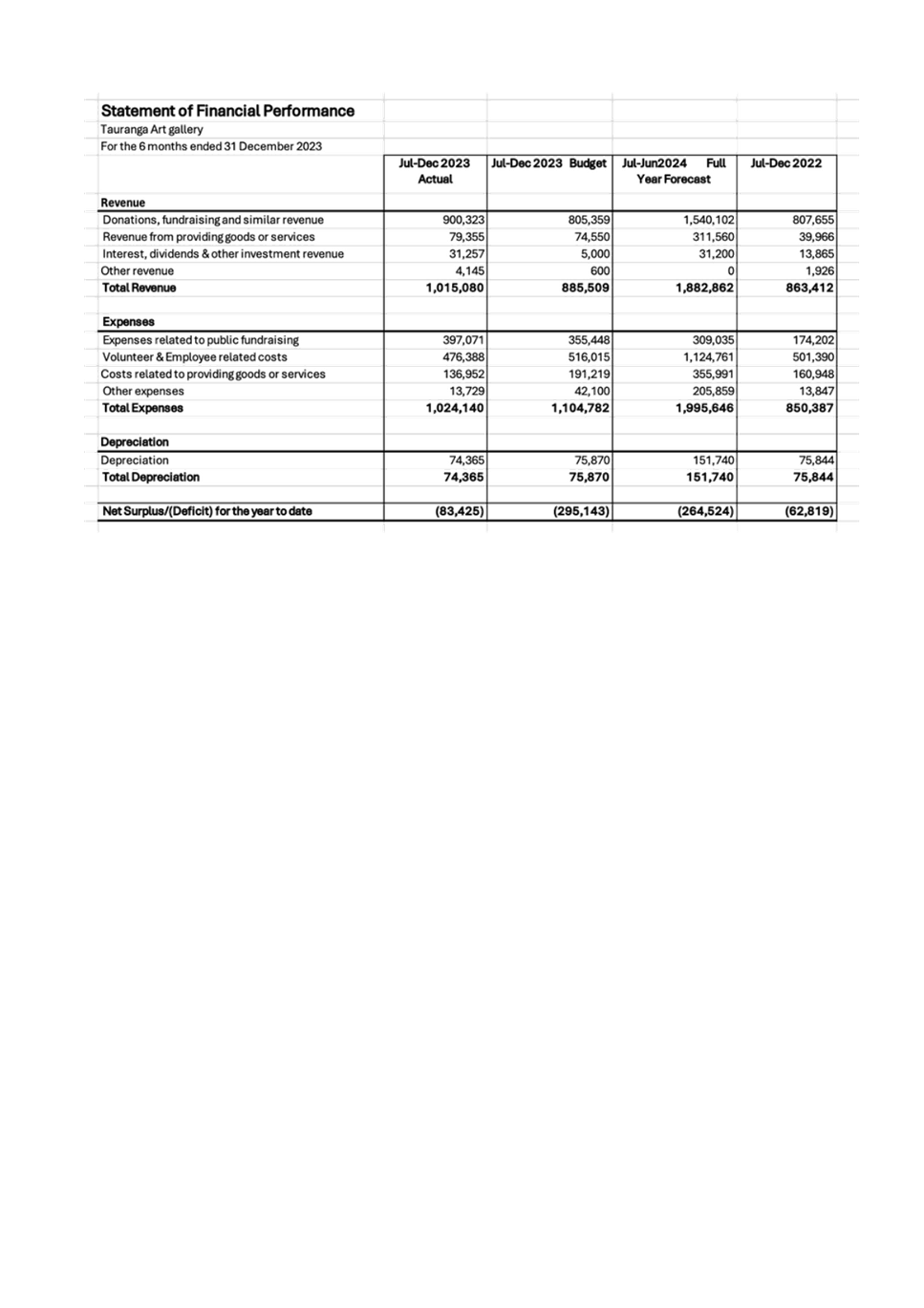




|
Ordinary
Council meeting Agenda
|
8
April 2024
|






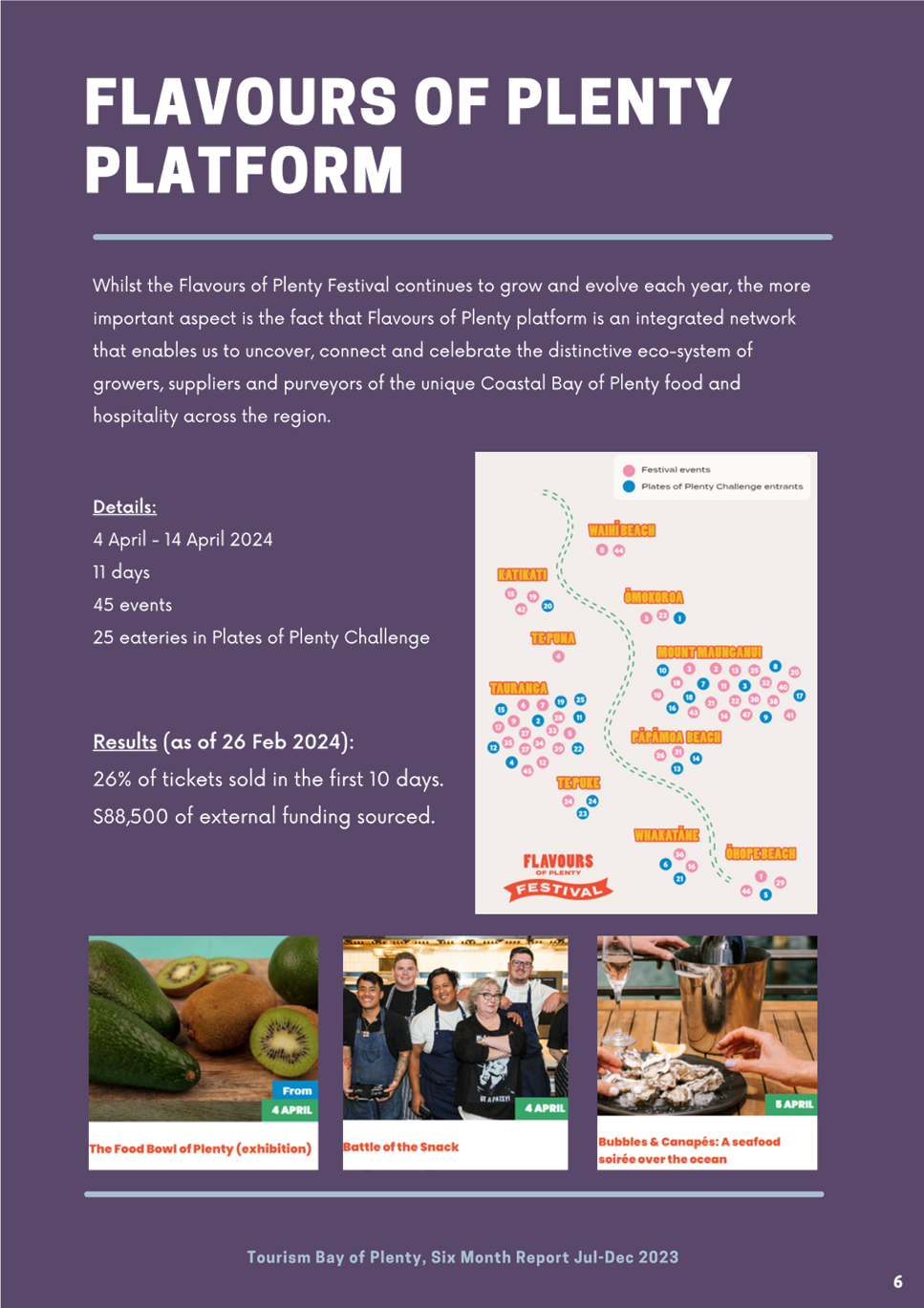
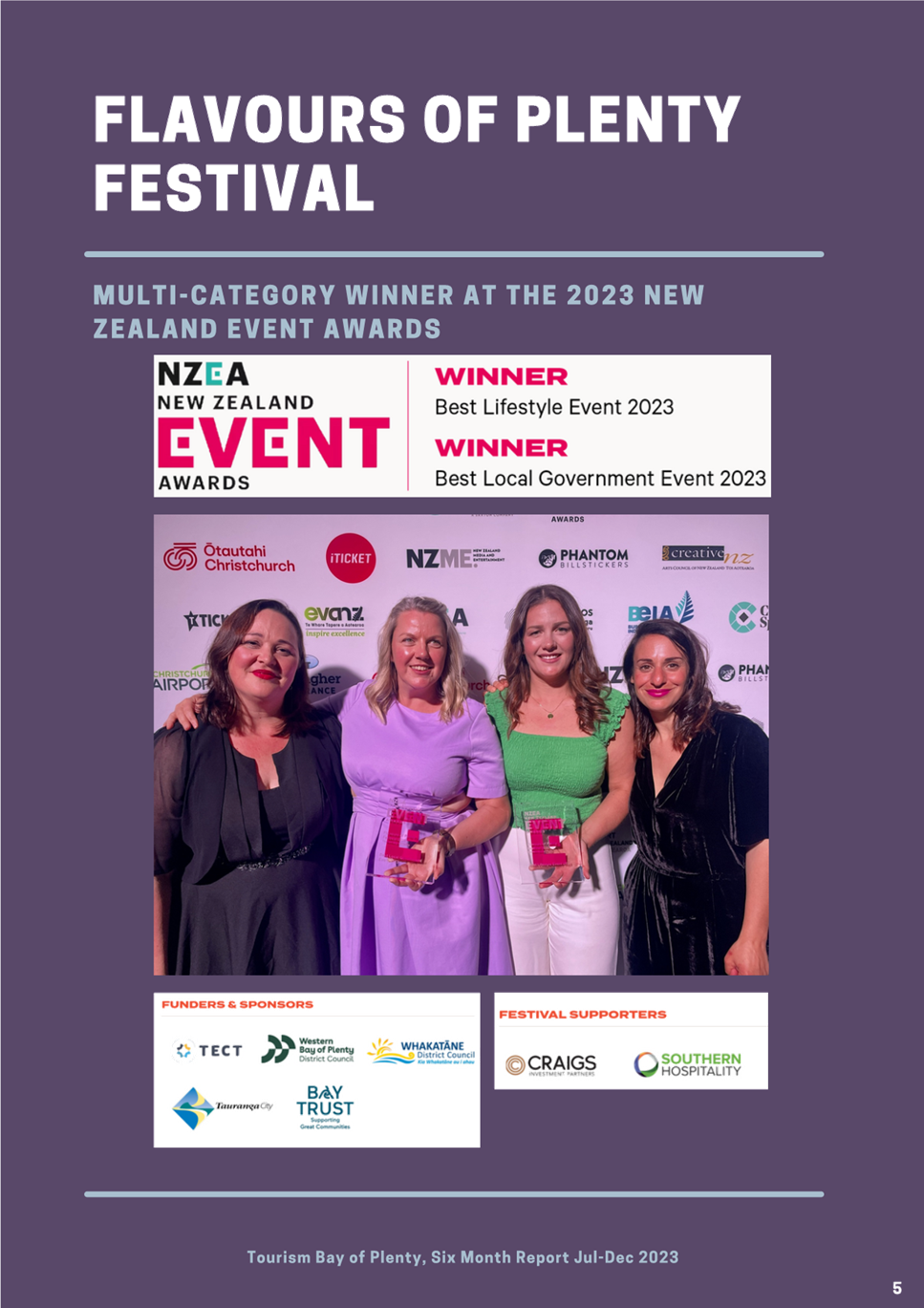
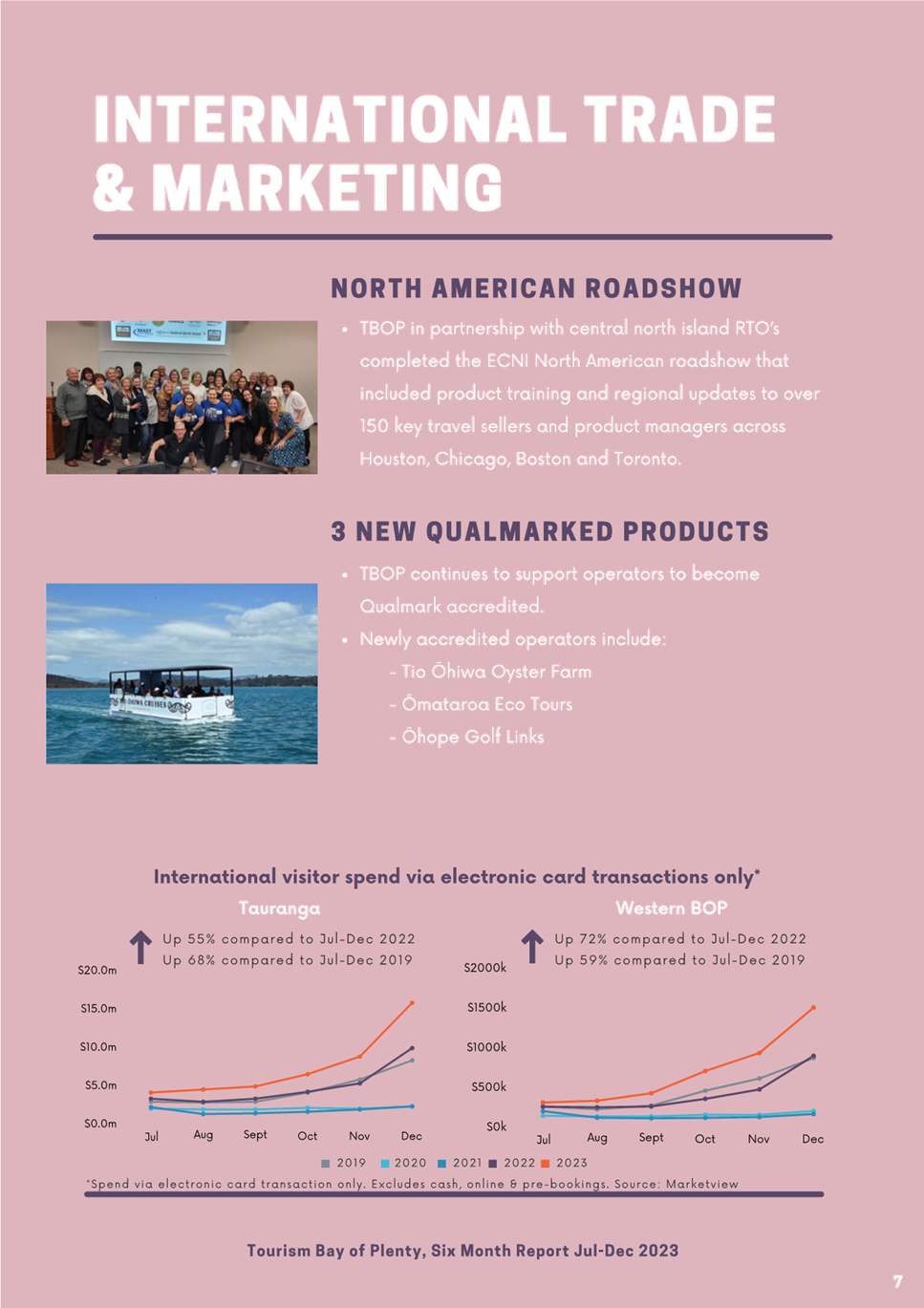
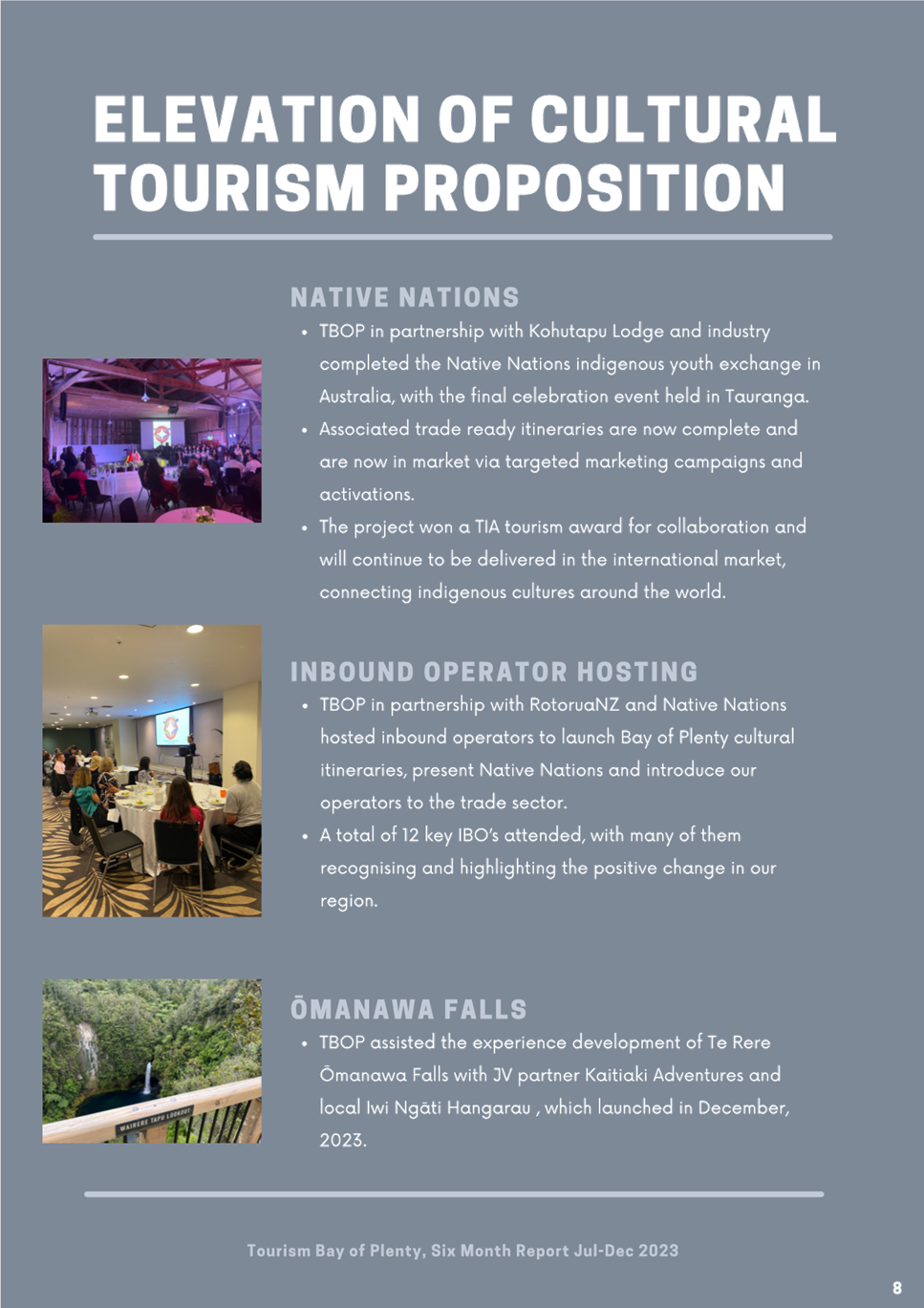
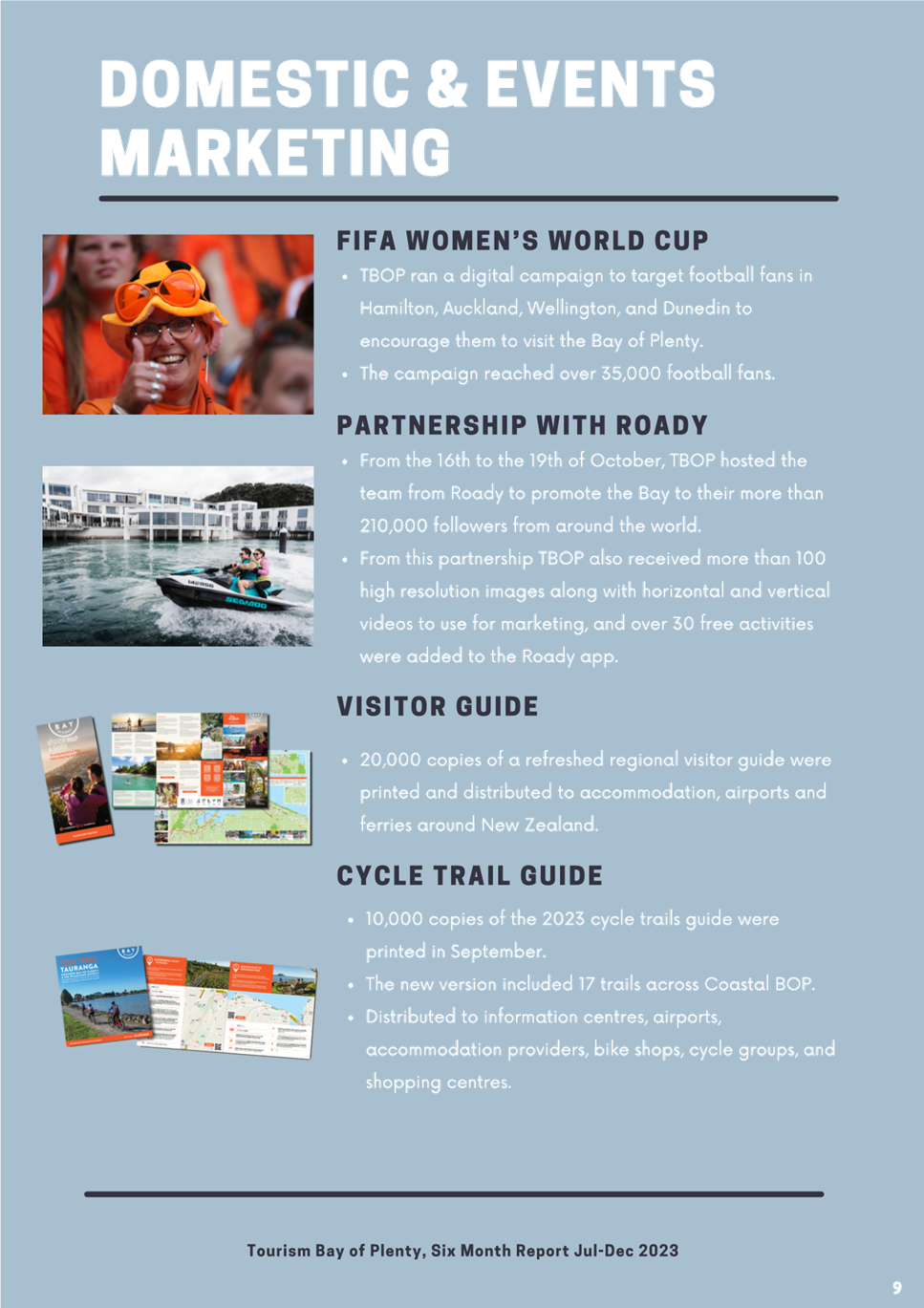
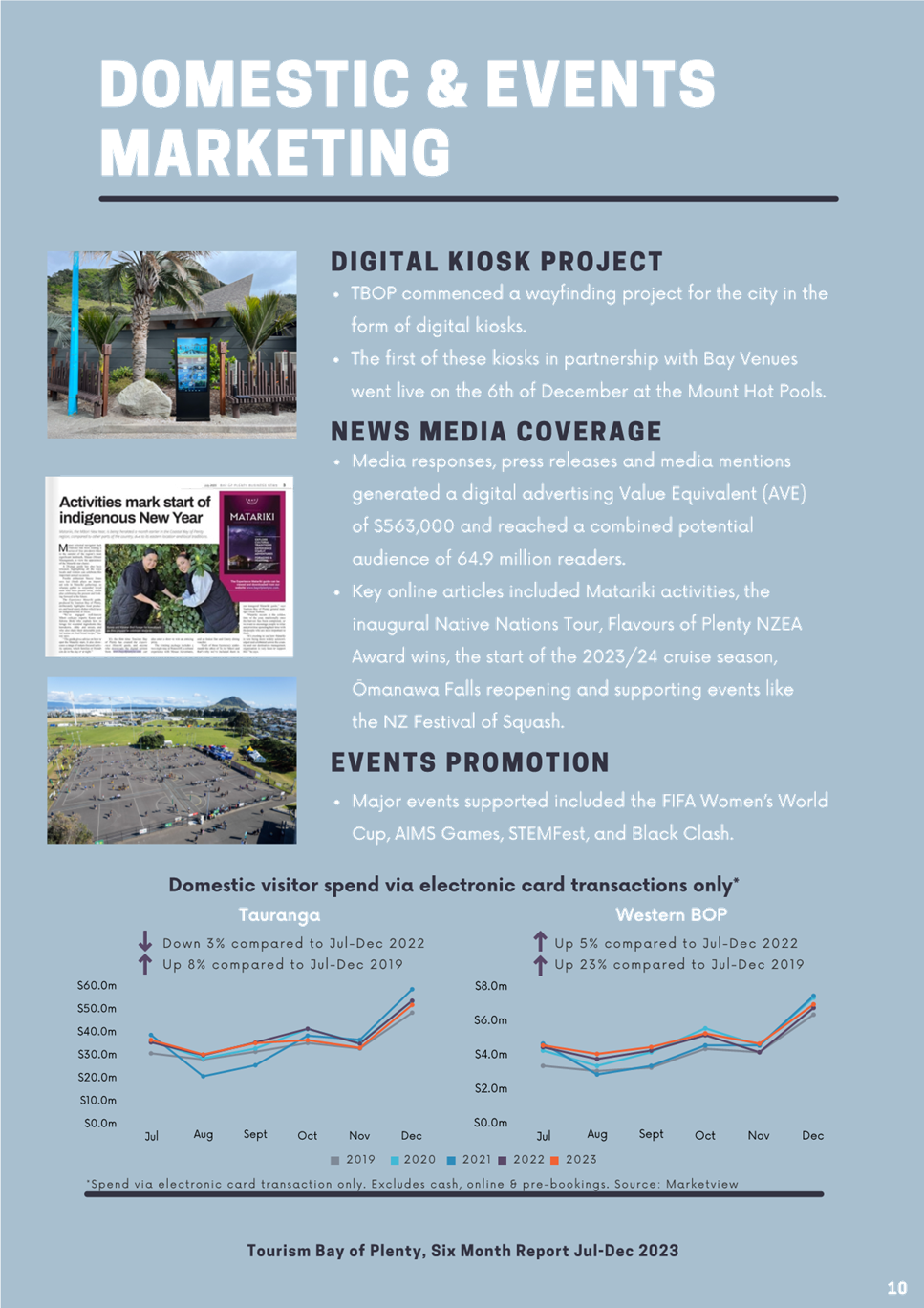
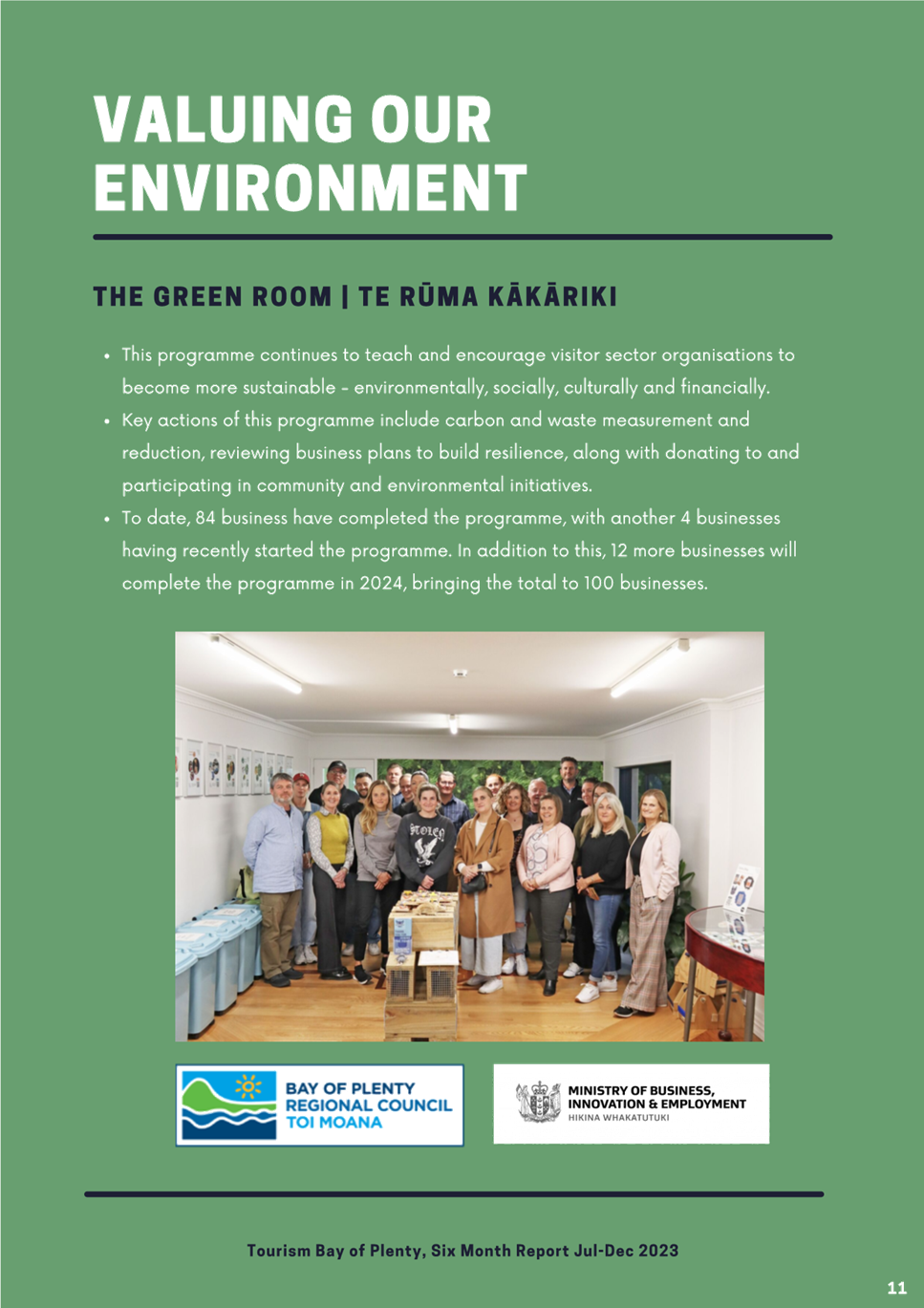
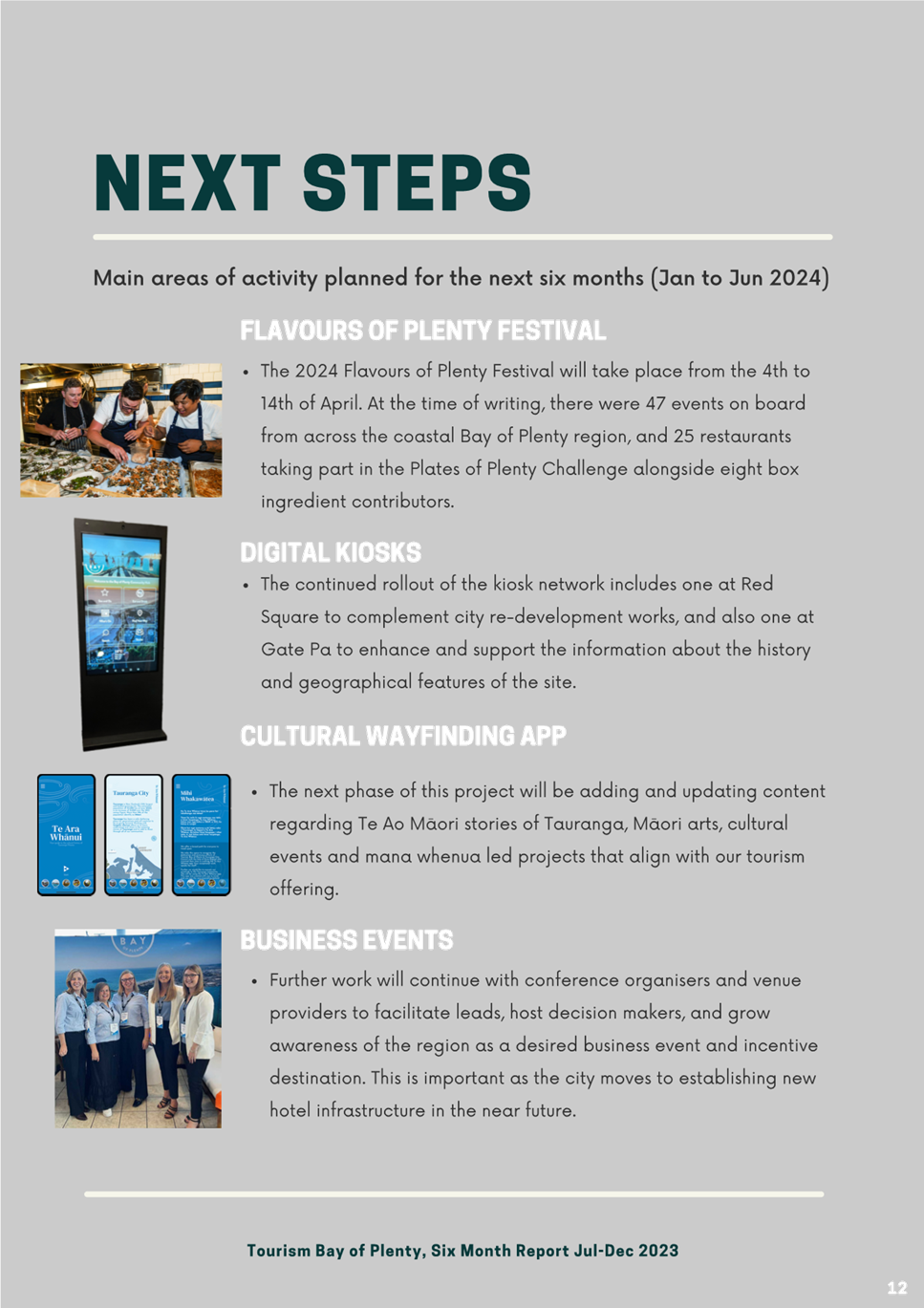
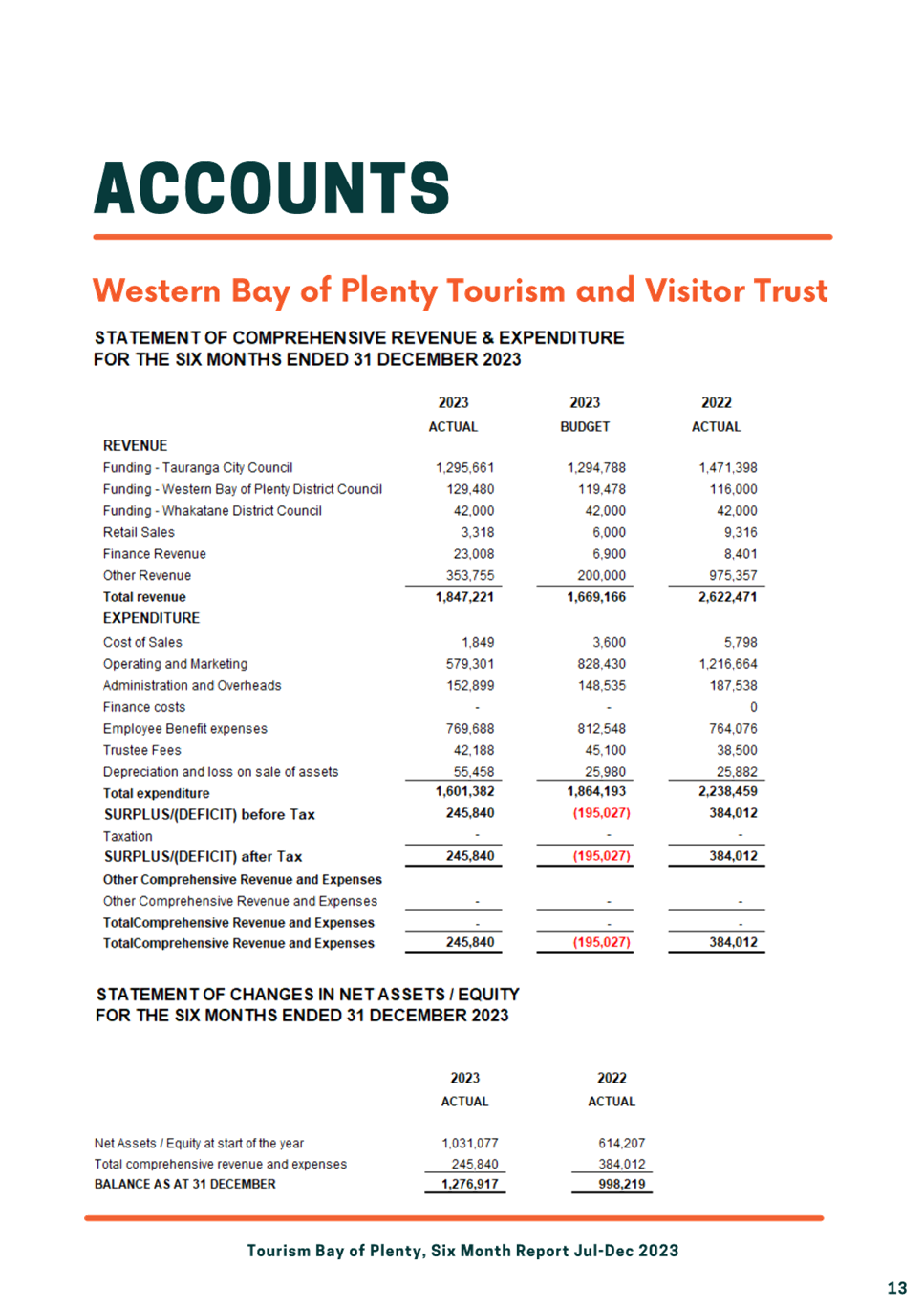
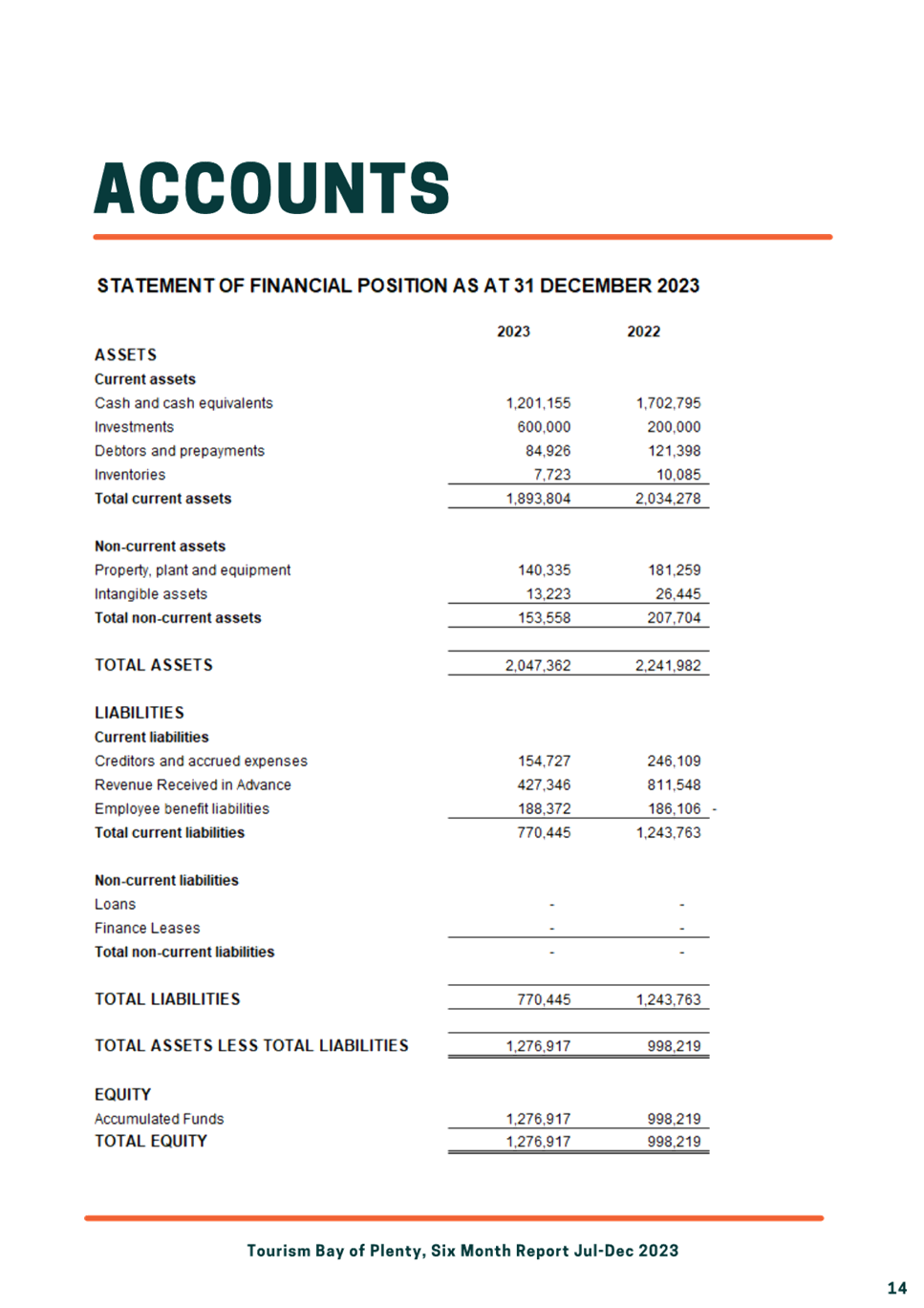
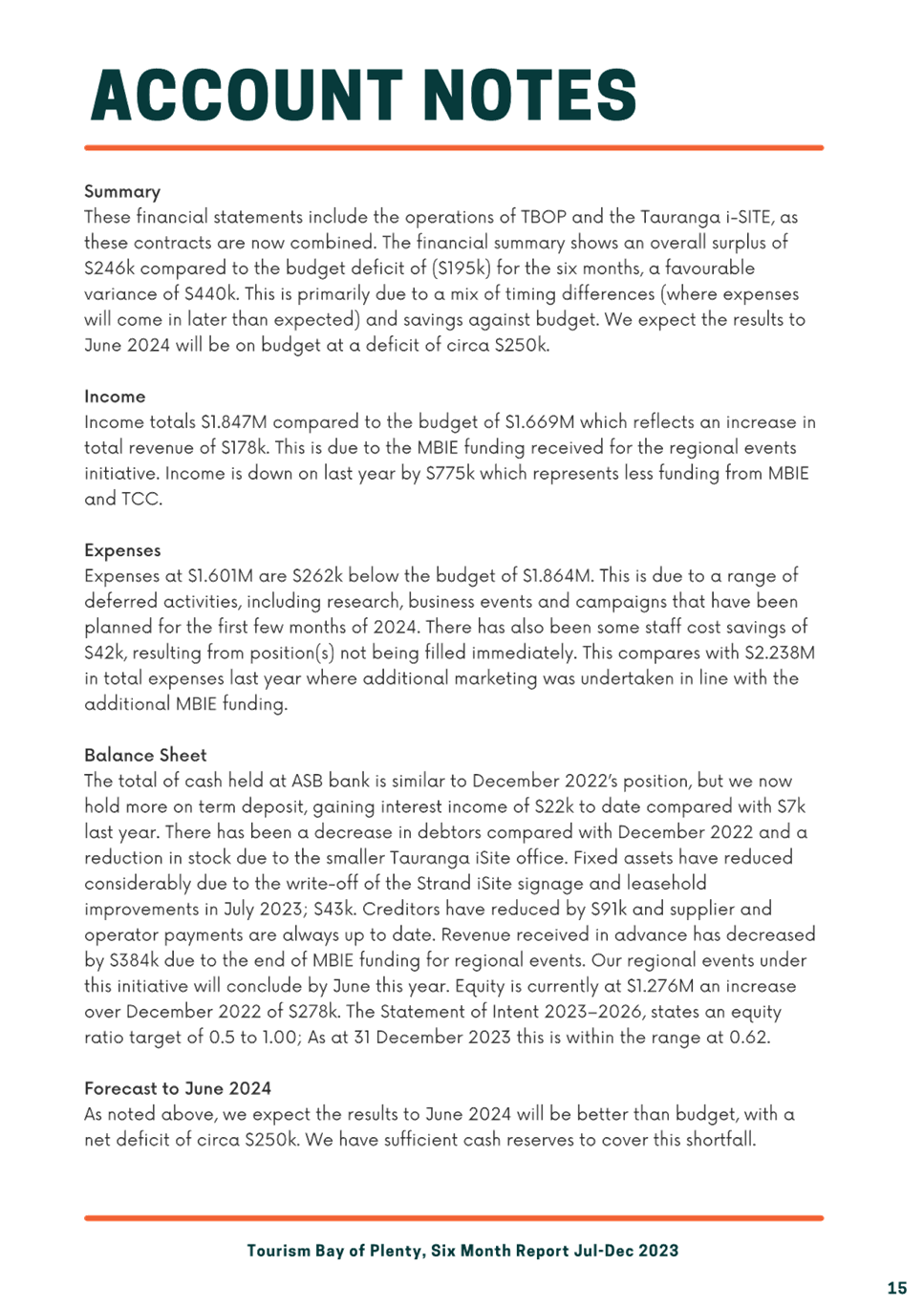
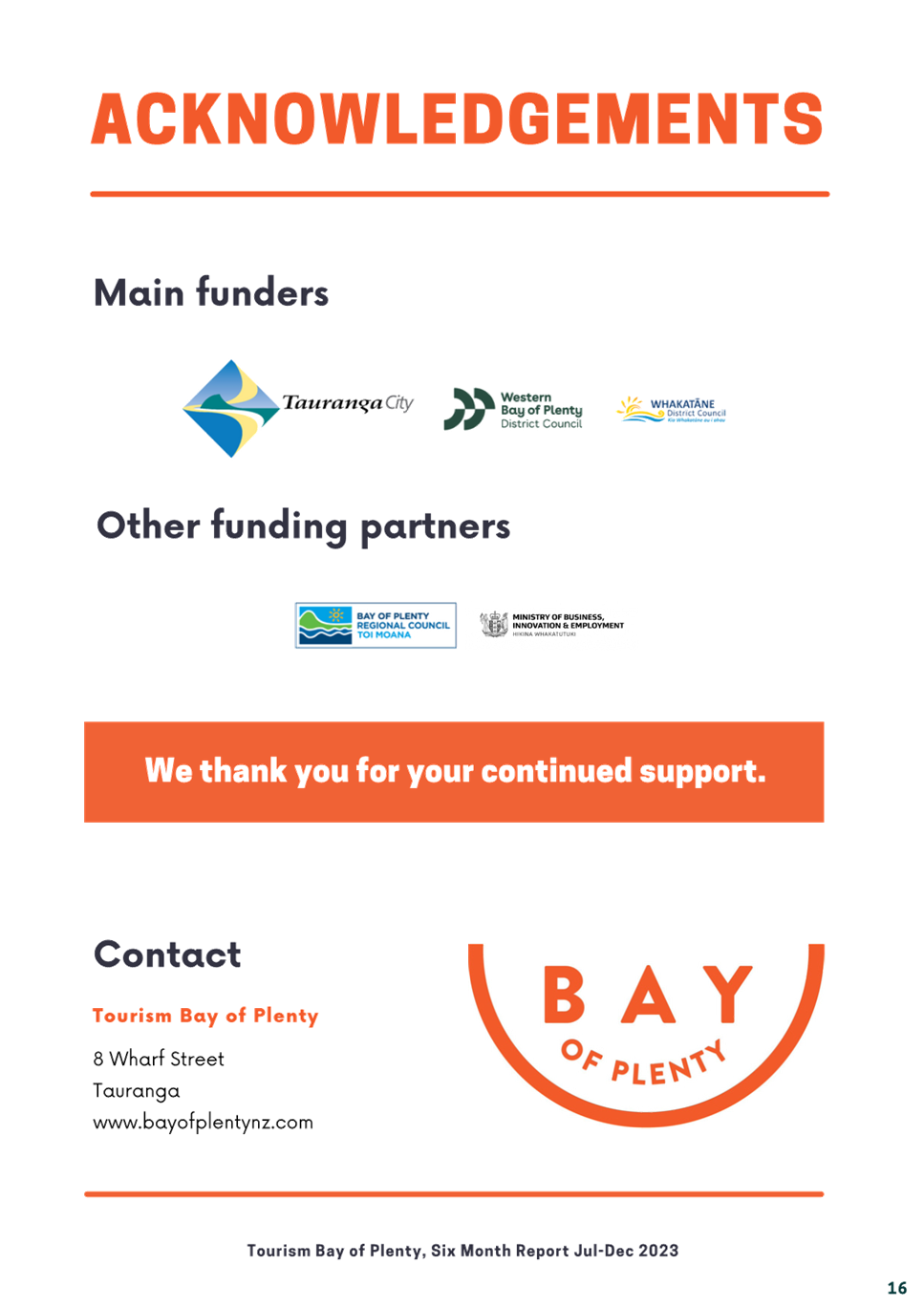
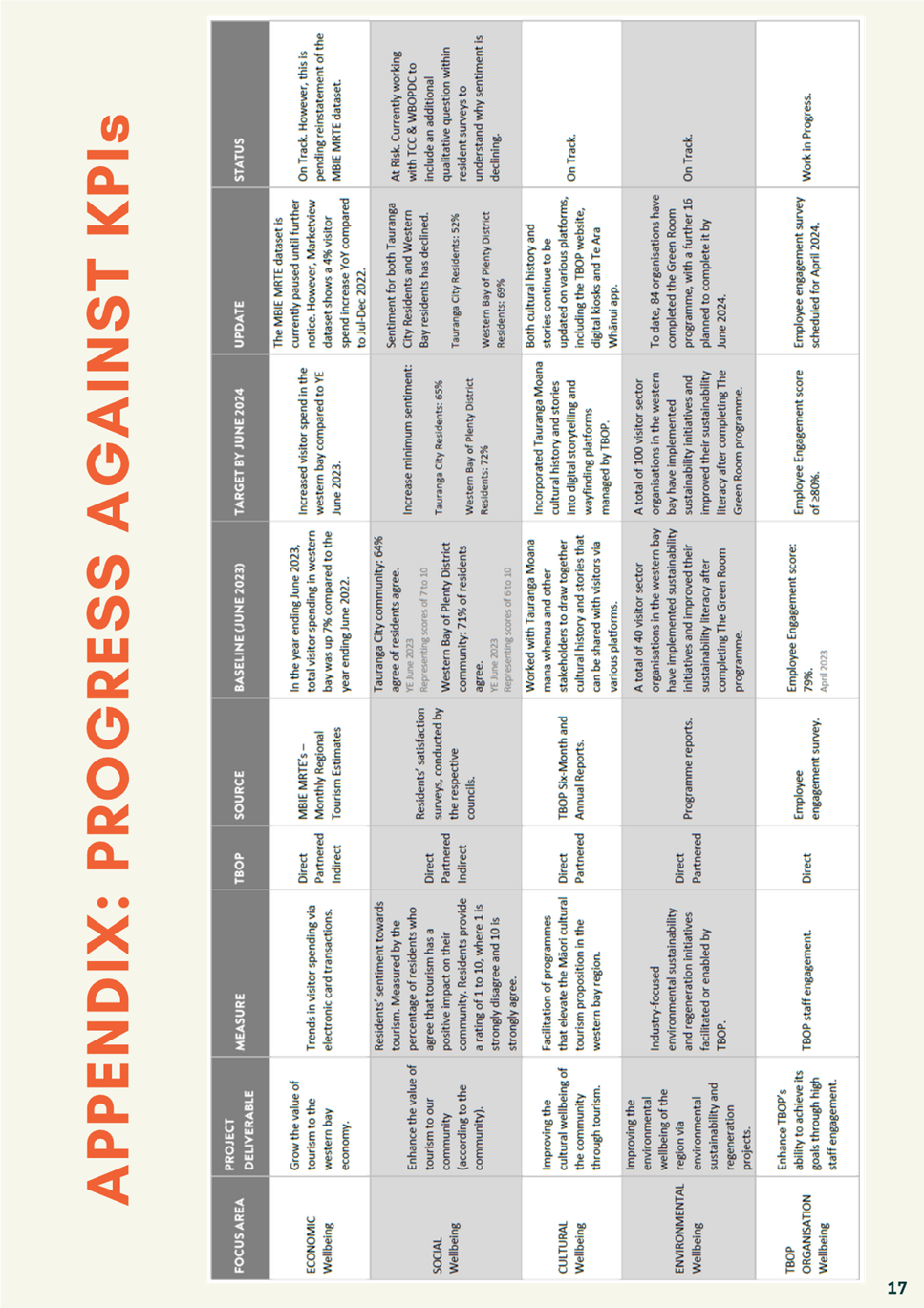
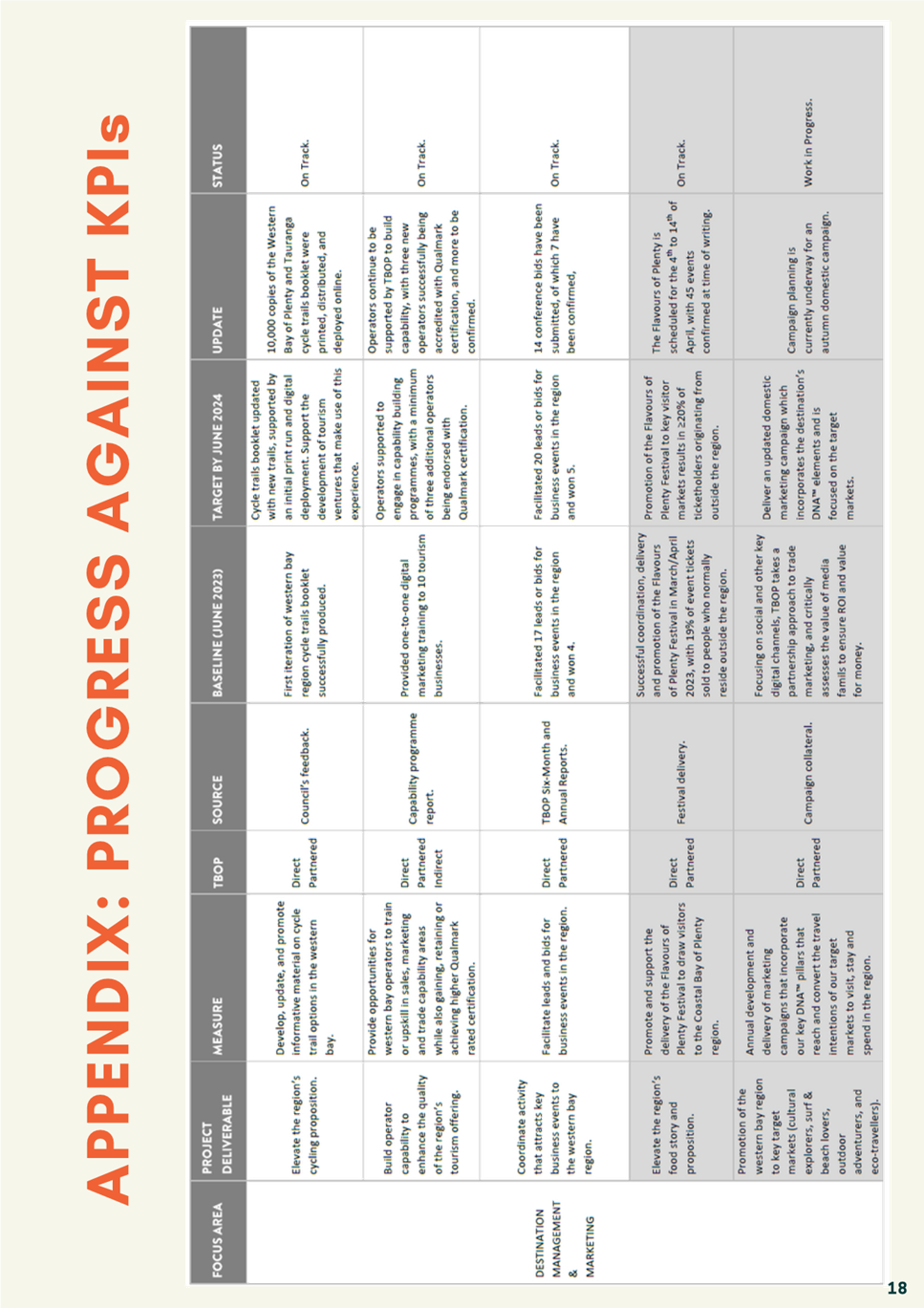
|
Ordinary
Council meeting Agenda
|
8
April 2024
|
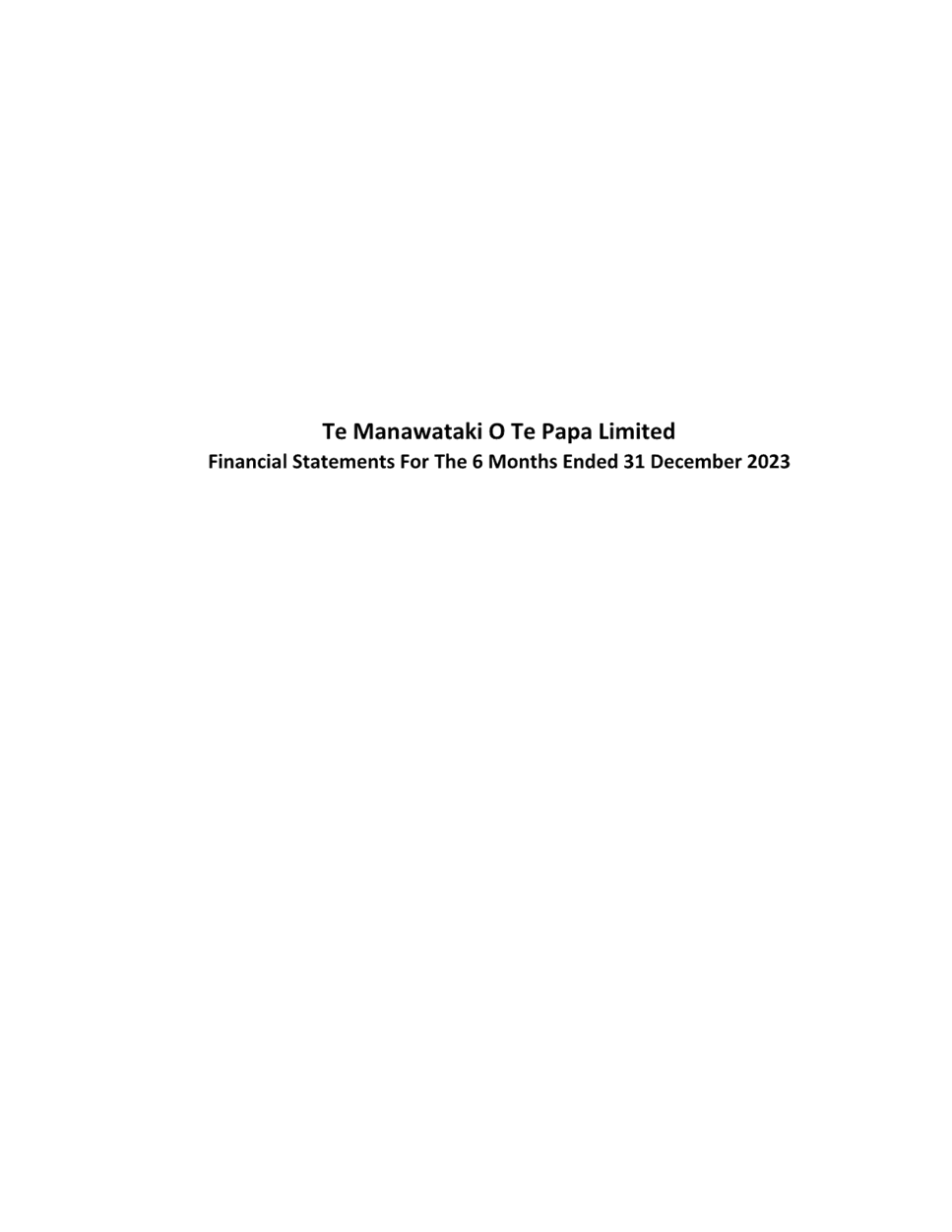
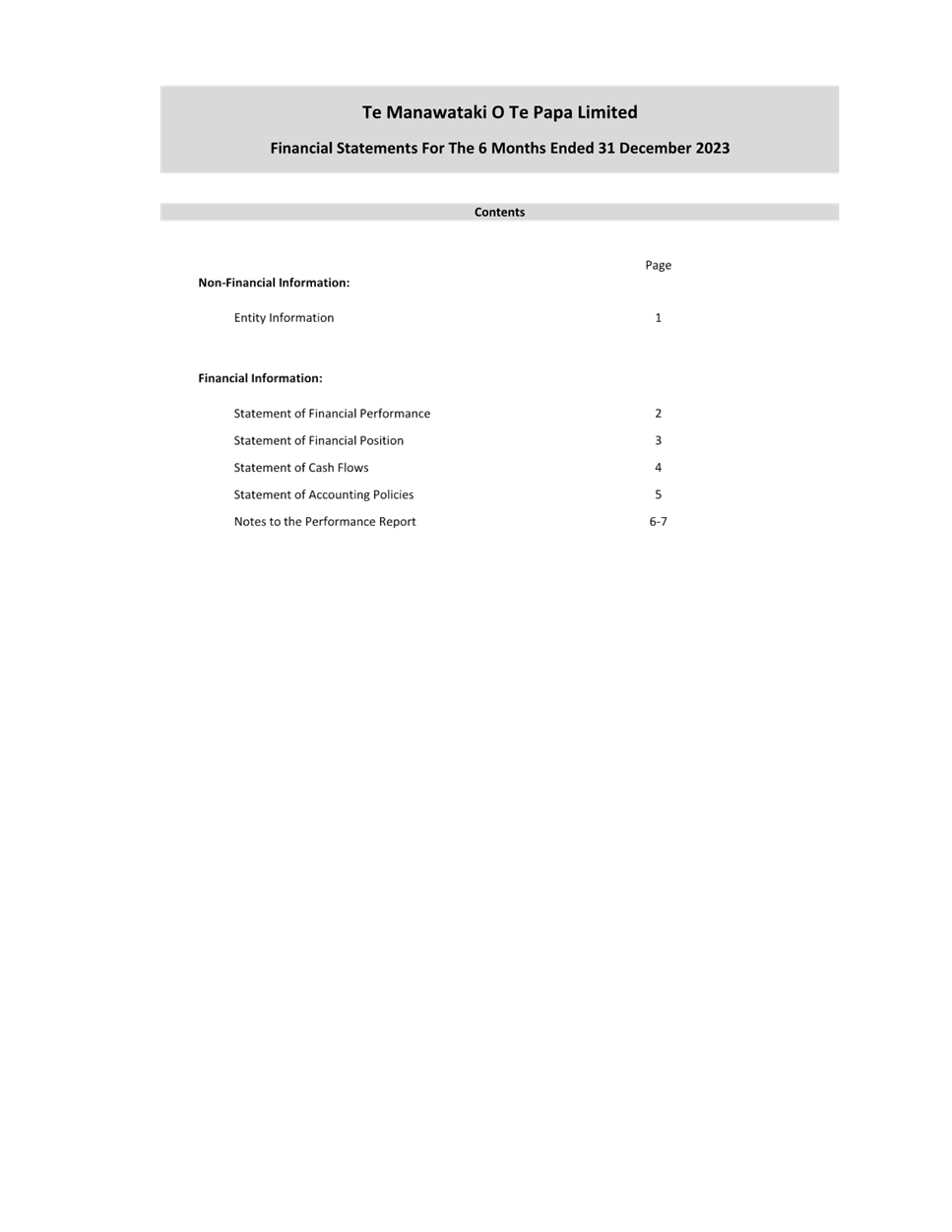
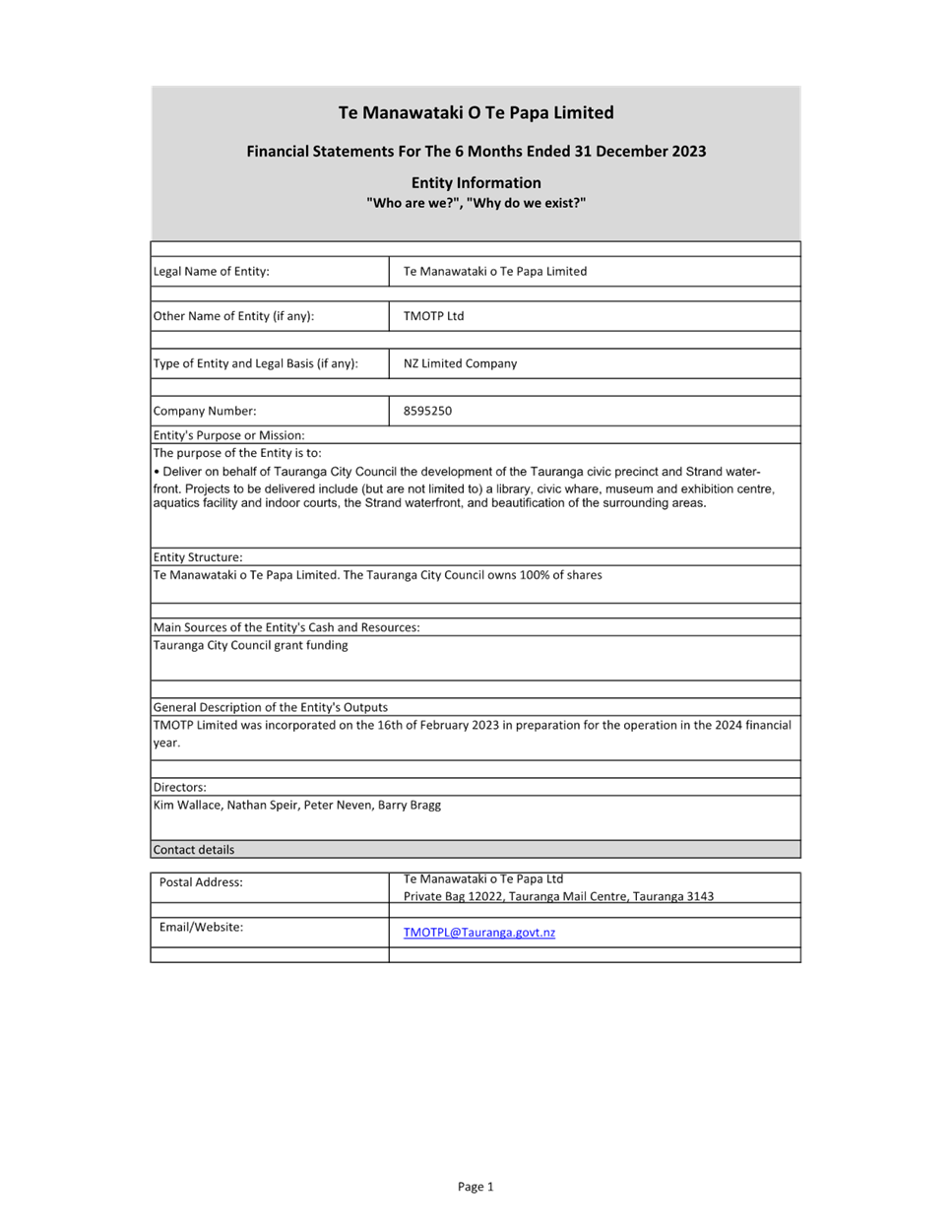
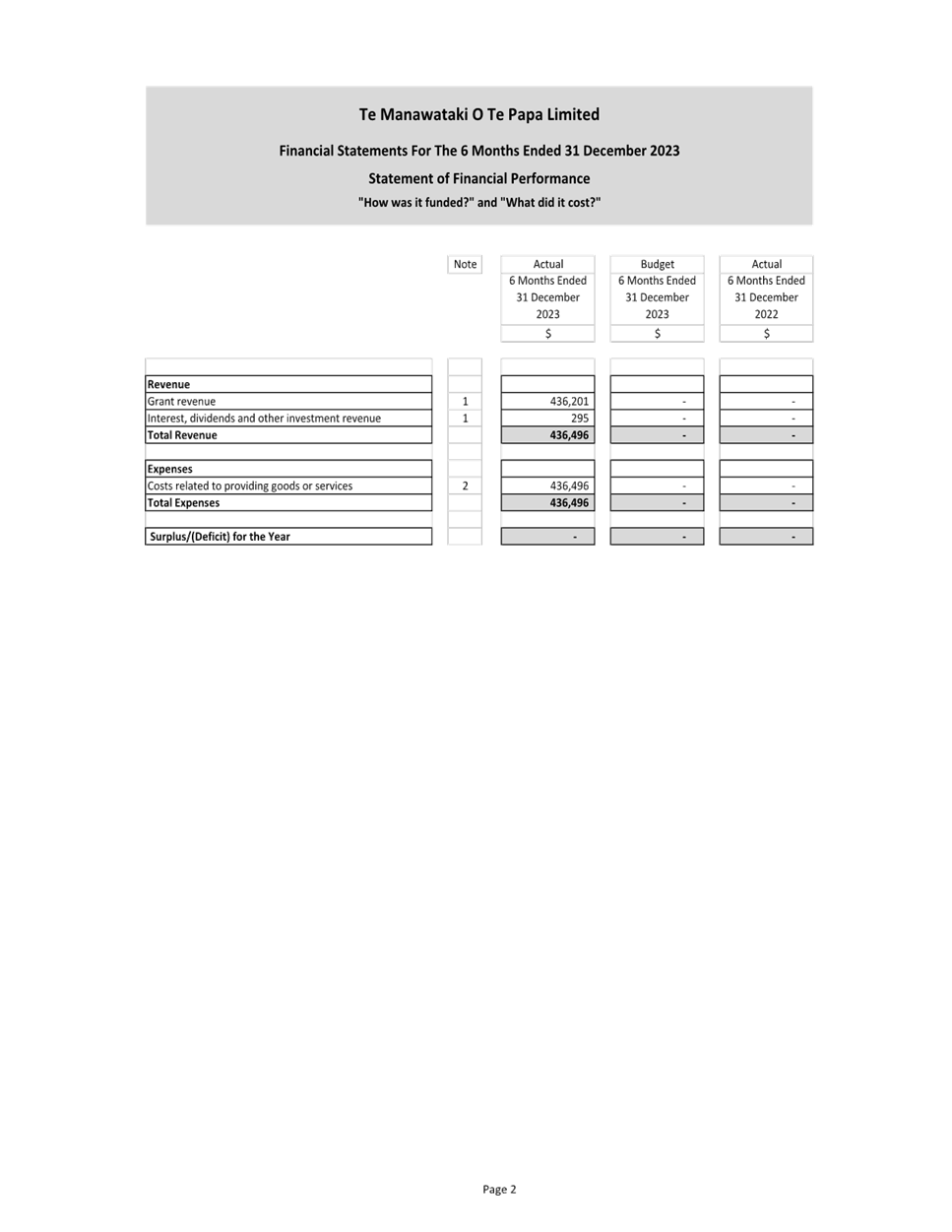
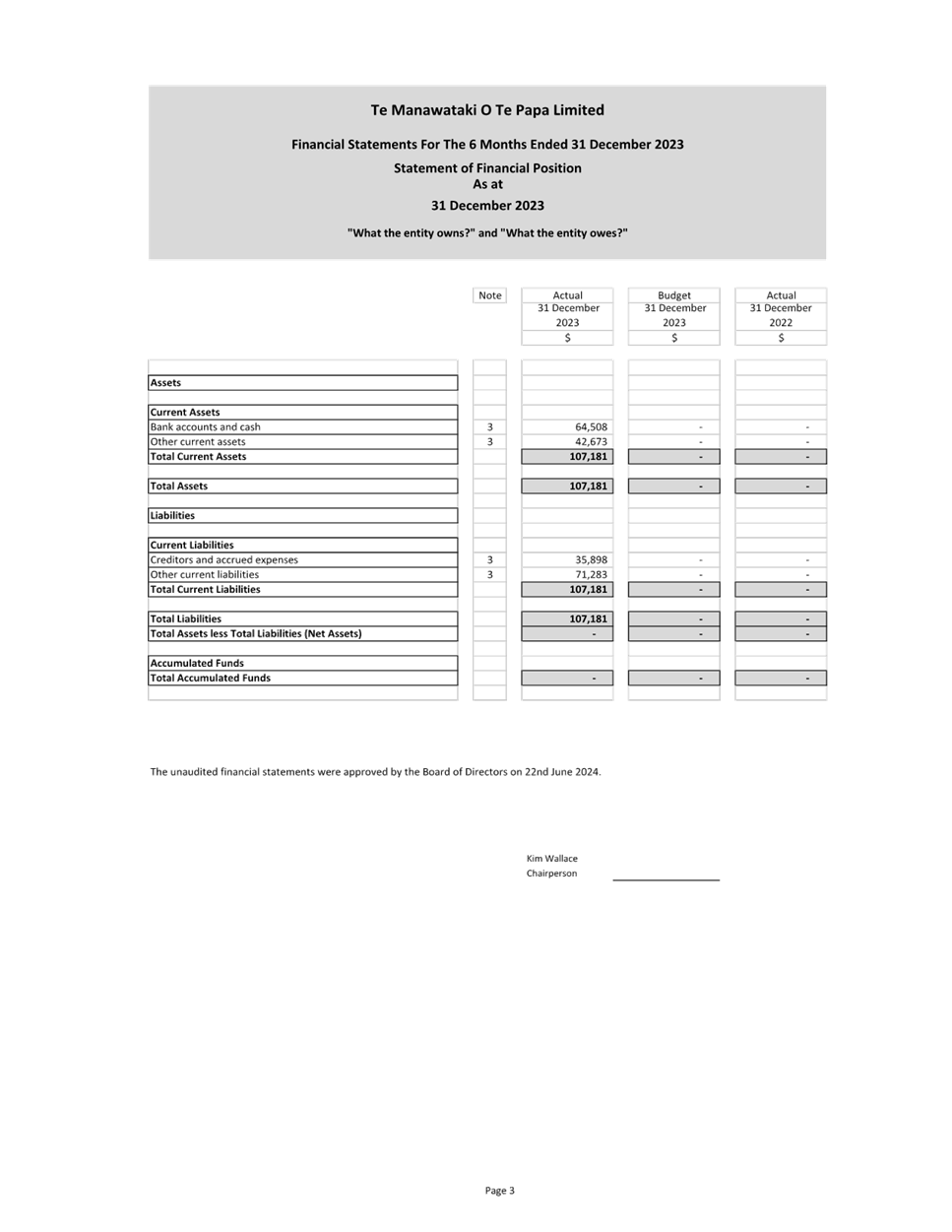
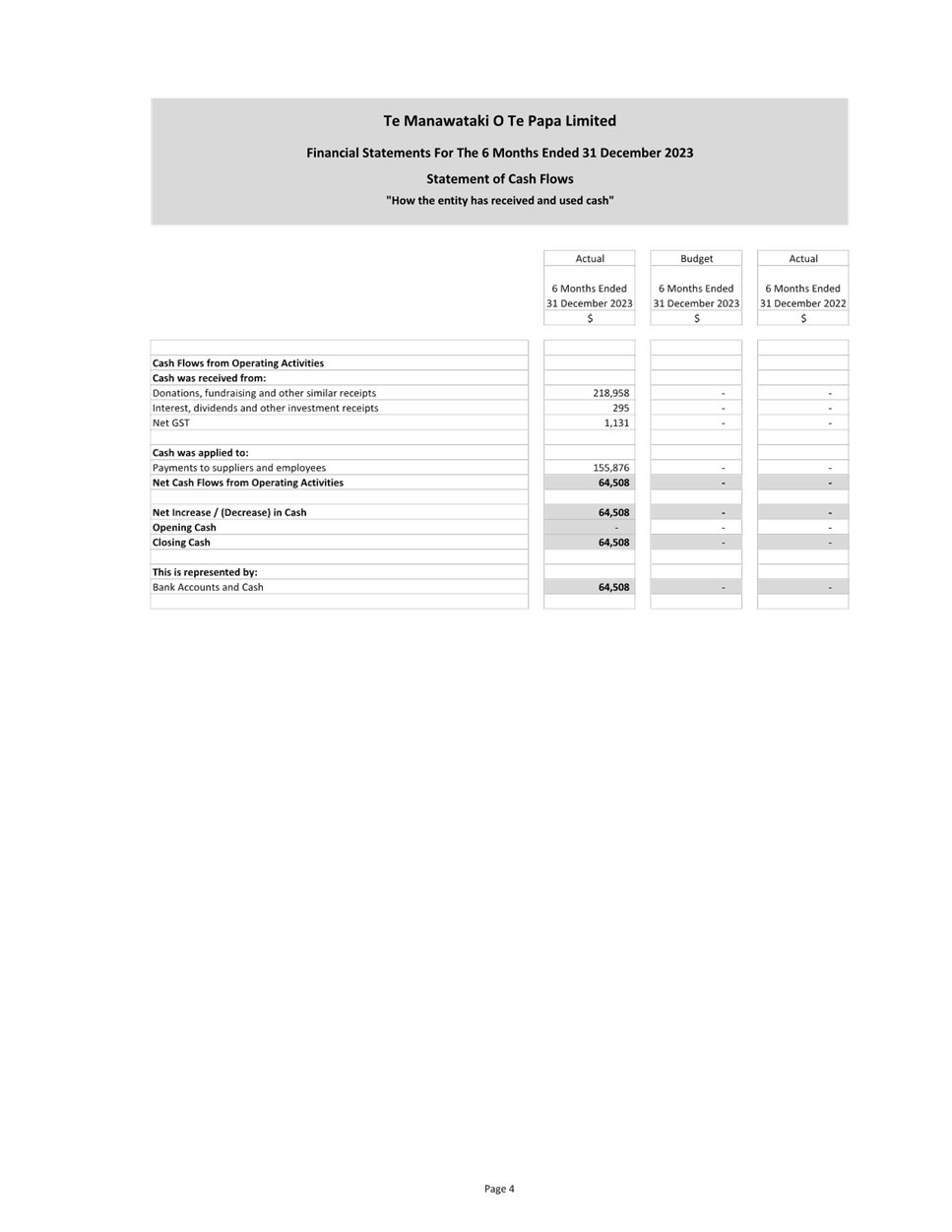
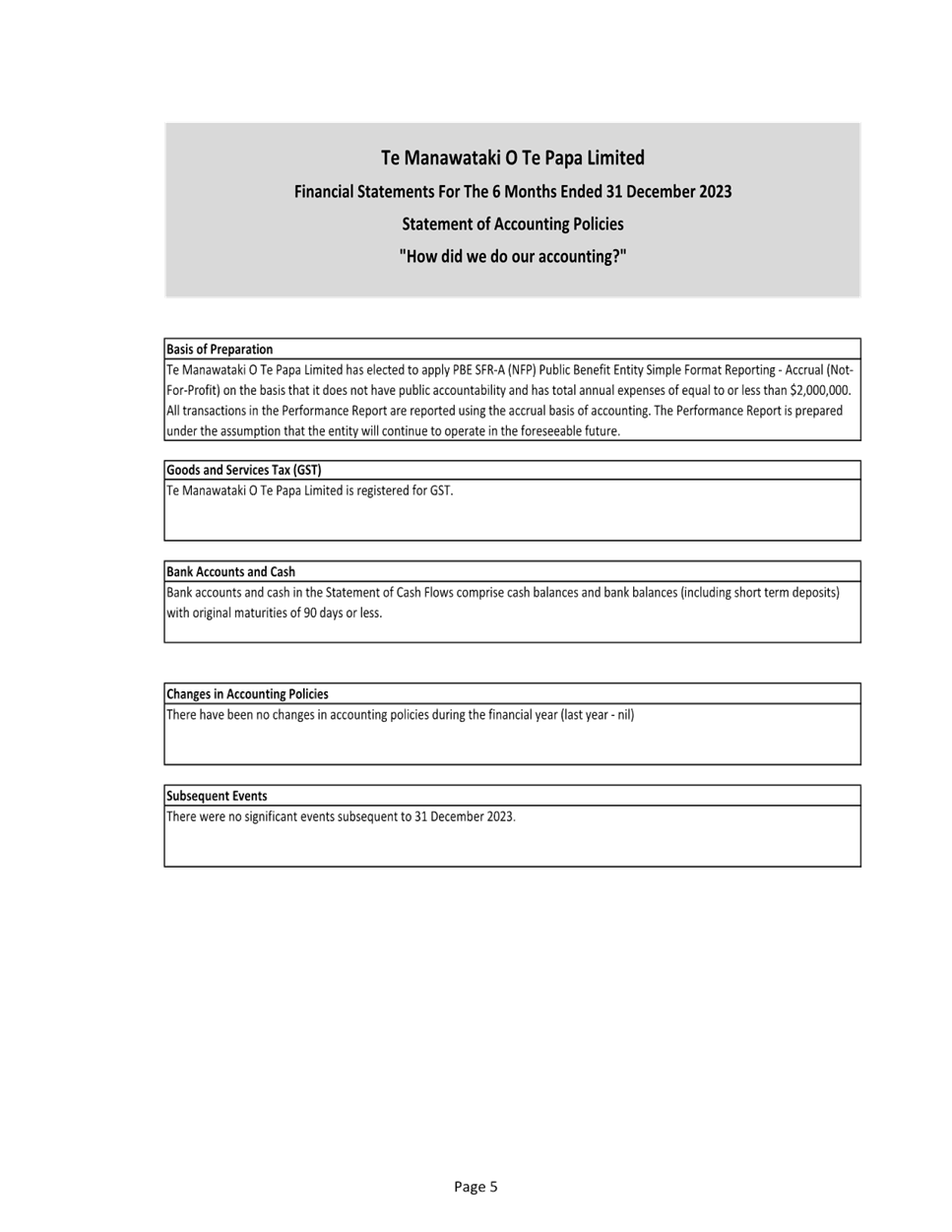
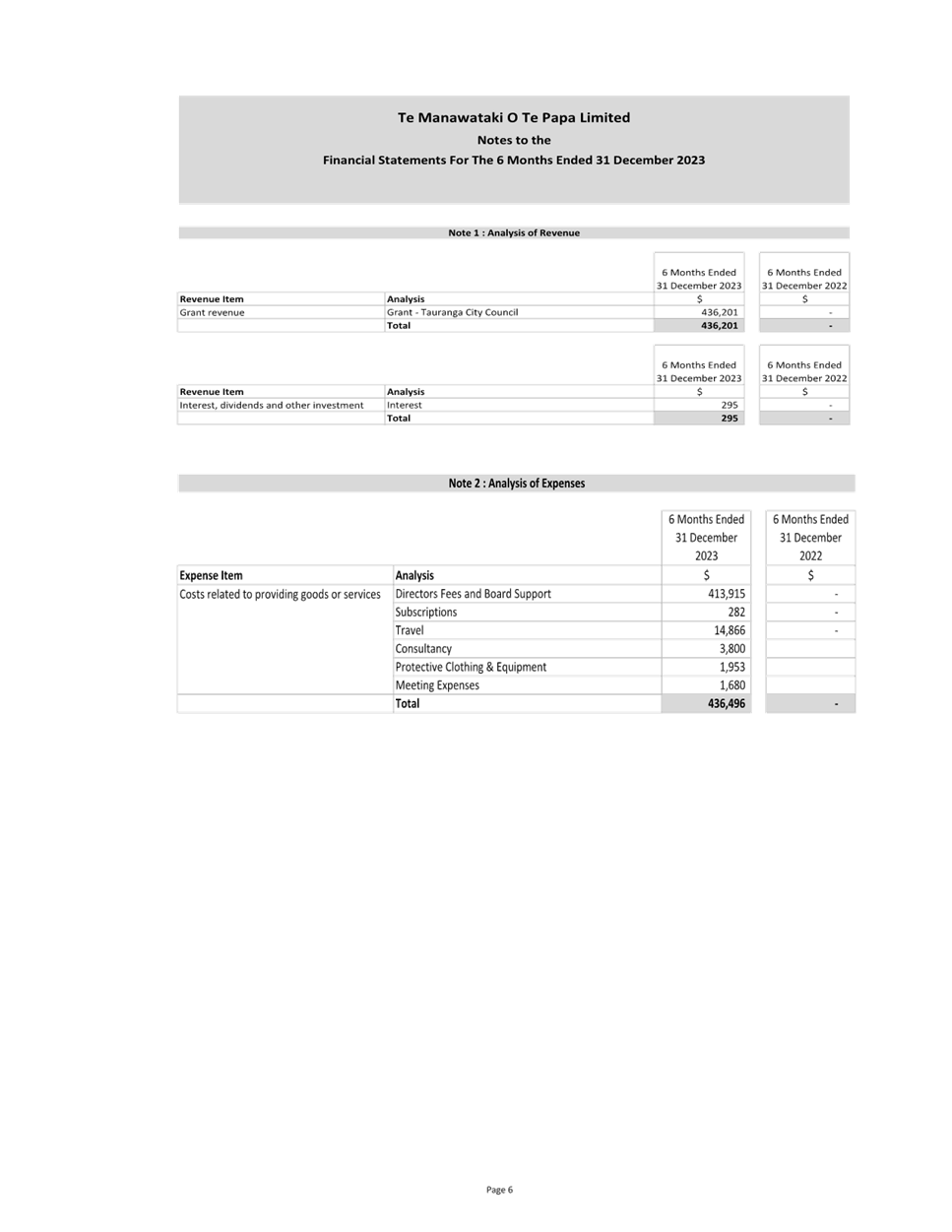
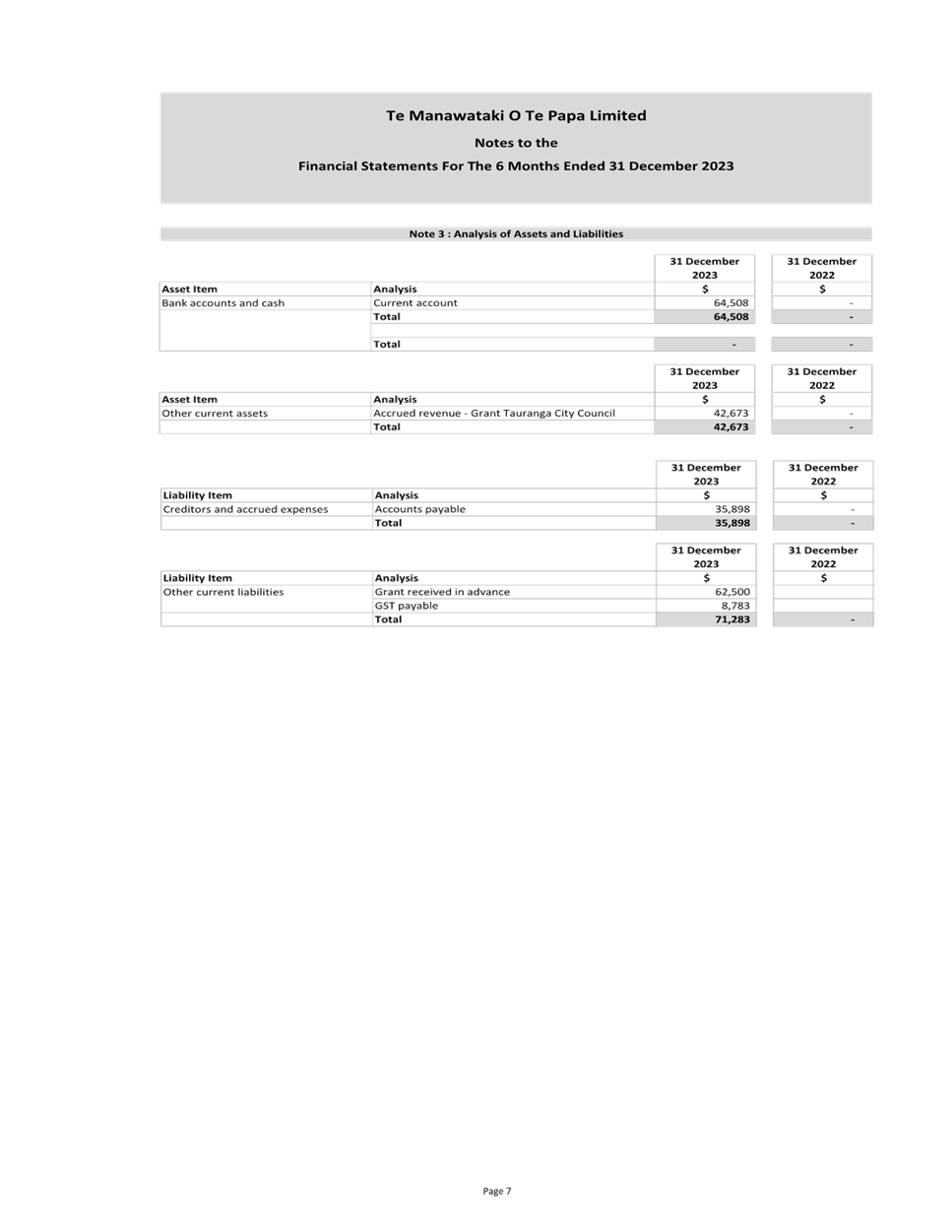
|
Ordinary
Council meeting Agenda
|
8
April 2024
|


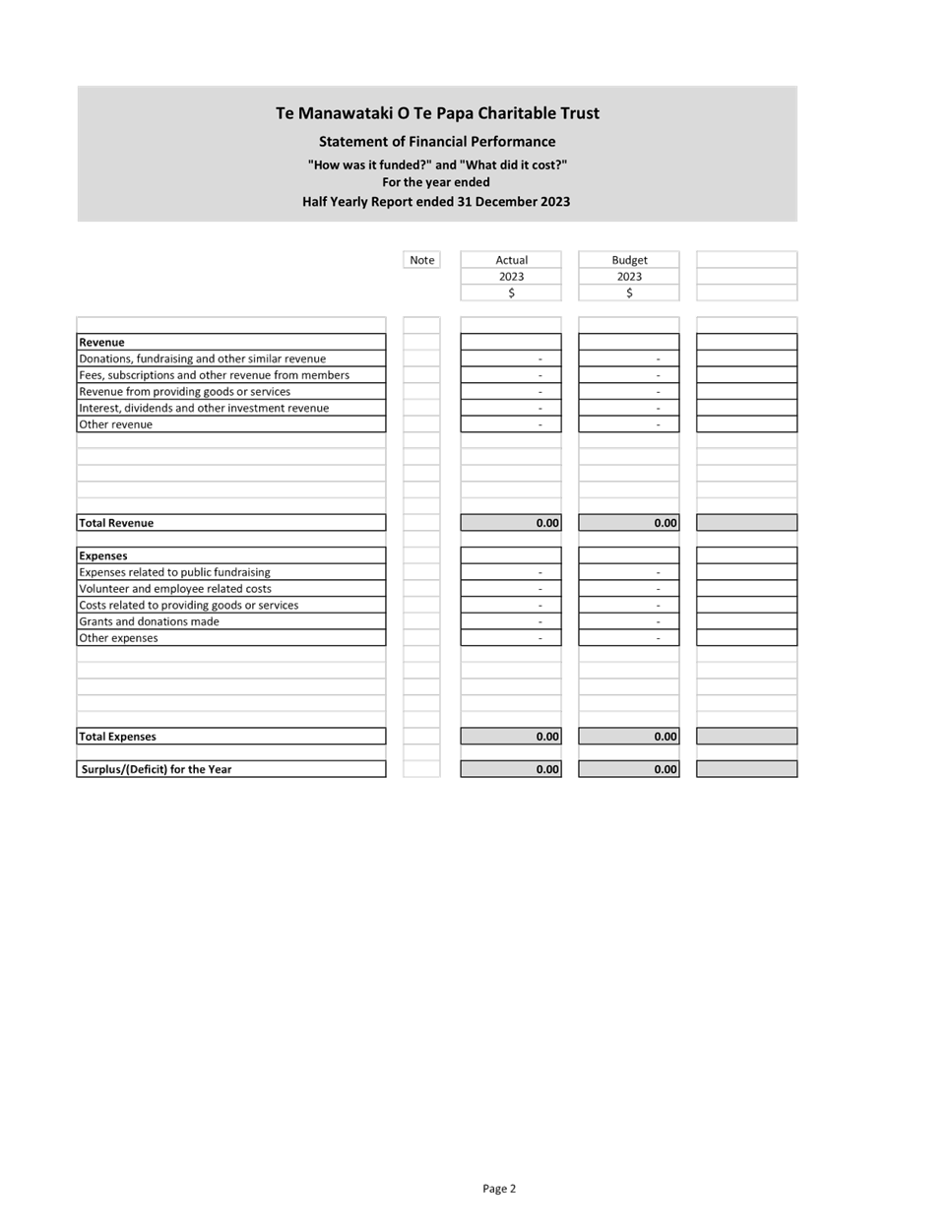
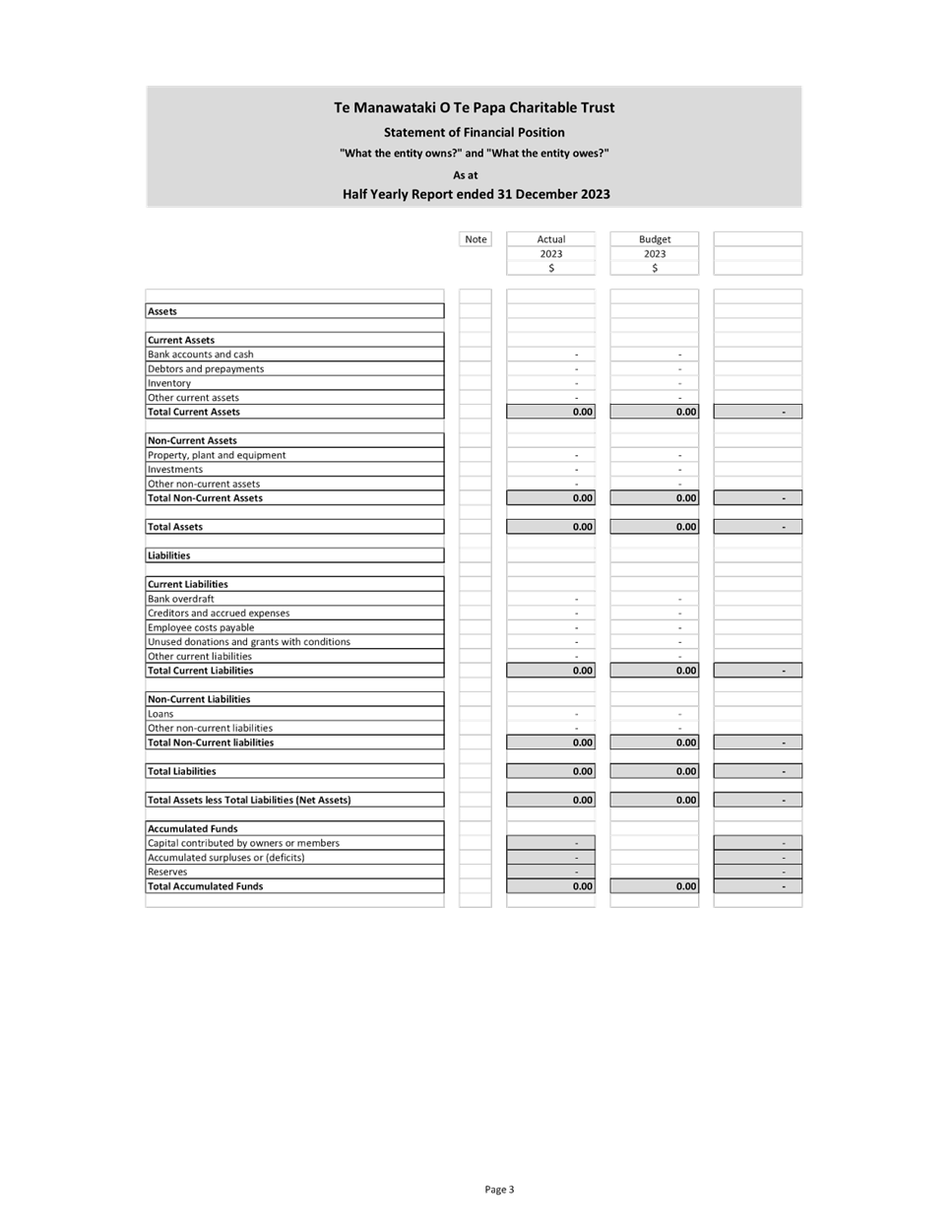
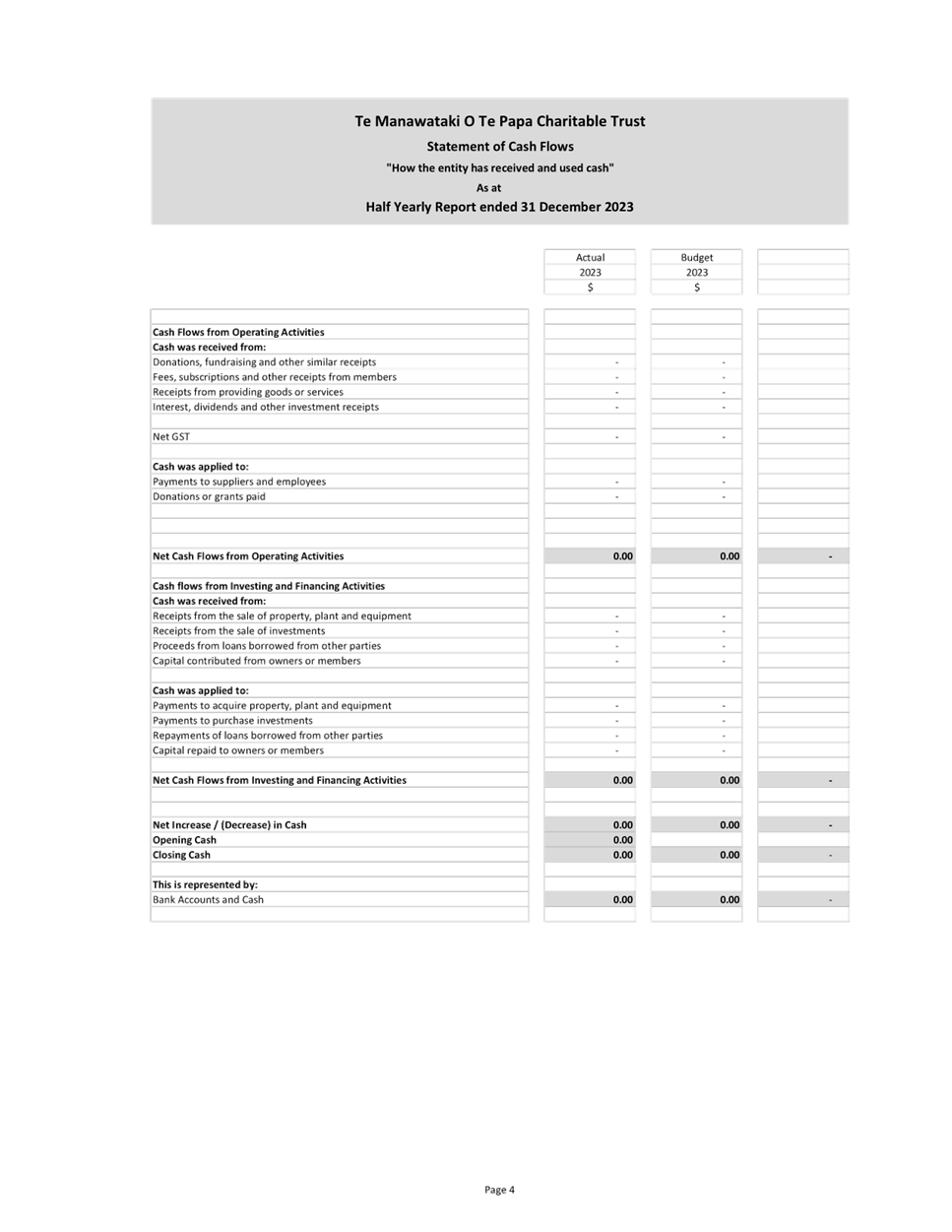
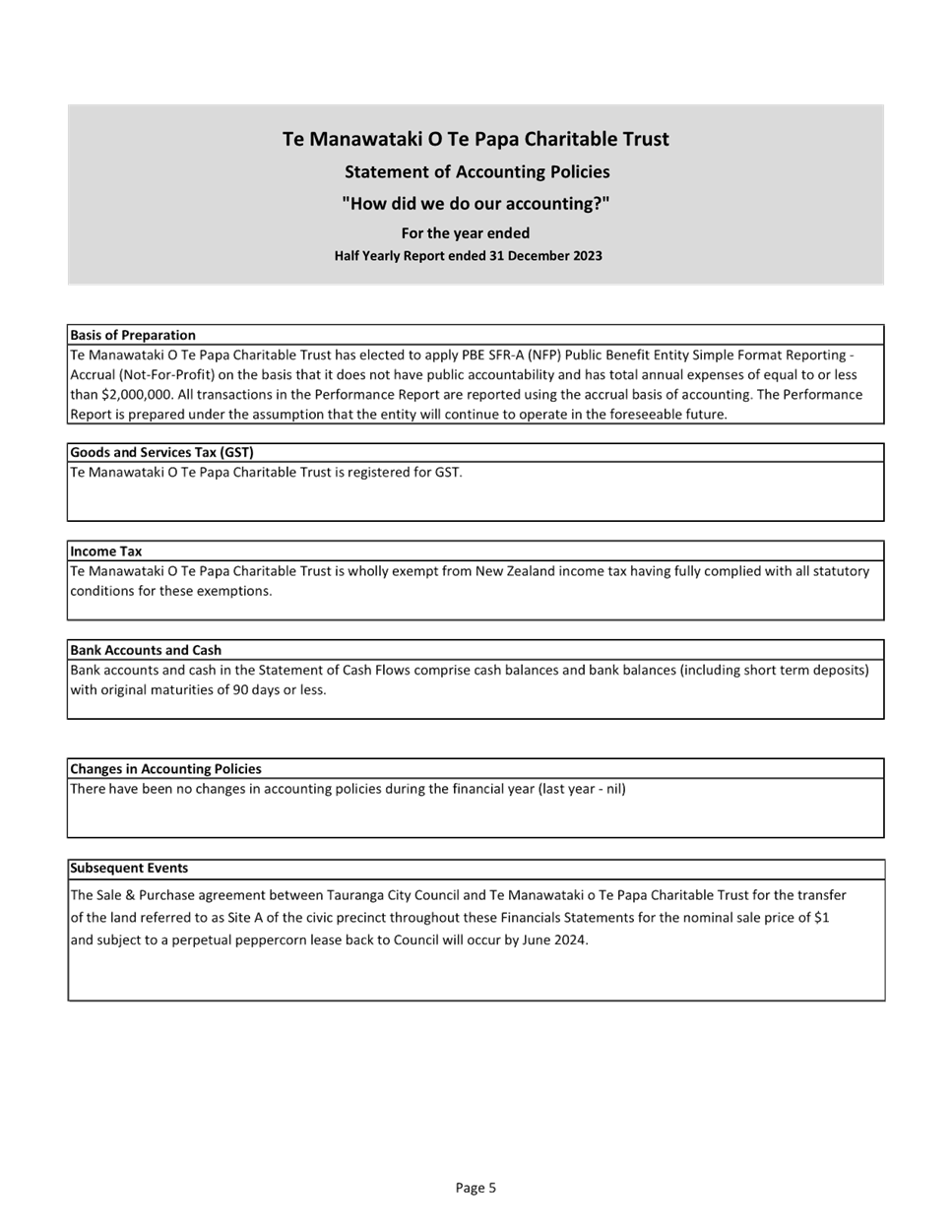
|
Ordinary
Council meeting Agenda
|
8
April 2024
|
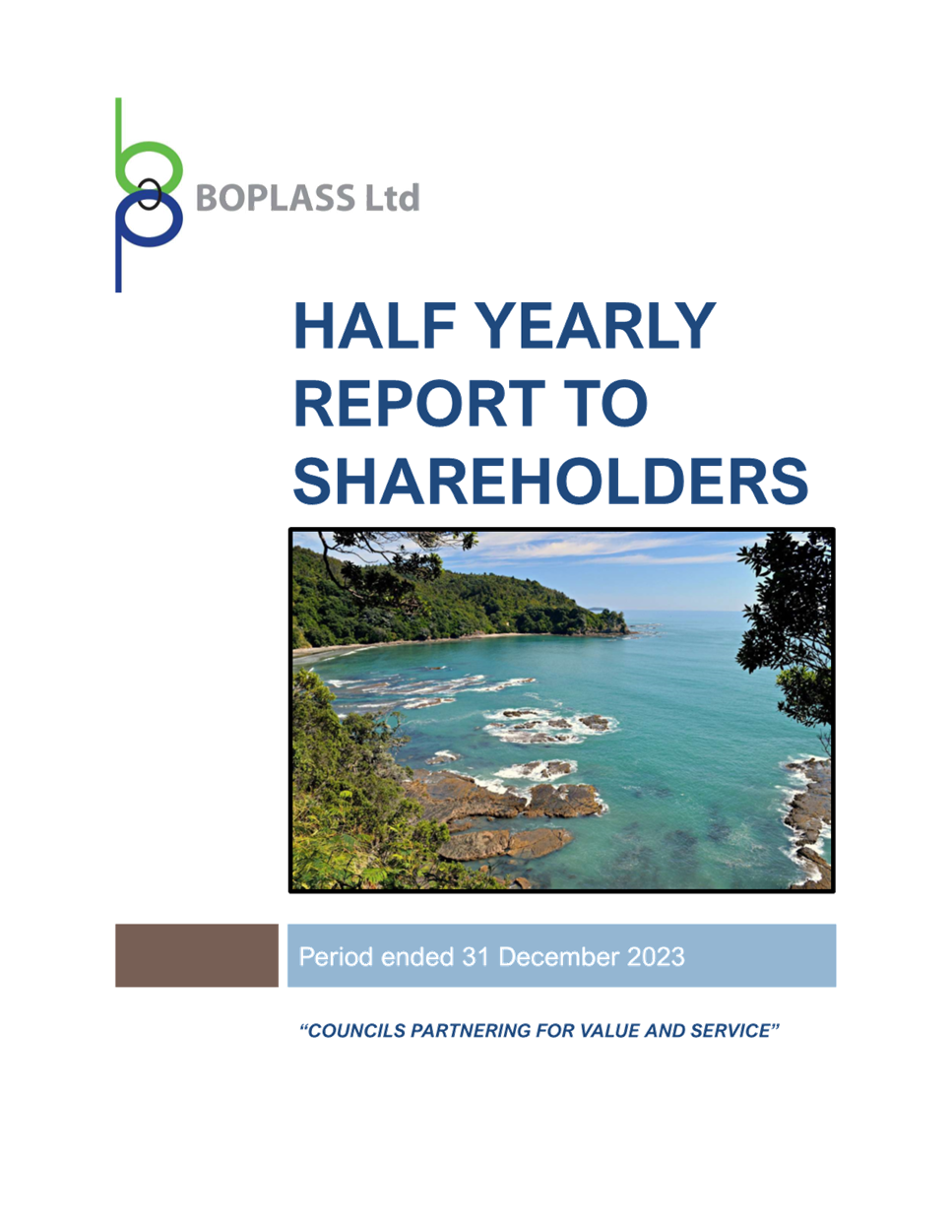
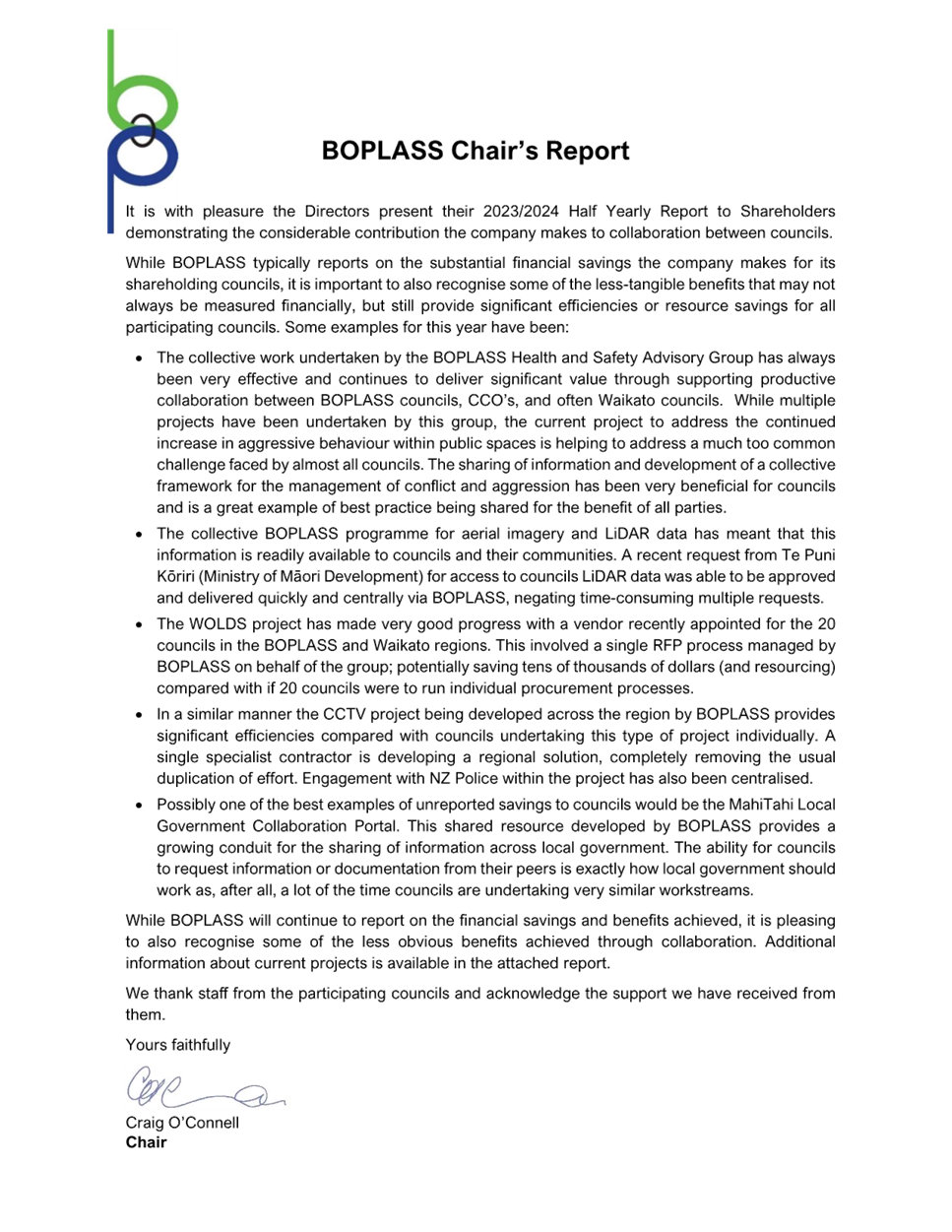
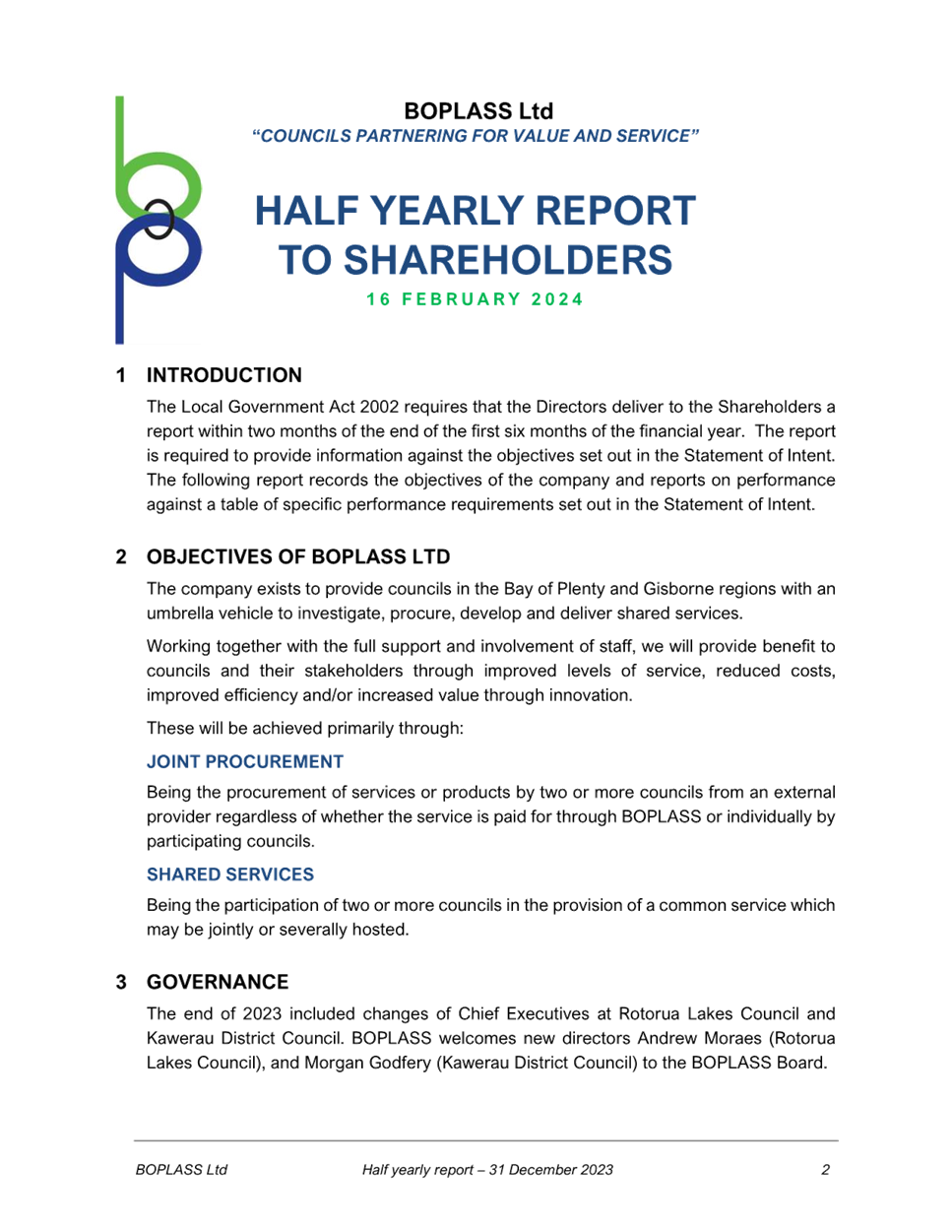

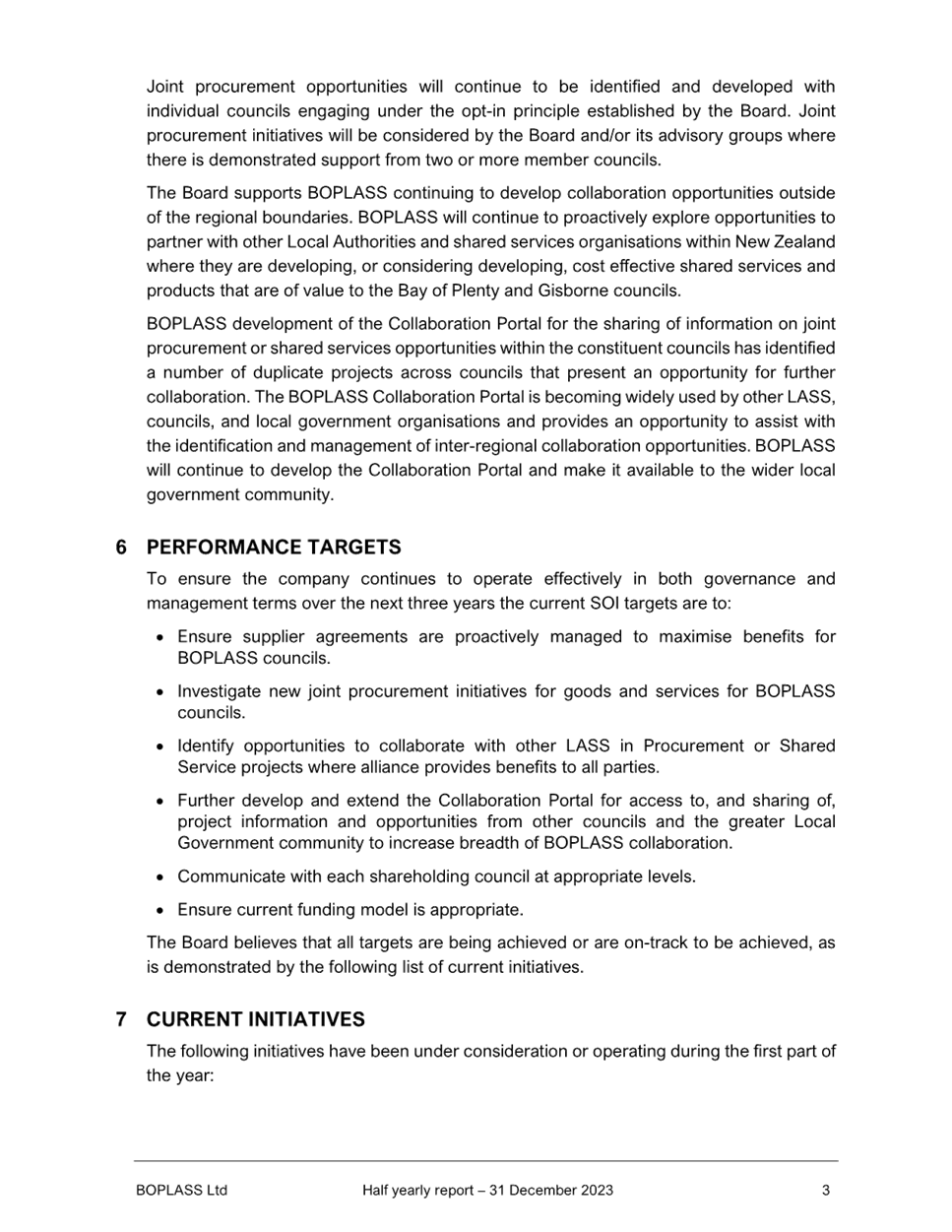
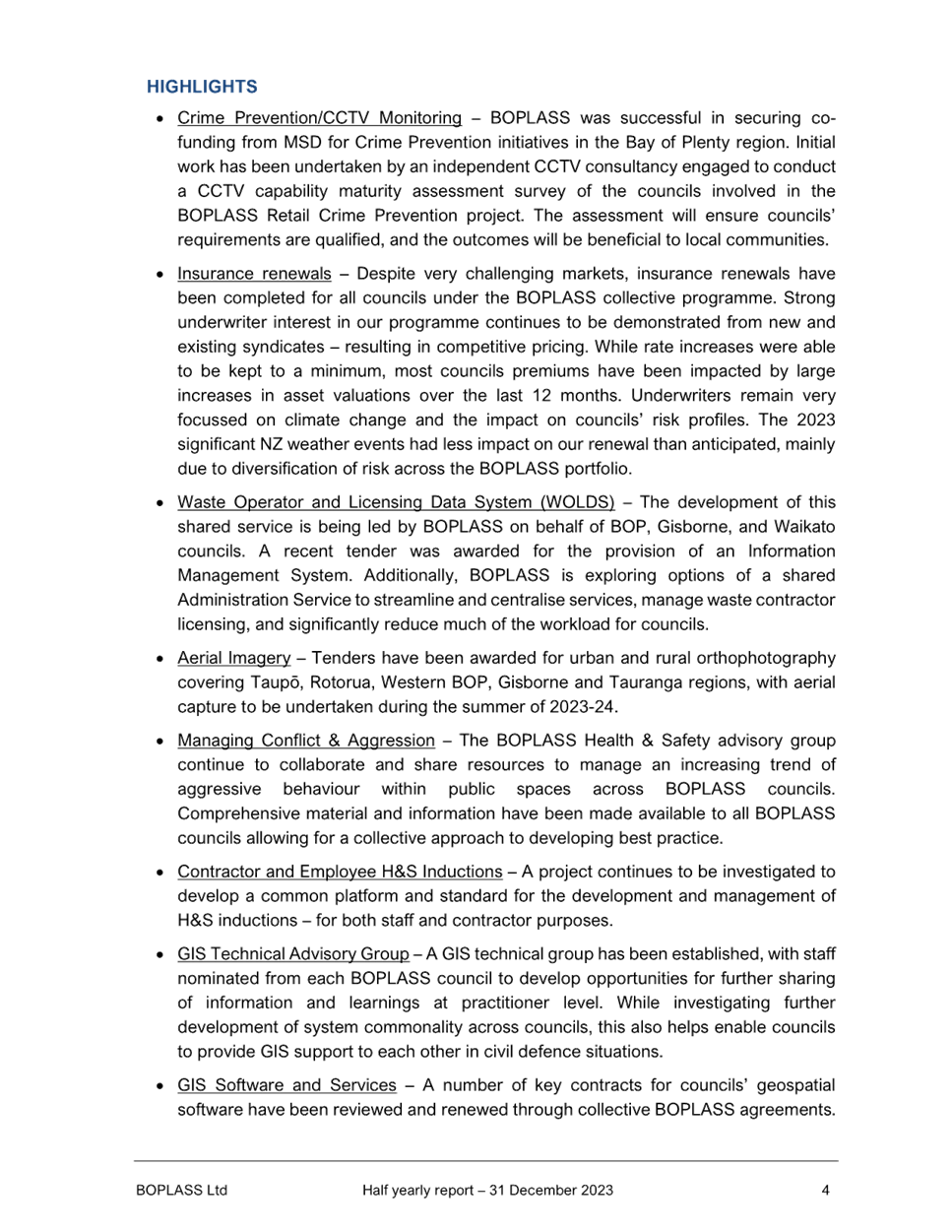
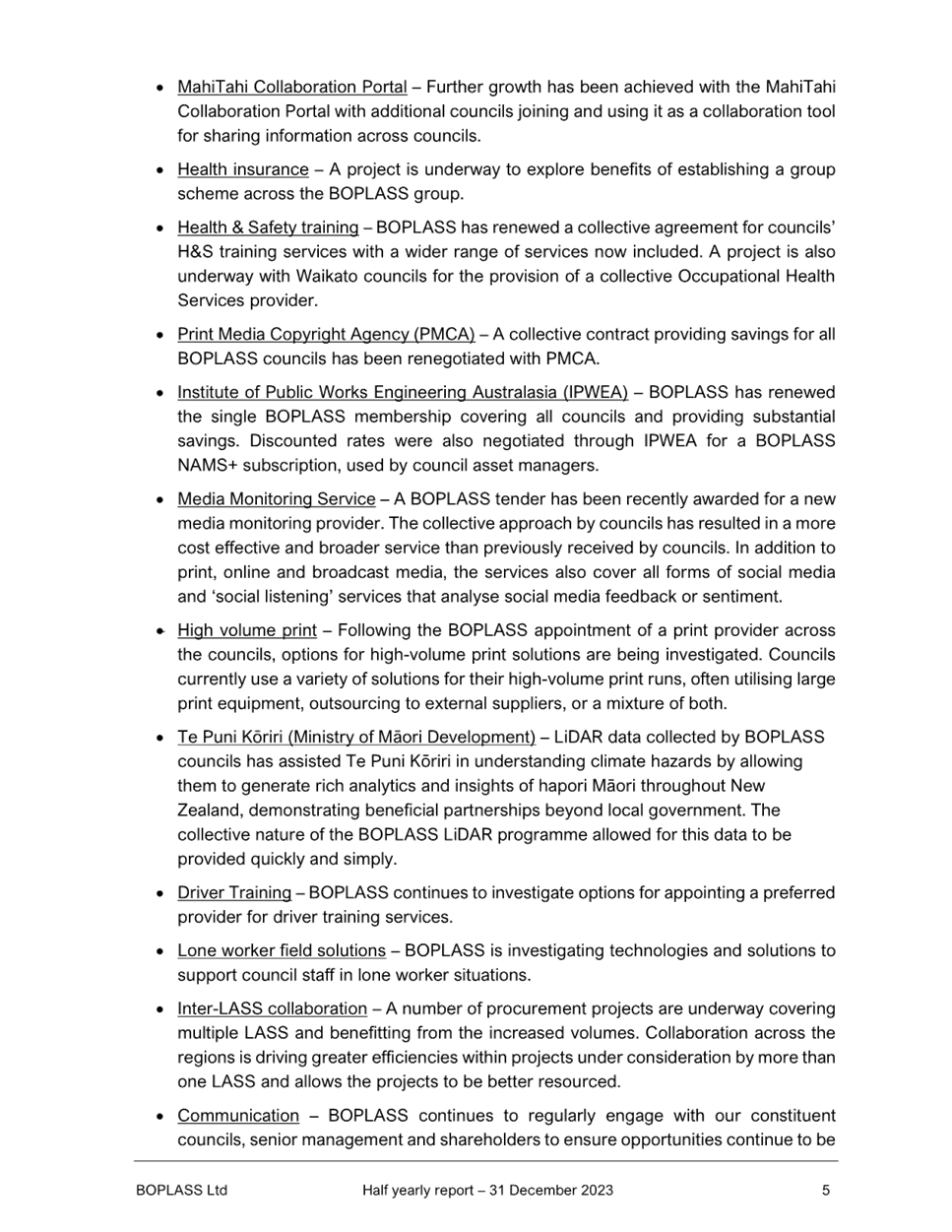
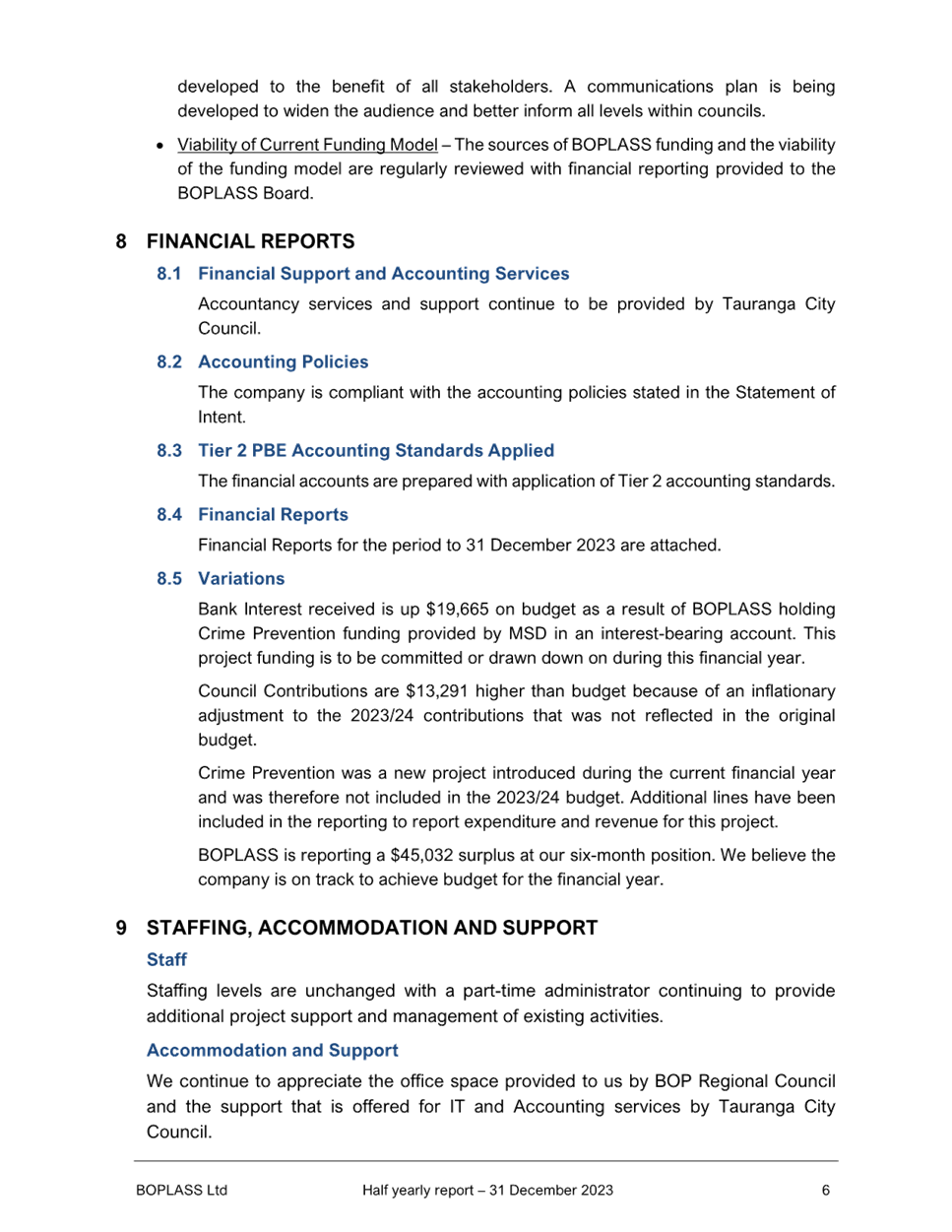
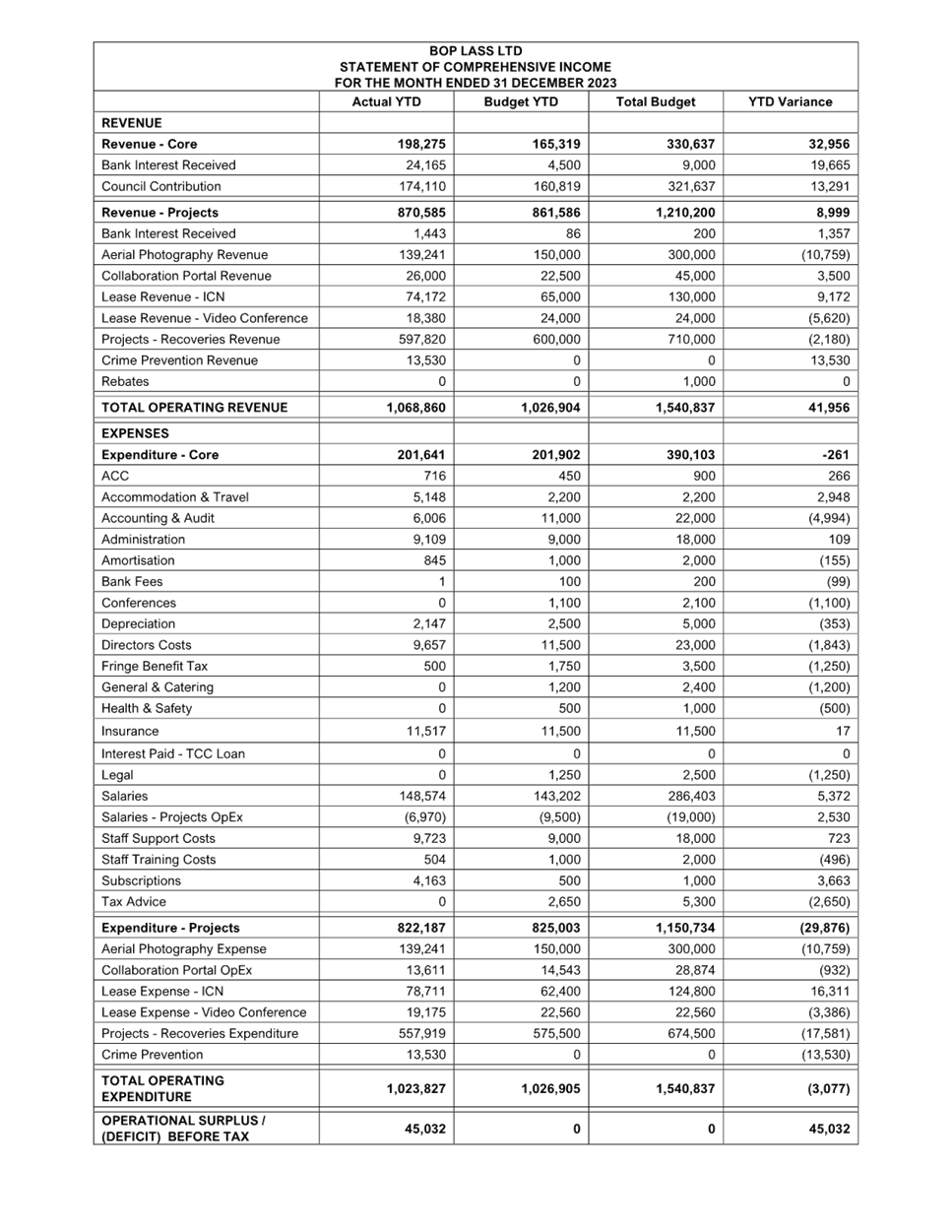
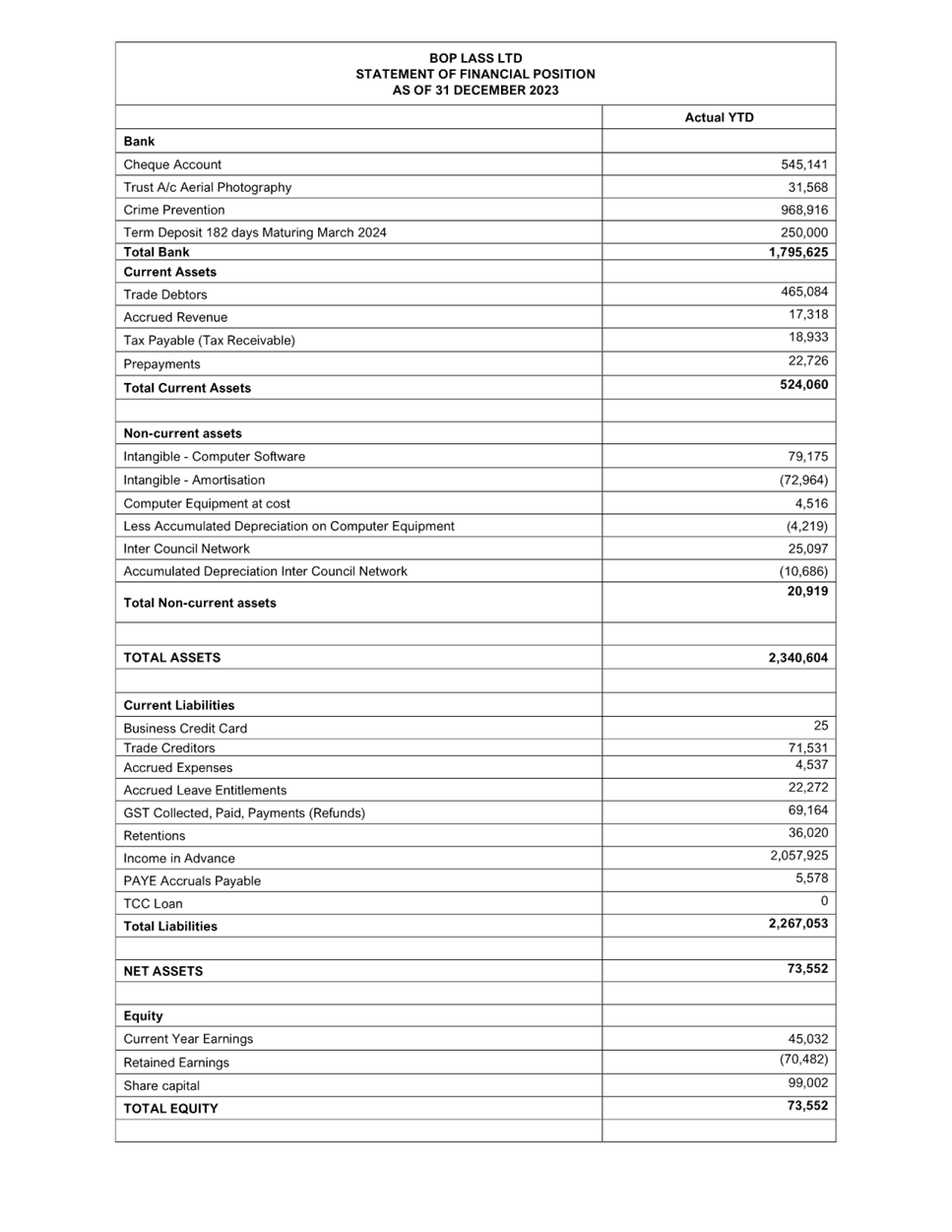
|
Ordinary
Council meeting Agenda
|
8
April 2024
|
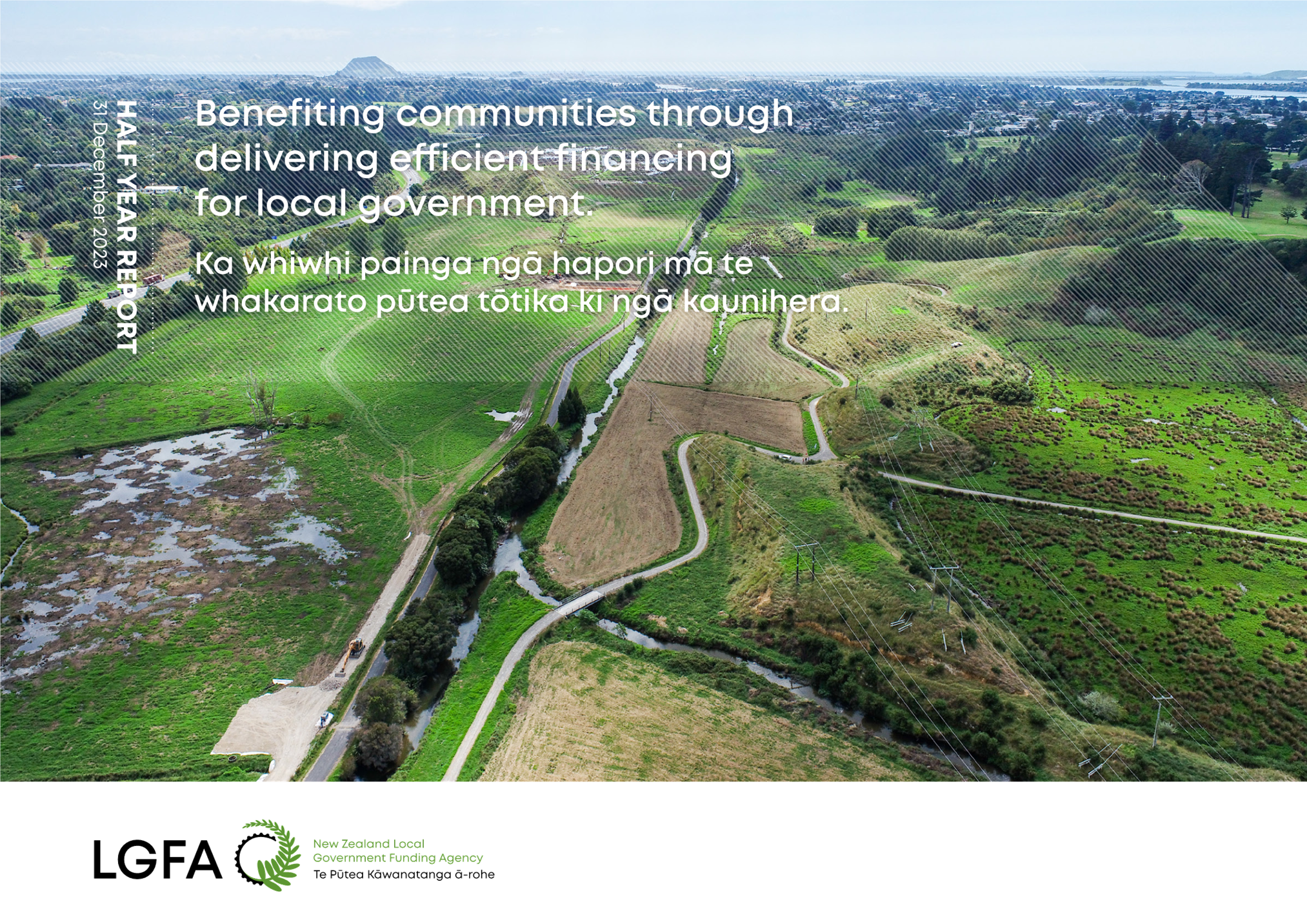

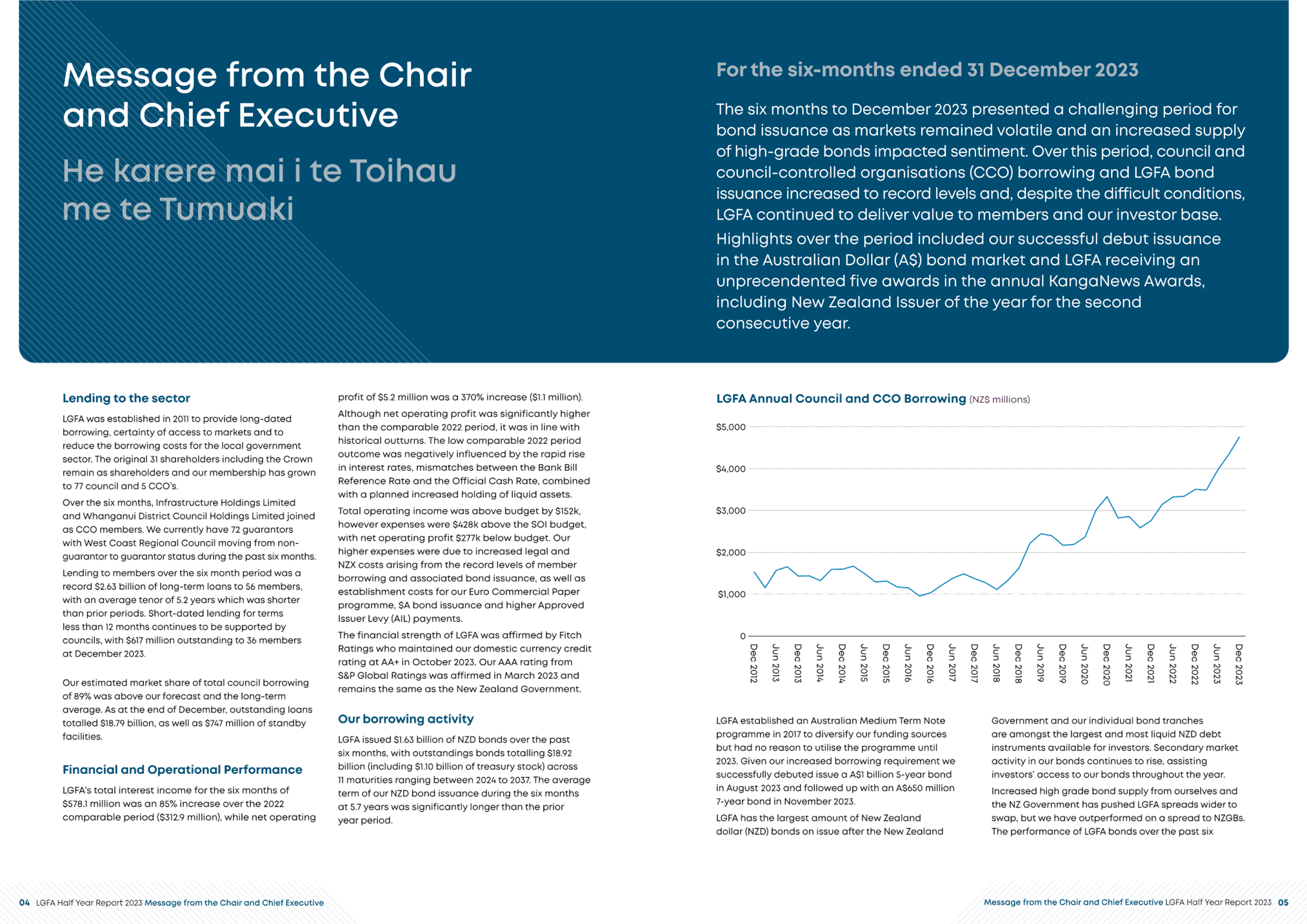
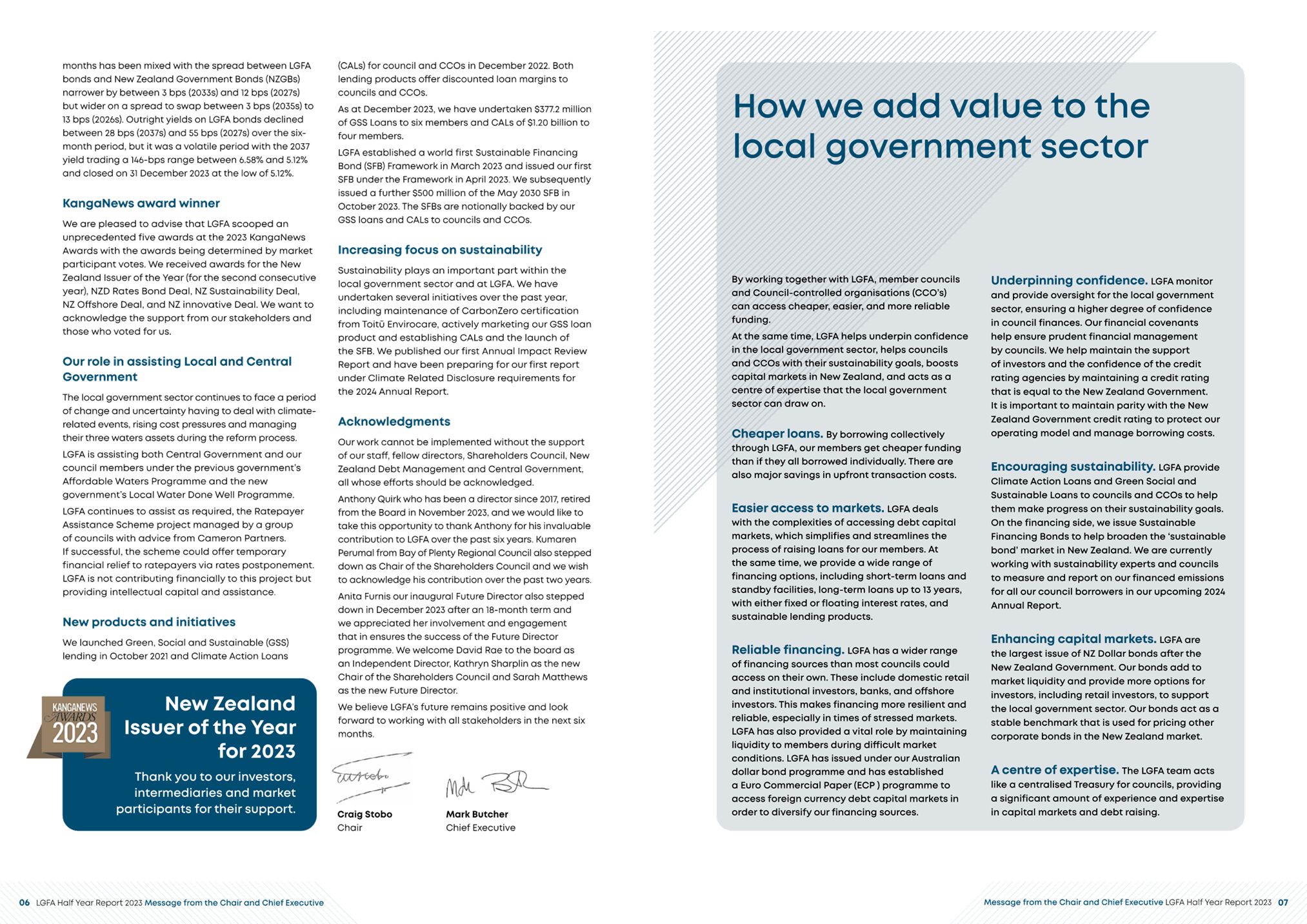
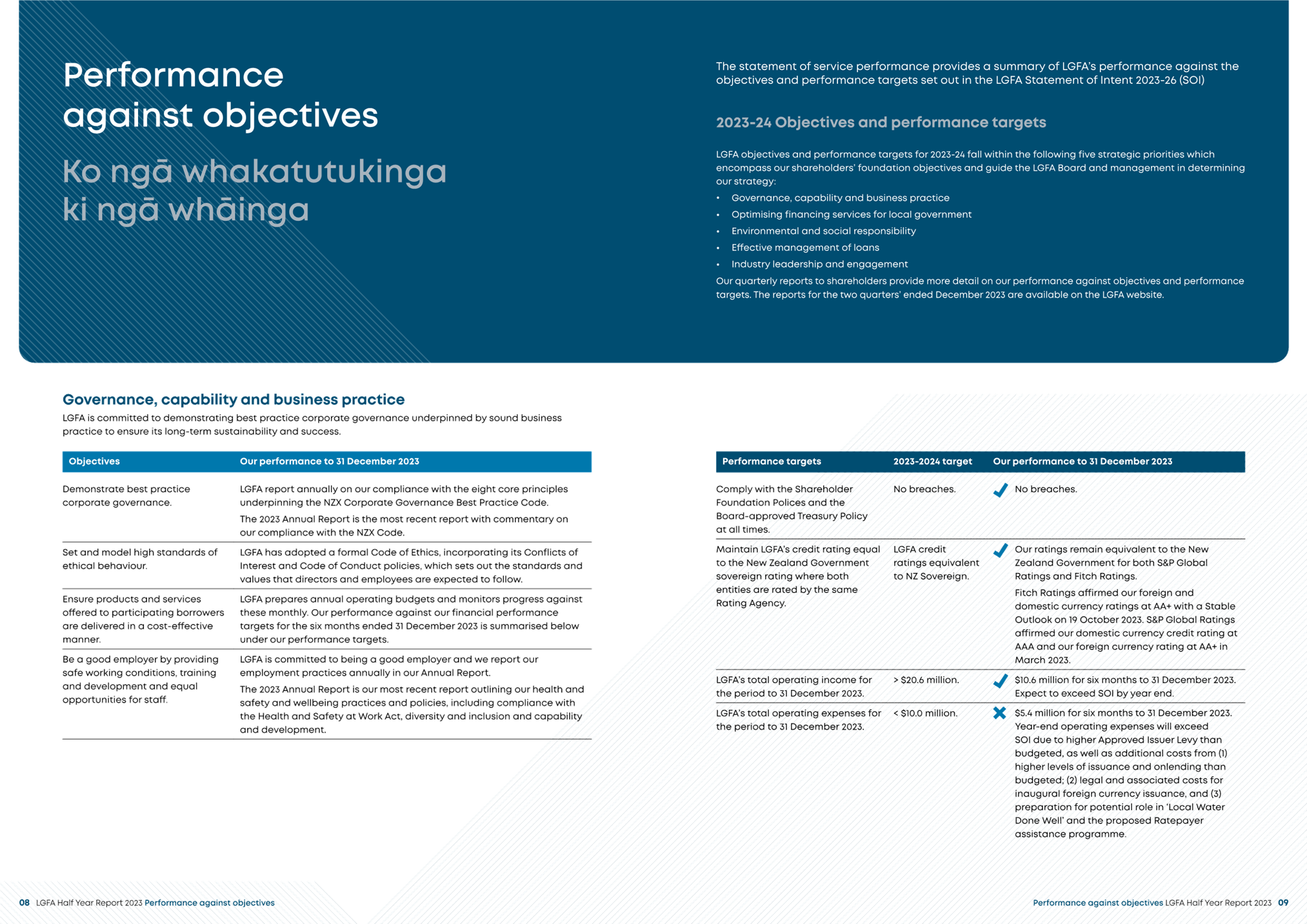
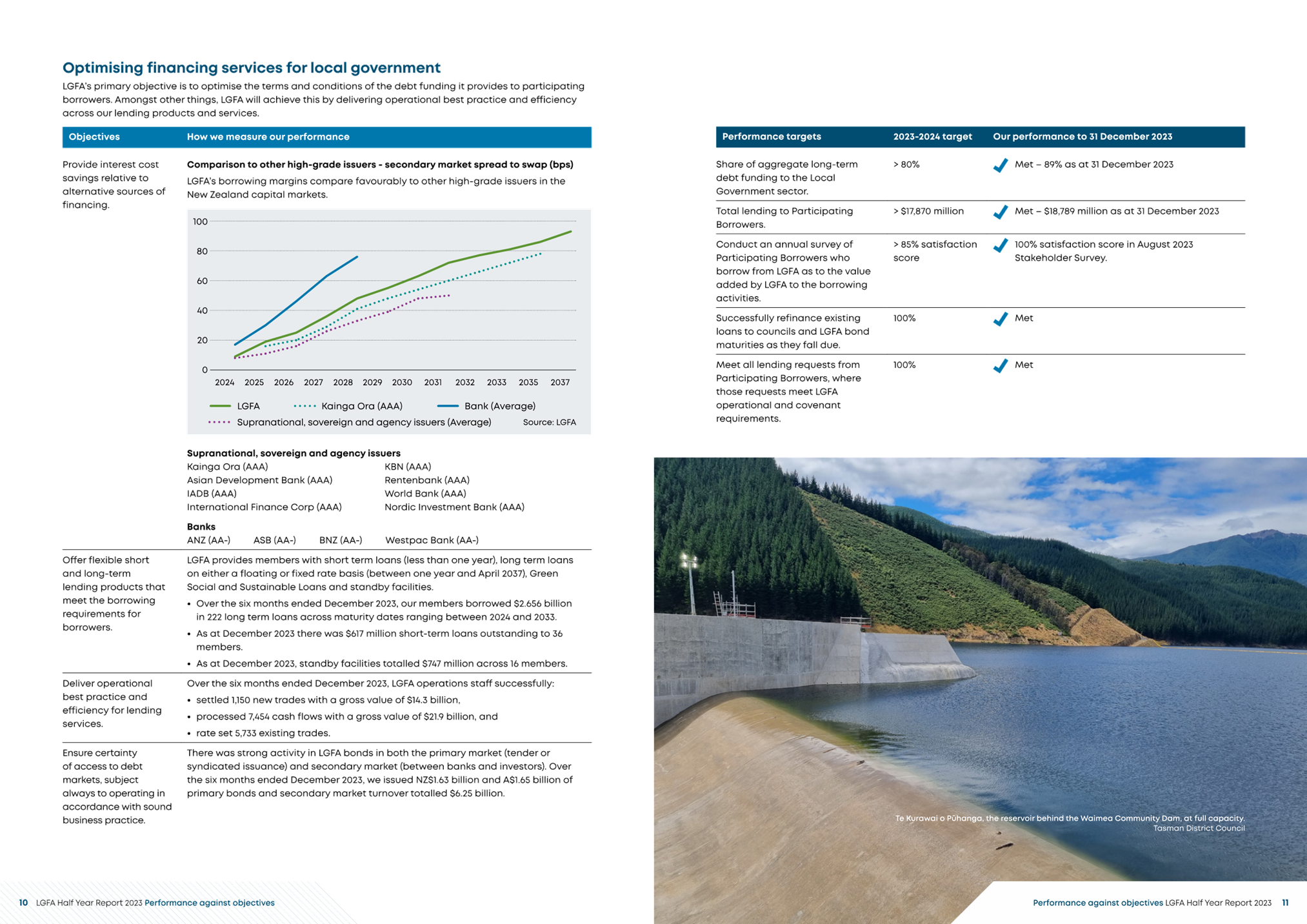
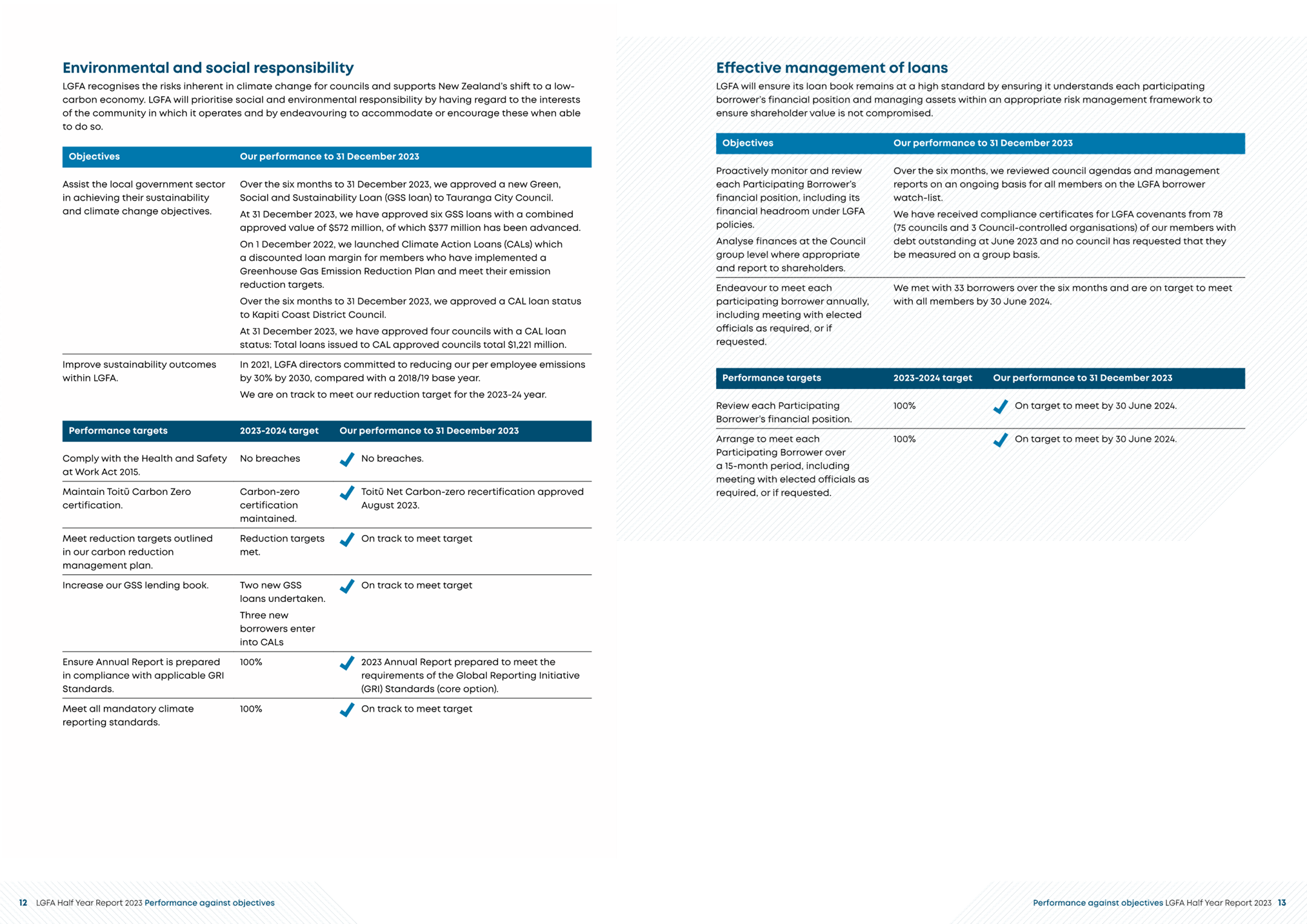
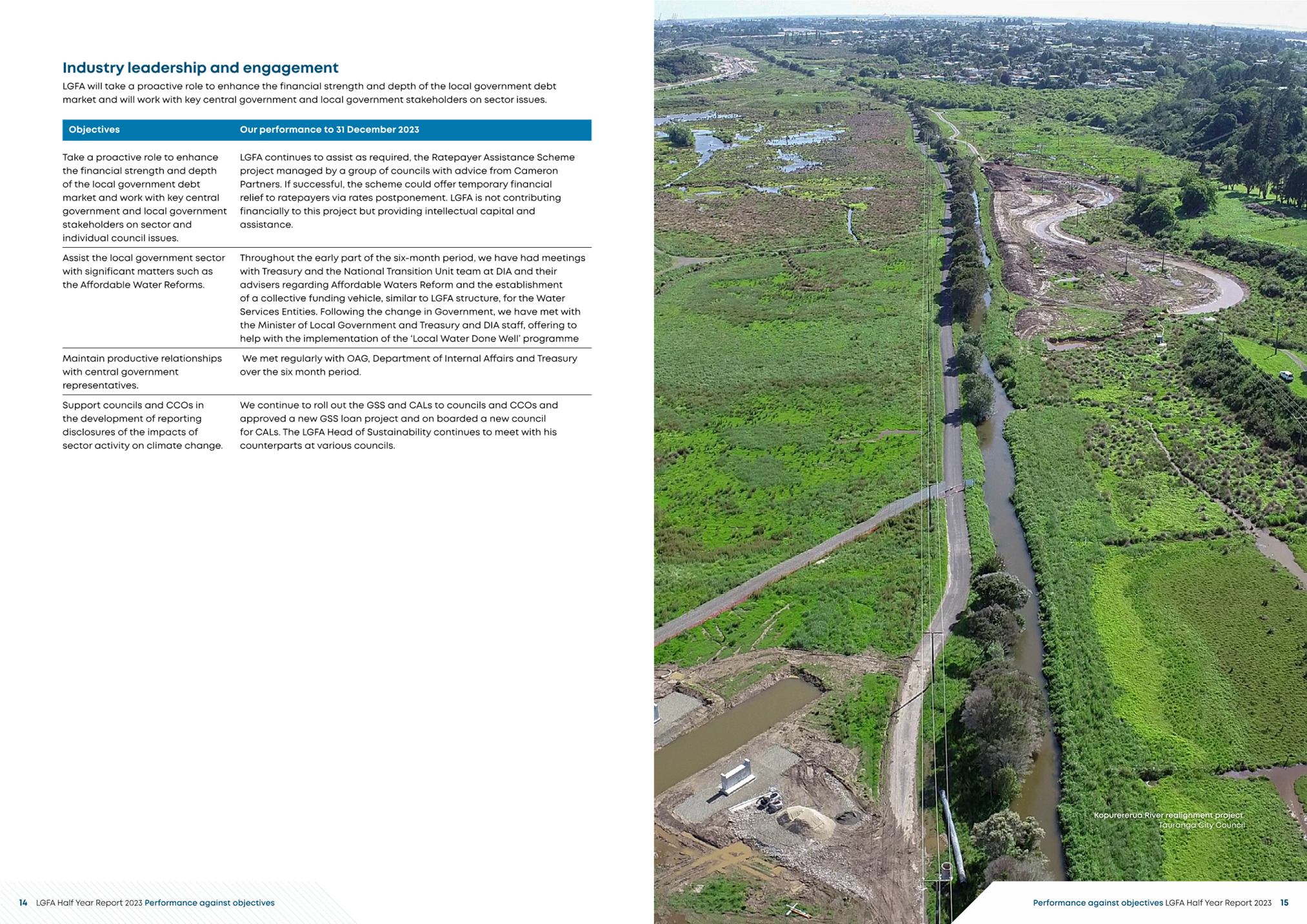
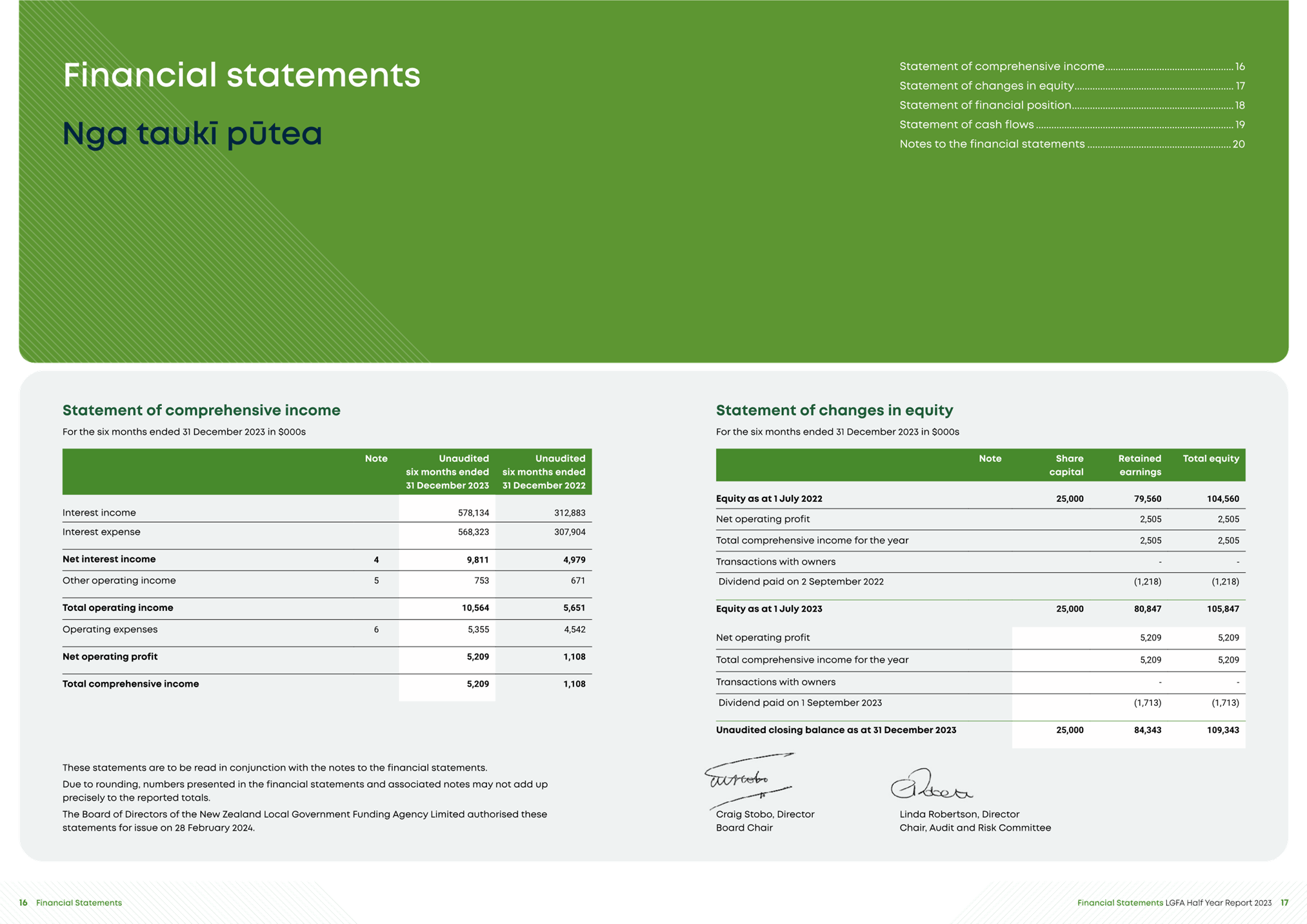
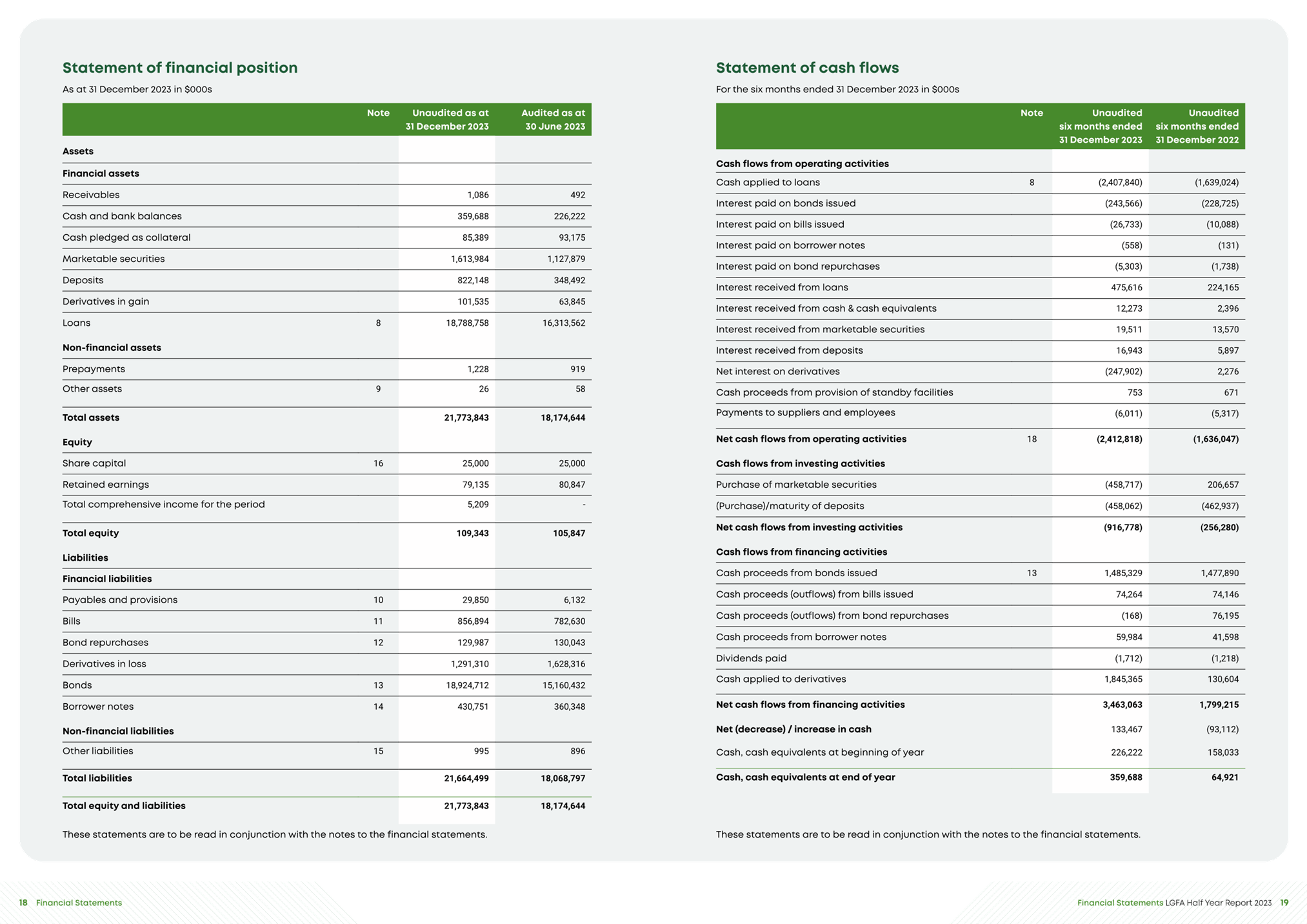
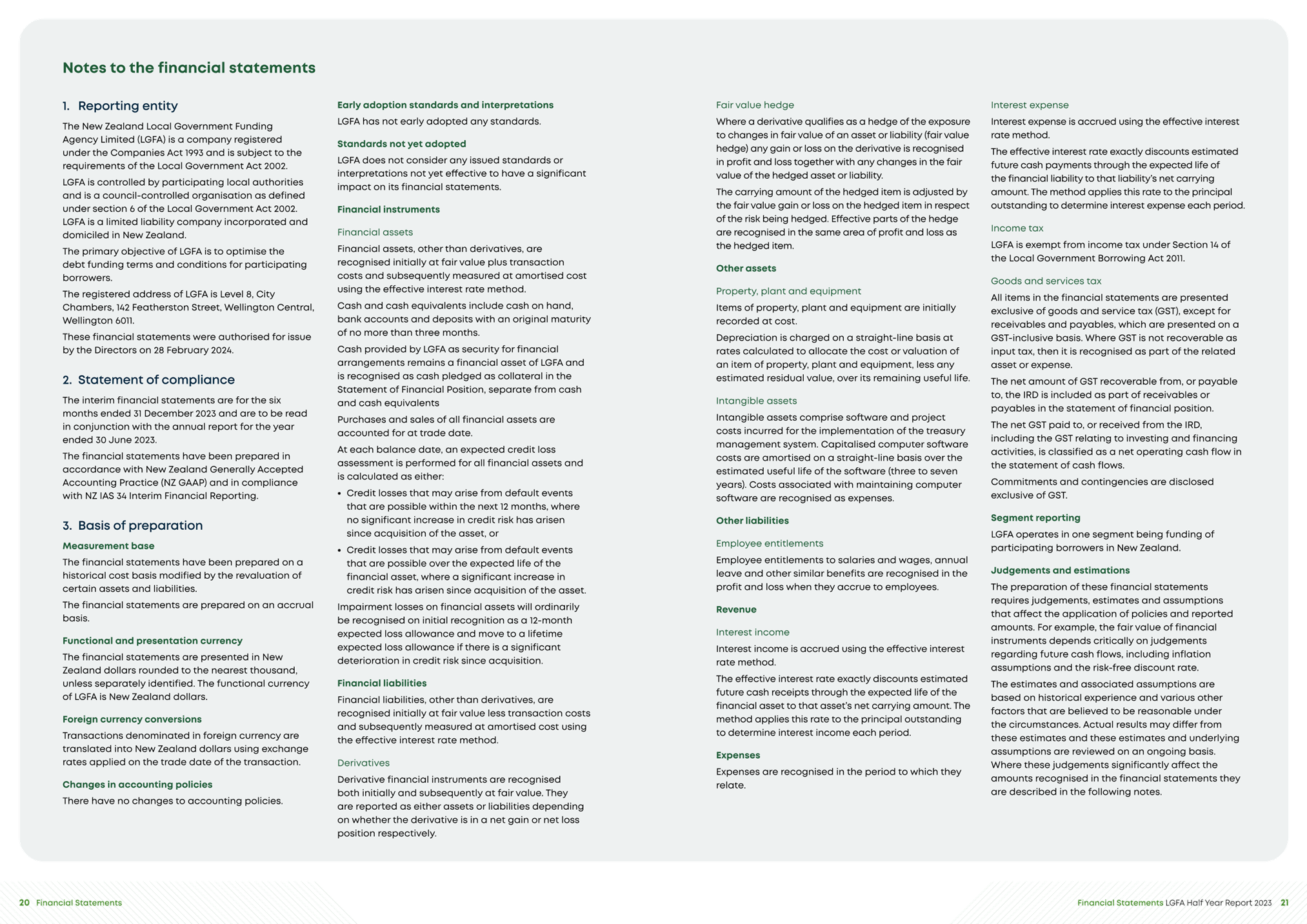
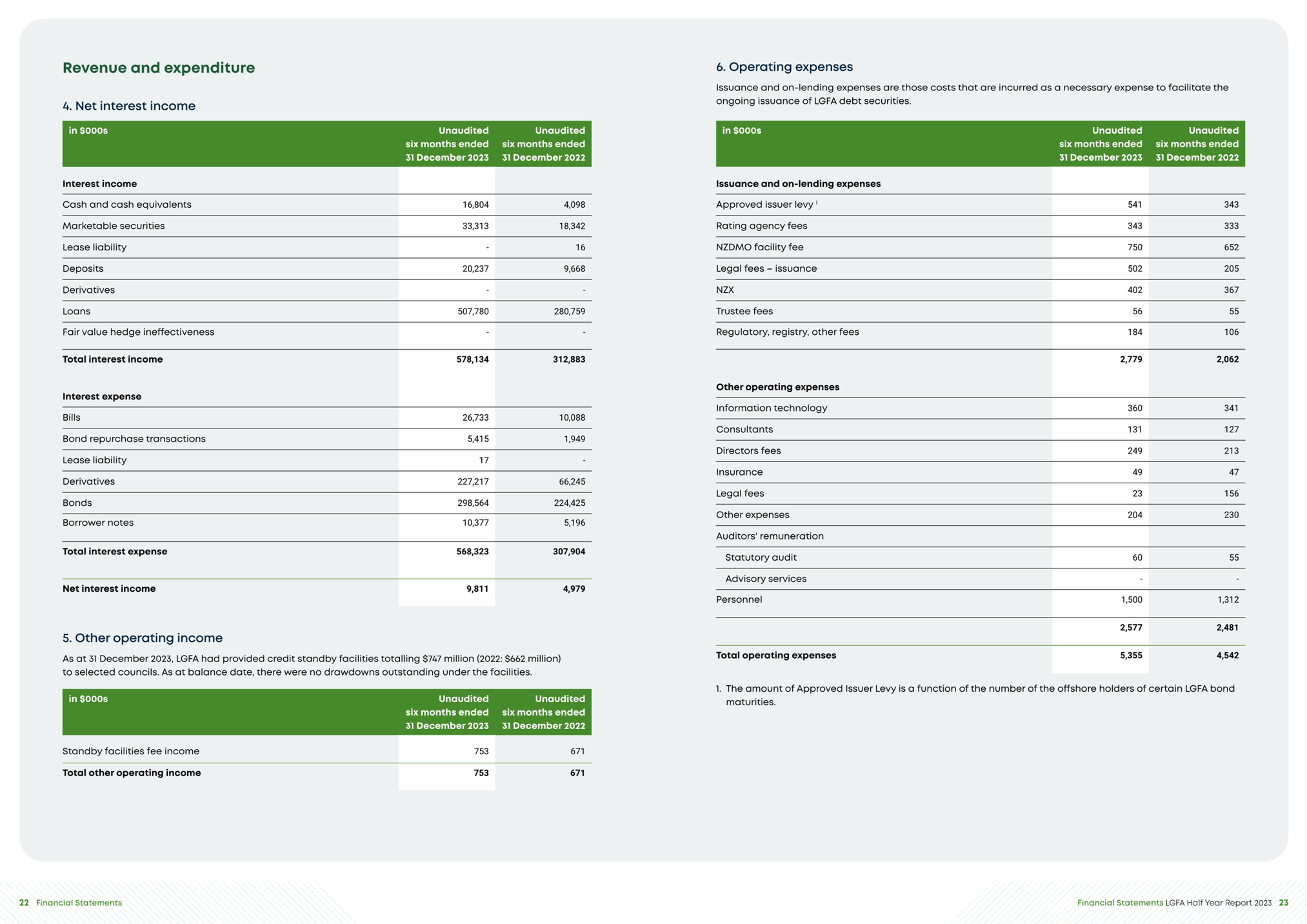
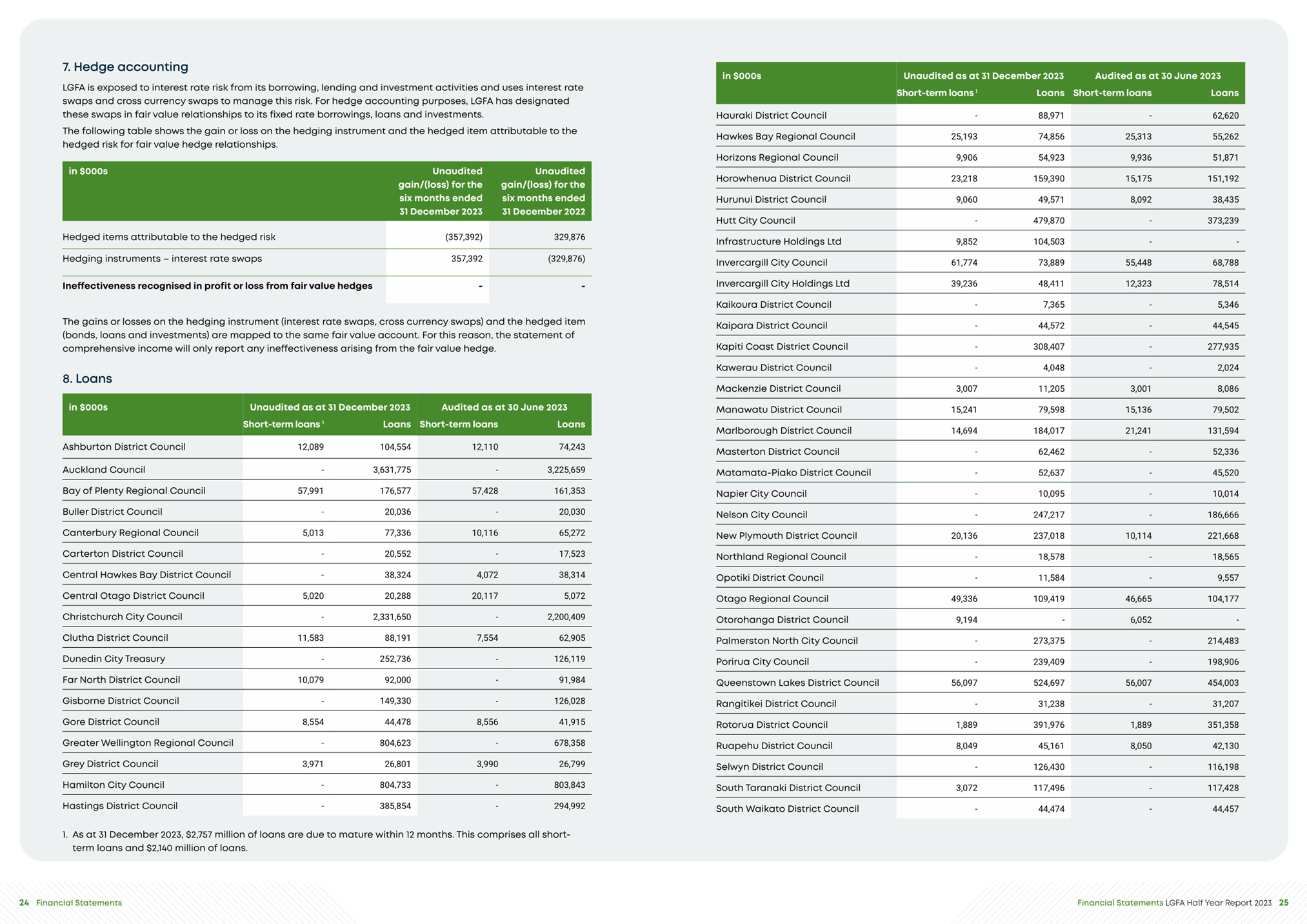
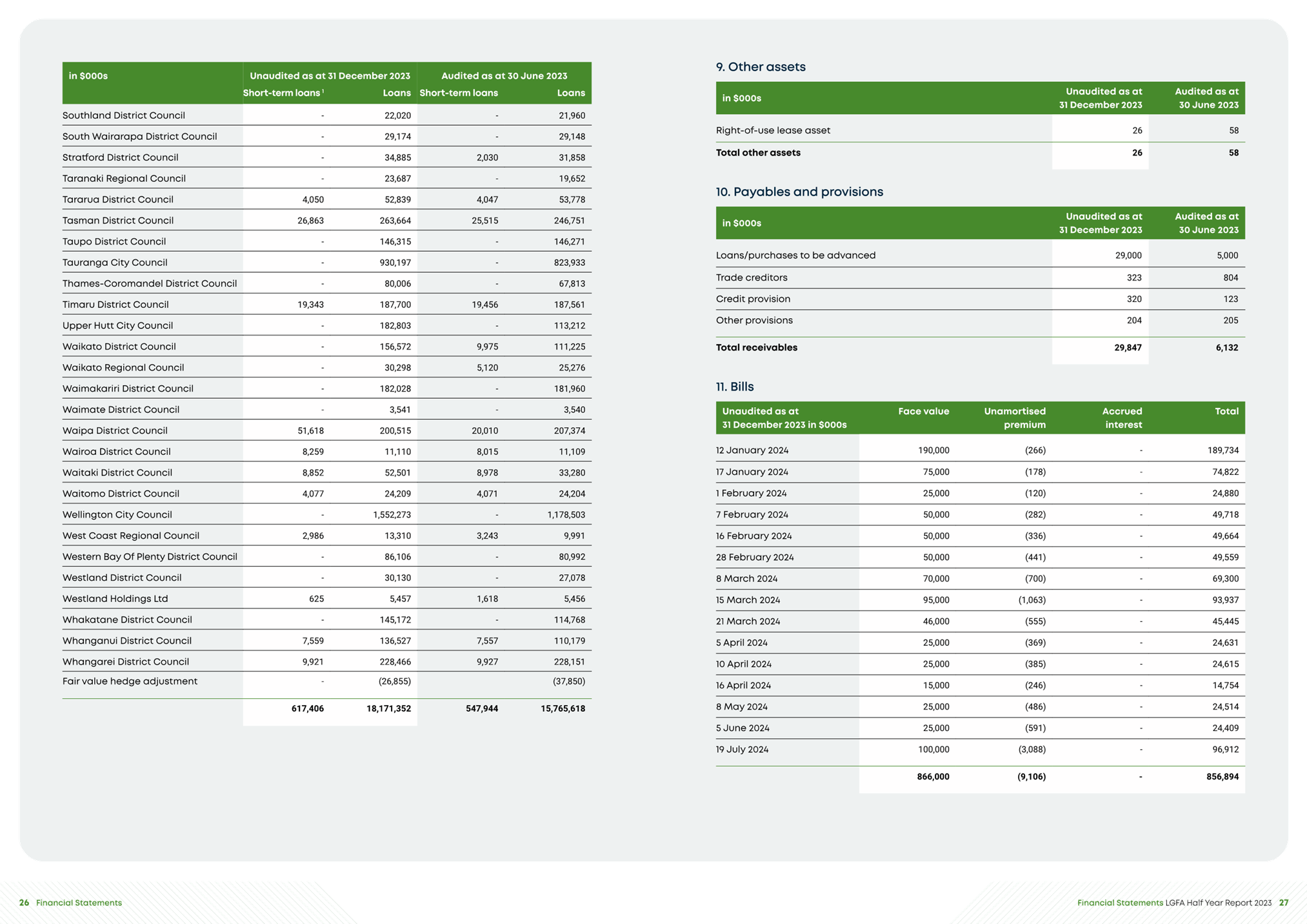
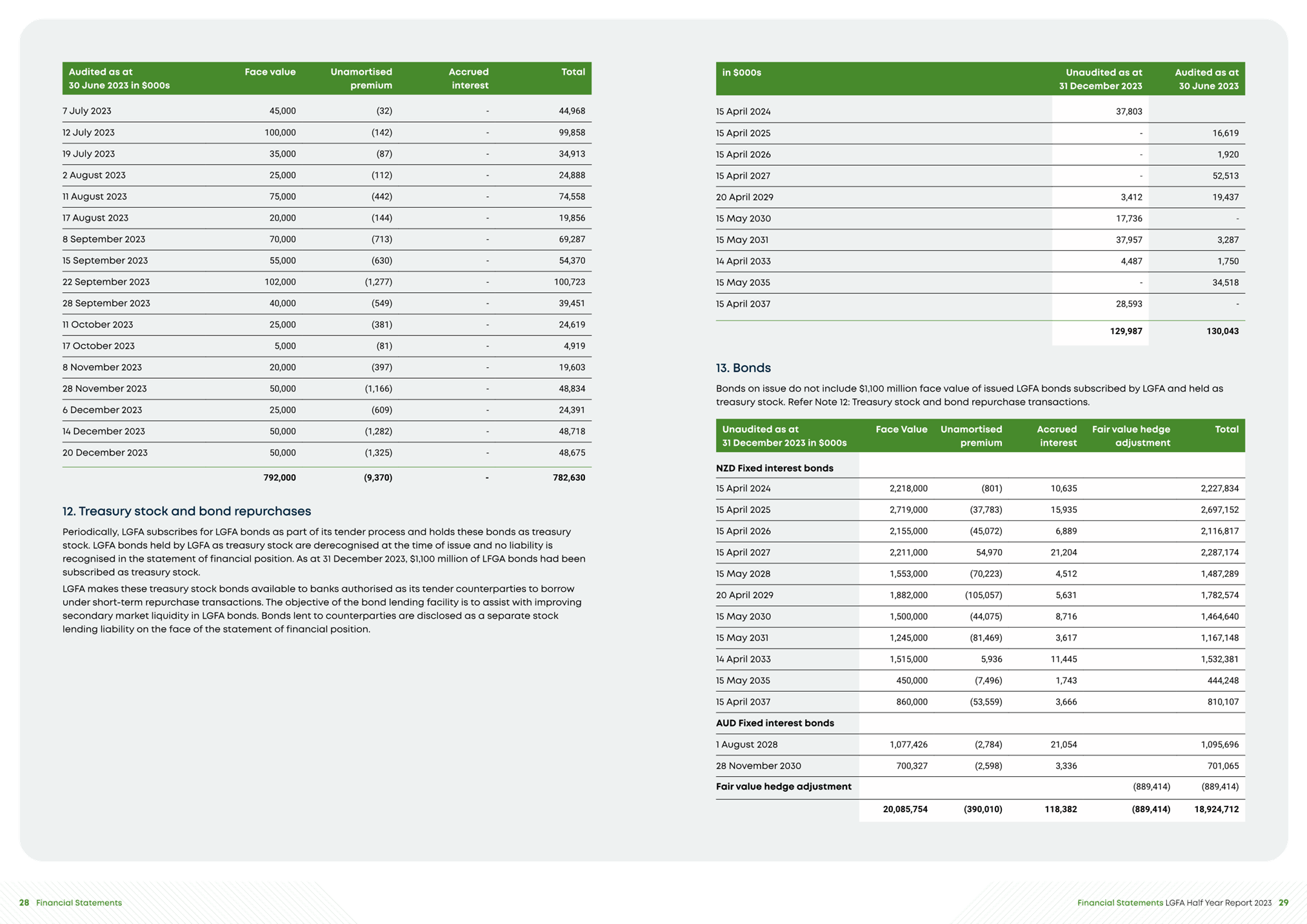
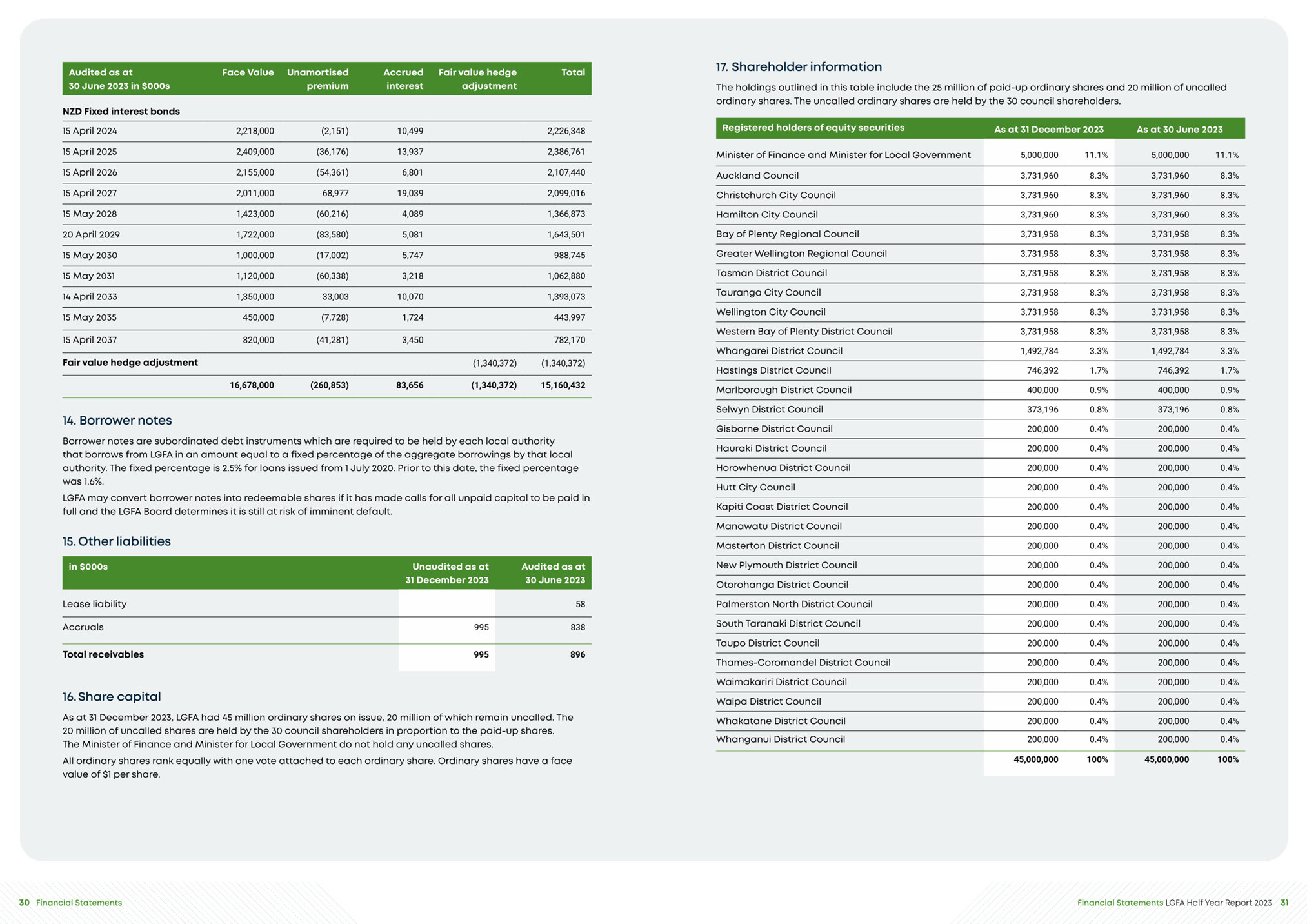
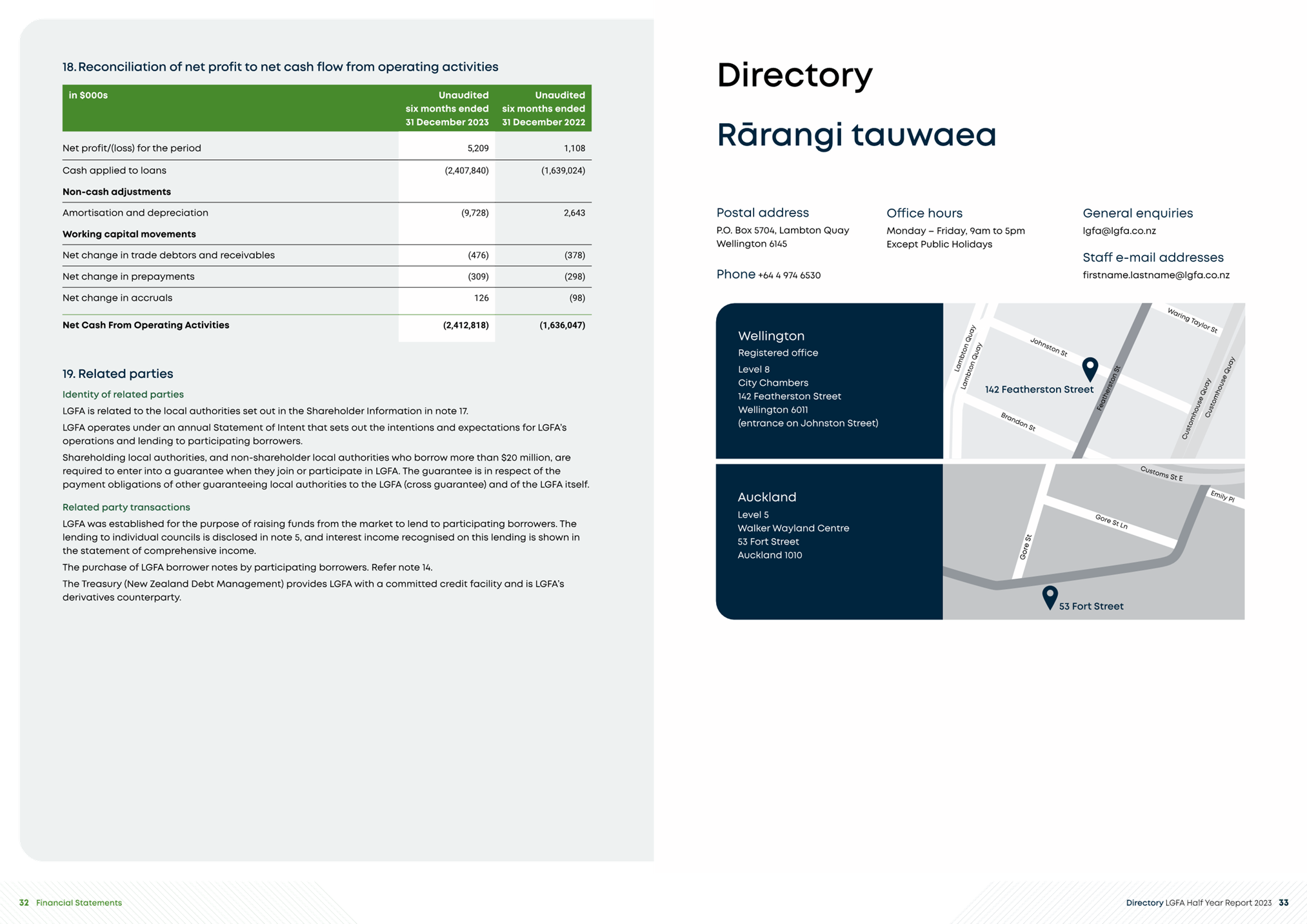

|
Ordinary
Council meeting Agenda
|
8
April 2024
|
11.2 Adoption
of Arataki Park Concept Plan
File
Number: A15501389
Author: Emma
Joyce, Open Space and Community Facilities Planner
Authoriser: Barbara
Dempsey, General Manager: Community Services
Purpose of the Report
1. To adopt the Arataki Park
Concept Plan noting that it will provide the basis for future development of
the park.
Executive Summary
2. Arataki Park is an
active reserve used primarily for rugby and rugby league. Play spaces are
available on the edge of the fields to provide for informal community
recreation. The park is also home to the Arataki Community Centre, Baywave,
Hato Hone St Johns and Mt Maunganui Plunket. The park is an integral part of
Council’s active reserves network and also serves as a central gathering
point for the Arataki community and mana whenua.
3. In 2021, Council
received a submission from Tātai Ora / Whalers Rugby League requesting
lease of space at the Monowai Street edge of the park for a facility that would
both provide a home for the league club and a space for delivery of community
wellbeing programmes.
4. Following this
request, Council became aware of several other organisations who had a similar
desire to occupy space on Arataki Park, including from Arataki Sports who
previously had their own clubrooms on the park. At the same time, Council
completed a feasibility study that identified the park as the preferred site
for a future youth hub (a youth centre that provides a dedicated. safe
environment for youth/rangatahi to gather, recreate and get access to social
services). Staff were also aware that the community garden at the back of the
park had no current licence to occupy that space.
5. In order to address
these issues, Council embarked on a process to engage park users and the wider
community to develop a concept plan that would provide the basis for the
park’s future development. This report asks Council to adopt the concept
plan to confirm that any future building on the park be for sporting purposes
and the primary home for Arataki Sports Club. In addition, the adoption of the
concept plan gives certainty that the Bayfair Foodbank Garden can continue to
occupy part of the park, subject to a lease.
Background
Issues
6. In order to fairly
address a number of requests from community organisations for space and
facilities on the park, Council commenced a planning process to engage those
organisations and other park users in determining a future plan for the park.
7. Both Whalers and
Arataki Sports noted that the current changing facilities available at the
Arataki Community Centre are inadequate to accommodate the growth in
women’s and junior teams. Both clubs also expressed desire to have a
‘home’ where they could host visiting teams and display club
memorabilia.
8. Arataki
Sports’ original clubrooms were demolished around 2010 when the community
centre became available. The loss of these clubrooms is still felt strongly by
club members who recall that the clubrooms once also provided a safe space for
the area’s young people. Safety and space for young people are key
drivers behind the concept of a youth hub to be located on the park.
Concept Plan process
9. As well as safety,
the concept plan process identified other shared values between the various
interested parties. These included the park being a space for whānau,
being open and accessible and recognition of the park’s history in
providing for sport and the community.
10. These values were reflected in
community feedback that noted that while the park had a primary purpose to
provide for sport and recreation, it was highly valued by the community for its
openness, as a space to be outside, and providing a range of activities.
Final concept plan
11. The final concept plan
recognises the strong hapū and community support for limiting future
buildings on the park and providing a home for the park’s sports clubs.
The primary user of any sports facility would be Arataki Sports acknowledging their
long history at the park and loss of their previous clubrooms. However, both
Arataki Sports and Whalers League acknowledged that they could potentially
share a facility so that both clubs had access to change facilities and the
ability to host visiting teams. The location of the sports facility would be
roughly where the club had their original clubrooms with the entrance off
Monowai Street.
12. No other new buildings would be
developed on the park with any youth hub being developed as an extension to the
existing community centre. This meets the space and open access to the rest of
the park identified as requirements for a youth hub in the feasibility study.
(It is noted that the development of the youth hub is a long-term project). The
concept plan reflects the existing action in the Community Centres Action and
Investment Plan to extend the community centre.
13. Through the concept plan
process, we were able to build a better relationship with the team who manage
the foodbank garden and identify that the area the garden occupies was not
required for a sport and recreation purpose. This allows us to develop an
up-to-date agreement with the garden to allow for their continued use of the
park.
14. Other recommended actions
include upgrades to play spaces, development of additional facilities such as
toilets and providing for better movement through the park connecting the play
spaces and BayWave. Funding to implement these actions will be prioritised from
existing Spaces and Places bulk fund budgets included in the 2024-2044
Long-term Plan.
15. The concept plan does not
specifically identify space on the reserve for Tātai Ora. This reflects
the purpose of the reserve to provide for sport and recreation, noting that
health and community services could be delivered from other locations. An
expanded community centre or a future sports facility could potentially provide
physical space for community outreach services.
Strategic / Statutory Context
16. The park is classified as a
recreation reserve under the Reserves Act 1977 and further categorised as an
active reserve in the Tauranga Reserves Management Plan (TRMP). This recognises
the key role of the park in providing space for organised sport, particularly
rugby and rugby league. In general, the TRMP is designed to be flexible, rather
than prescriptive, when considering future role of a particular reserve. The
TRMP anticipates the development of concept plans when major changes to
landscape, amenities or facilities are proposed. A concept plan for Arataki
Park was desired to address multiple conflicting requests and give some
certainty to existing users as to future use of the park.
17. The TRMP provides for Council
to agree a new license to occupy for the foodbank garden. However, a license to
occupy assumes that the public will continue to have free access to the area.
As the foodbank garden would like to continue to fence their garden, it is more
appropriate to grant a lease under section 73(3) of the Act to enable the
foodbank garden to have exclusive use of their site. We can grant a lease under
this section as the concept plan has shown that the area is not required for
sport and recreation purposes as per the park’s classification. The power
to determine whether a recreation reserve (or part of a recreation reserve) is
not likely to be used for purposes of a recreation reserve and to enter into a
lease has been delegated to Council as the administering authority.
Consultation with iwi hapū and public notification of the proposed lease
is required under the Act, including the opportunity for people to object. The
terms of the lease, including the length, will be negotiated with the garden
with the fee determined by Council’s user fees and charges.
18. The Use
of Council Land Policy defines a community garden as a place where people grow
food for personal use. As the foodbank garden produces food exclusively for the
Tauranga Foodbank, a minor amendment to the policy is required to enable a
lease to be granted. It is proposed to amend the definition to “An area of
land cultivated collectively by a group of people for growing fruit and
vegetables for personal or community use, and not for commercial
gain”.
Options Analysis
19. Council could choose to adopt
or not adopt the concept plan. The advantages and disadvantages of each option
is outlined in the table below.
|
Option
|
Advantages
|
Disadvantages
|
|
1
|
Adopt Arataki Park
Concept Plan
(recommended)
|
· Provides certainty to
current and future users around future use and gives direction on any future
requests for space on the park
· Acknowledges the
community’s desire for the openness of the reserve to be retained
· Provides a coordinated
set of actions to improve the park over time.
· Enables the foodbank
garden to retain its space on the park
|
· Less flexibility to
develop the park.
|
|
2
|
Do not adopt Arataki
Park Concept Plan
|
· Potentially more
flexibility to develop the park.
|
· Likelihood of future
requests to occupy space on the park
· Less certainty for
current park users, including foodbank garden, on their long-term occupation
of space
· Lack of coordinated
direction for the park.
|
Financial Considerations
20. There is no specific funding to
implement the concept plan. However, funding may be made available through
existing budgets for play and community spaces included in the draft LTP. In
particular, funding could be made available from the proposed budgets for new
toilets and implementing the Play, Active Recreation and Sport Action and
Investment Plan as well as upgrades determined through the renewals programme.
As a 30 year plan, it is anticipated that the masterplan will be implemented
over time as budget is made available.
21. At the time of the concept plan
development, Waka Kothahi funding was available to construct the shared path in
front of the pump track and a renewal of the bike rack outside BayWave. This
funding has since become unavailable. Both the path and bike rack have been
included in the concept plan should this funding become available again.
22. A council resolution agreeing
to a lease of land may support Arataki Sports to access external funding to
develop a facility.
Legal Implications / Risks
23. There is a risk that without
the concept plan that Council will continue to receive requests from
organisations to locate a facility on the park.
24. As noted above, a minor
amendment to the policy is required to allow for the foodbank garden as produce
grown at the garden is not for personal consumption.
Consultation / Engagement
25. As well as an initial workshop
with park user groups, 1:1 sessions were held with key park users and
leaseholders. These helped identify key values to inform the concept plan. A
second workshop was held in December 2023 to present the draft concept plan.
Key users were generally supportive.
26. A hui with representatives of
Ngāi Tukairangi and Ngāti Tapu was held in October 2023. Both
hapū expressed support for the wider concept plan development and
providing a home for Arataki Sports at the park. As noted above, hapū
acknowledged that non-sports users had the option to occupy or lease other
space. Hapū noted that while the park has limited cultural significance,
any redevelopment should consider opportunities to better incorporate cultural
narratives into the design.
27. Feedback from the wider public
was received via an online survey run in September and October 2023. The survey
showed strong support for retaining the open feeling of the park and to provide
a home for the park’s sporting groups. Feedback was also received through
consultation on the Mount to Arataki Spatial Plan in support of a facility for
Arataki Sports Club.
28. Staff have also worked with
Transport to ensure transport-led projects such as the shared path and bike
shelter renewal are included in the concept plan and will be developed as
funding is made available.
29. Public consultation, including
consultation with hapū, will be required of any new lease.
Significance
30. The Local Government Act 2002
requires an assessment of the significance of matters, issues, proposals and
decisions in this report against Council’s Significance and Engagement
Policy. Council acknowledges that in some instances a matter, issue,
proposal or decision may have a high degree of importance to individuals,
groups, or agencies affected by the report.
31. In making this assessment,
consideration has been given to the likely impact, and likely consequences for:
(a) the current
and future social, economic, environmental, or cultural well-being of the
district or region
(b) any persons who are likely to be
particularly affected by, or interested in, the decision.
(c) the capacity of the local authority to
perform its role, and the financial and other costs of doing so.
32. In accordance with the
considerations above, criteria and thresholds in the policy, it is considered
that the decision is of low significance.
ENGAGEMENT
33. Taking into consideration the
above assessment, that the decision is of low significance, officers are of the
opinion that no further engagement is required prior to Council making a
decision.
Next Steps
34. Staff will prioritise the
delivery of actions within the concept plan and support Arataki Sports to
develop plans for a facility on the reserve.
35. Larger capital projects would
be developed for consideration through a future Long Term Plan process.
Attachments
1. Arataki
Park Concept Plan - A15590123 ⇩ 
|
Ordinary
Council meeting Agenda
|
8
April 2024
|
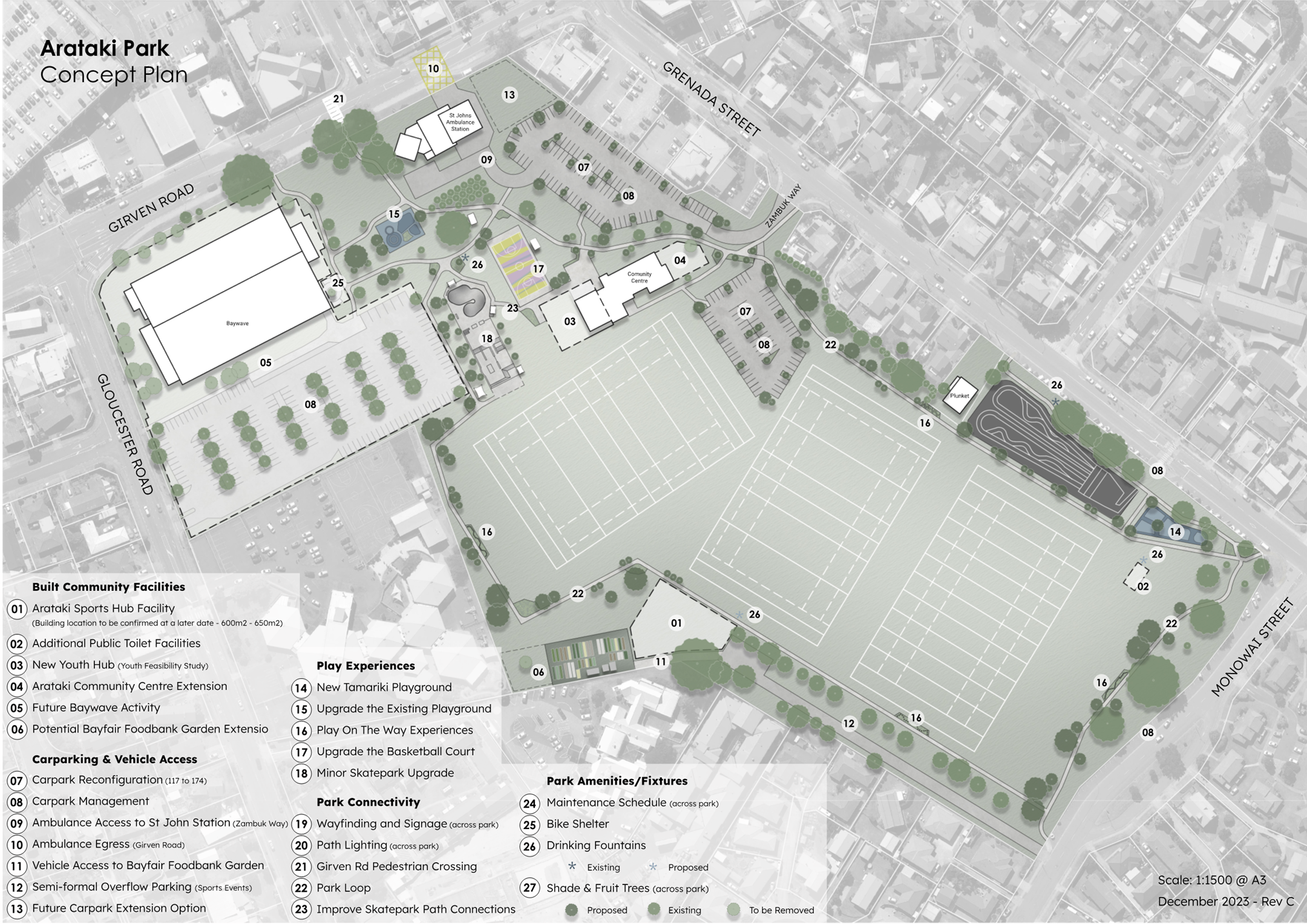
|
Ordinary
Council meeting Agenda
|
8
April 2024
|
13 Public
excluded session
Resolution to exclude
the public
|
Recommendations
That the public be
excluded from the following parts of the proceedings of this meeting.
The general subject
matter of each matter to be considered while the public is excluded, the
reason for passing this resolution in relation to each matter, and the
specific grounds under section 48 of the Local Government Official
Information and Meetings Act 1987 for the passing of this resolution are as
follows:
|
General subject of each matter to be
considered
|
Reason for passing this resolution in
relation to each matter
|
Ground(s) under section 48 for the
passing of this resolution
|
|
13.1 - Public Excluded Minutes of the
Council meeting held on 18 March 2024
|
s7(2)(b)(ii) - The withholding of the information
is necessary to protect information where the making available of the
information would be likely unreasonably to prejudice the commercial
position of the person who supplied or who is the subject of the information
s7(2)(g) - The withholding of the information is
necessary to maintain legal professional privilege
s7(2)(h) - The withholding of the information is
necessary to enable Council to carry out, without prejudice or
disadvantage, commercial activities
s7(2)(i) - The withholding of the information is
necessary to enable Council to carry on, without prejudice or disadvantage,
negotiations (including commercial and industrial negotiations)
|
s48(1)(a) - the public conduct of the relevant
part of the proceedings of the meeting would be likely to result in the
disclosure of information for which good reason for withholding would exist
under section 6 or section 7
|
|
13.2 - Western Bay of Plenty Subregion
City Deal
|
s7(2)(i) - The withholding of the information is
necessary to enable Council to carry on, without prejudice or disadvantage,
negotiations (including commercial and industrial negotiations)
|
s48(1)(a) - the public conduct of the relevant part
of the proceedings of the meeting would be likely to result in the
disclosure of information for which good reason for withholding would exist
under section 6 or section 7
|
|
13.3 - Exemption from open competition
- Building Services
|
s7(2)(h) - The withholding of the information is
necessary to enable Council to carry out, without prejudice or
disadvantage, commercial activities
|
s48(1)(a) - the public conduct of the relevant
part of the proceedings of the meeting would be likely to result in the
disclosure of information for which good reason for withholding would exist
under section 6 or section 7
|
|
13.4 - Divestment of Marine Precinct
and Vessel Works
|
s7(2)(b)(ii) - The withholding of the information
is necessary to protect information where the making available of the
information would be likely unreasonably to prejudice the commercial
position of the person who supplied or who is the subject of the
information
s7(2)(h) - The withholding of the information is
necessary to enable Council to carry out, without prejudice or
disadvantage, commercial activities
s7(2)(i) - The withholding of the information is
necessary to enable Council to carry on, without prejudice or disadvantage,
negotiations (including commercial and industrial negotiations)
|
s48(1)(a) - the public conduct of the relevant
part of the proceedings of the meeting would be likely to result in the
disclosure of information for which good reason for withholding would exist
under section 6 or section 7
|
|
|
Ordinary
Council meeting Agenda
|
8
April 2024
|
14 Closing
karakia











































































































